We’re sorry, this site is currently experiencing technical difficulties. Please try again in a few moments. Exception: request blocked


Travel Guide
- Things to Do
- Active Pursuits
- What's New
- Suggested Itineraries
- Entry Requirements & Customs
- Visitor Information
- Getting Around
- Regions in Brief
- The Lay of the Land
- Calendar of Events
- Special-Interest Vacations
- Getting There
- Tips on Accommodations
- Health & Insurance
- Sustainable Travel & Ecotourism
- Tips for Families
- Tips for Gay and Lesbian Travelers
- Tips for Senior Travelers
- Tips for Single Travelers
- Tips for Student Travelers
- Tips for Travelers with Disabilities
- Tips for Women Travelers
- Staying Connected
- Organized Tours
Entry Requirements and Customs in Chile
Passports & Visas
The websites listed provide downloadable passport applications as well as the current fees for processing passport applications. For an up-to-date, country-by-country listing of passport requirements around the world, go to the "Foreign Entry Requirement" Web page of the U.S. Department of State at http://travel.state.gov .
Citizens of the United States, Canada, the United Kingdom, Australia, and New Zealand need only a valid passport to enter Chile. Chile charges a reciprocity fee upon entry for Australians and Mexicans.
Before entering Chile, you'll need to fill out a tourist card that allows visitors to stay for 90 days. Do not lose this card, as you will need to present it to Customs when leaving the country. Also, many hotels waive Chile's 19% sales tax applied to rooms when the guest shows this card and pays with U.S. dollars or a credit card. The easiest (and free) way to renew your 90-day stay is to cross the border and return. For $100, tourist cards can be renewed for another 90 days at the Extranjería, Matucana 1223, in Santiago (tel. 600/486-3000 ; www.extranjeria.gob.cl), open Tuesday through Friday from 11am to 2pm (be prepared for excruciatingly long lines), or at any Gobernación Provincial office in the provinces. The extension must be applied for 1 month before the visa's expiration date. Bring the original card, your passport, and photocopies of the two.
Contact the Chilean consulate closest to you for information about children under age 18 traveling alone, with one parent, or with a third party. Child abduction awareness is on the rise, and I've heard of Customs agents preventing parents traveling solo to or from Chile with children. Play it safe and travel with a written authorization by the absent parent(s) or legal guardian granting permission, which must be notarized by the consulate or a reputable notary.
Lost Documents— If you lose your tourist card outside Santiago, any police station will direct you to the Extranjería police headquarters for that province (usually the nearest principal city). In Santiago, go to the Policía Internacional, Departamento Fronteras, General Borgoña 1052 (tel. 2/565-7893 ), open Monday through Friday from 8:30am to 12:30pm.
If you lose your passport, you can get a passport replacement at your country's embassy. The embassy might require you to file a constancia with the police, but without Spanish skills, this can be difficult; call ahead and ask if this document can be waived. It is imperative that you carry a photocopy of your passport with you and another form of ID to facilitate the process.
Passports— The websites listed provide downloadable passport applications as well as the current fees for processing applications. For an up-to-date, country-by-country listing of passport requirements around the world, go to the "International Travel" tab of the U.S. Department of State at http://travel.state.gov .
For Residents of Australia— You can pick up an application from your local post office or any branch of Passports Australia, but you must schedule an interview at the passport office to present your application materials. Call the Australian Passport Information Service at tel. 131-232, or visit the government website at www.passports.gov.au.
For Residents of Canada— Passport applications are available at travel agencies throughout Canada or from the central Passport Office, Dept. of Foreign Affairs and International Trade, Ottawa, ON K1A 0G3 (tel. 800/567-6868; www.cic.gc.ca). Note: Canadian children who travel must have their own passport.
For Residents of Ireland— You can apply for a 10-year passport online at www.dfa.ie/passports/ or at the Passport Office at 42-47 Mount Street Lower, Dublin (tel. 01/671-1633 ). Those under age 18 and over 65 must apply for a 5-year passport. You can also apply at 1A South Mall, Cork (tel. 21/494-4700 ) or at most main post offices.
For Residents of New Zealand— You can pick up a passport application at any New Zealand Passports Office or download it from the website. Contact the Passports Office at tel. 0800/225-050 in New Zealand, or log on to www.passports.govt.nz .
For Residents of the United Kingdom— To pick up an application for a standard 10-year passport (5-yr. passport for children under 16), visit your nearest passport office, major post office, or travel agency; or contact the United Kingdom Passport Service at tel. 0300/222-0000 or search its website at www.gov.uk .
For Residents of the United States— Whether you're applying in person or by mail, you can download passport applications from the U.S. Department of State website at http://travel.state.gov . To find your regional passport office, either check the U.S. Department of State website or call the National Passport Information Center toll-free number (tel. 877/487-2778 ) for automated information.
What You Can Bring Into Chile— Any travel-related merchandise brought into Chile, such as personal effects or clothing, is not taxed. Visitors entering Chile may also bring in no more than 400 cigarettes, 500 grams of pipe tobacco, or 50 cigars, and 2.5 liters of alcoholic beverages per adult (ages 18 and up).
What You Can Take Home from Chile U.S. Citizens— Returning U.S. citizens who have been away for at least 48 hours are allowed to bring back once every 30 days $800 worth of merchandise duty-free. You will be charged a flat duty fee for the next $1,000 worth of purchases. Beyond that, any dollar amount is dutiable at whatever rates apply. On mailed gifts, the duty-free limit is $200. Be sure to have your receipts or purchases handy to expedite the declaration process. Note: If you owe duty, you are required to pay upon arrival in the United States by cash, personal check, government or traveler's check, or money order, and in some locations, by Visa or MasterCard.
To avoid having to pay duty on foreign-made personal items you owned before you left on your trip, bring along a bill of sale, insurance policy, jeweler's appraisal, or receipt. Or register items that can be readily identified by a permanently affixed serial number or marking -- think laptop computers, cameras, and CD players—to avoid problems with Customs. Take the items to the nearest Customs office or register them with Customs at the airport from which you are departing. You will receive, at no cost, a Certificate of Registration, which allows duty-free entry for the life of the item. There is little chance that Customs will seriously question personal items, but it's better to be safe than sorry.
For specifics on what you can bring back and the corresponding fees, visit Know Before You Go online at www.cbp.gov . (Click on "Travel," and then click on "Know Before You Go.") Or contact the U.S. Customs & Border Protection (CBP), 1300 Pennsylvania Ave. NW, Washington, DC 20229 (tel. 877/ 227-5511 ).
Canadian Citizens— For a clear summary of Canadian rules, visit the I Declare online guide at www.cbsa-asfc.gc.ca (click on “Travellers,” then “More,” then “I Declare” in the blue box at lower left), issued by the Canada Border Services Agency (tel. 800/461-9999 in Canada, or 204/983-3500).
U.K. Citizens— For information, contact HM Revenue & Excise at tel. 0845/010-9000 (020/8929-0152 from outside the U.K.), or consult the website at www.gov.uk .
Australian Citizens— Can You Bring It In? is a helpful online guide available from the Australian Customs Services at www.homeaffairs.gov.au . For more information, call the Australian Customs Service at tel. 1261/960-196 .
New Zealand Citizens— Most questions are answered on the New Zealand Customs Service website, www.customs.govt.nz . For more information, contact New Zealand Customs, The Customhouse, 17-21 Whitmore St., Box 2218, Wellington (tel. 49/927-8036 or 0800/428-786).
Note : This information was accurate when it was published, but can change without notice. Please be sure to confirm all rates and details directly with the companies in question before planning your trip.

- All Regions
- Australia & South Pacific
- Caribbean & Atlantic
- Central & South America
- Middle East & Africa
- North America
- Washington, D.C.
- San Francisco
- New York City
- Los Angeles
- Arts & Culture
- Beach & Water Sports
- Local Experiences
- Food & Drink
- Outdoor & Adventure
- National Parks
- Winter Sports
- Travelers with Disabilities
- Family & Kids
- All Slideshows
- Hotel Deals
- Car Rentals
- Flight Alerts
- Credit Cards & Loyalty Points
- Cruise News
- Entry Requirements & Customs
- Car, Bus, Rail News
- Money & Fees
- Health, Insurance, Security
- Packing & Luggage
- -Arthur Frommer Online
- -Passportable
- Road Trip Guides
- Alaska Made Easy
- Great Vacation Ideas in the U.S.A.
- Best of the Caribbean
- Best of Mexico
- Cruise Inspiration
- Best Places to Go 2024
Update April 12, 2024
Information for u.s. citizens in the middle east.
- Travel Advisories |
- Contact Us |
- MyTravelGov |
Find U.S. Embassies & Consulates
Travel.state.gov, congressional liaison, special issuance agency, u.s. passports, international travel, intercountry adoption, international parental child abduction, records and authentications, popular links, travel advisories, mytravelgov, stay connected, legal resources, legal information, info for u.s. law enforcement, replace or certify documents.
Before You Go
Learn About Your Destination
While Abroad
Emergencies
Share this page:
Travel Advisory July 17, 2023
Chile - level 2: exercise increased caution.
Reissued with obsolete COVID-19 page links removed.
Exercise increased caution in Chile due to crime and civil unrest.
Country Summary : Street crime (e.g., muggings, pick-pocketing, theft) is common in Chile. Rates of violent crime, such as assaults, homicide, carjackings, and residential break-ins, are increasing.
Large-scale demonstrations periodically occur in Santiago and other cities in Chile. Demonstrations can take place with little or no notice, and often result in disruptions to transportation, including public bus and Santiago metro services.
Read the country information page for additional information on travel to Chile.
If you decide to travel to Chile:
- Do not leave luggage unattended, even in locked vehicles.
- Always carry a copy of your U.S. passport and visa (if applicable). Keep original documents in a secure location.
- Avoid demonstrations.
- Follow the instructions of local authorities including movement restrictions and obey all curfews.
- Find a safe location and shelter in place if in the vicinity of large gatherings or protests.
- Review the Country Security Report for Chile.
- Enroll in the Smart Traveler Enrollment Program (STEP) to receive Alerts and make it easier to locate you in an emergency.
- Follow the U.S. Embassy and Department of State on Facebook , Instagram, and Twitter .
- Prepare a contingency plan for emergency situations. Review the Traveler’s Checklist .
- Visit the CDC page for the latest Travel Health Information related to your travel.
Embassy Messages
View Alerts and Messages Archive
Quick Facts
For the duration of stay
One page minimum for immigration entry stamp is required
Not required for stays of 90 days or less (tourist passports only)
Foreigners who enter Chile as tourists must prove that they have sufficient daily funds of a minimum of $46 USD to cover their expenses. Additional information can be found here
Embassies and Consulates
U.s. embassy santiago.
Avenida Andres Bello 2800, Las Condes Santiago, Chile Telephone: +(56)(2) 2330-3000 Emergency After-Hours Telephone: +(56)(2) 2330-3000 (5pm-8am) Emergency Working-Hours Telephone: +(56)(2) 2330-3716 (8am-5pm) Fax: +(56)(2) 2330-3710 Email: [email protected]
Destination Description
Learn about the U.S. relationship to countries around the world.
Entry, Exit and Visa Requirements
Your passport must be in good condition and valid for the period of your stay. You do not need a visa for a tourist or business stay of 90 days or fewer (if traveling on a tourist passport). Upon arrival, you will receive a Tourist Card (Tarjeta de Turismo) valid for up to 90 days, which you can extend for another 90-day period by paying $100 US at the Chilean Immigration Office . You must return the Tourist Card upon departure. Failure to return it may delay your departure from Chile. If the Tourist Card is lost or stolen, you must replace it at an International Police Office or at the airport before leaving. You will face a fine if you remain longer than allowed, and you will not be able to leave Chile until the fine is paid. If applicable, pay the fine before your departure by going to the Chilean Immigration Office or you may face significant delays.
Travel on Diplomatic or Official Passports: U.S. citizens traveling to or through Chile on diplomatic or official passports are required to obtain a visa before travel.
Entry / Exit Requirements for Dual Nationals: Dual nationals must enter and exit Chile using their Chilean passports, and they must enter and exit the United States using their U.S. passports.
Entry / Exit Requirements for Minors (under 18): Parents traveling with a minor must show evidence of their relationship to the child when entering or departing the country. Carry an original apostilled birth certificate.
Minors departing Chile must submit to Chilean airport officials an original notarized authorization from any non-traveling parent(s), a photocopy of the authorization, and an original apostilled birth certificate at the time of departure. For non-traveling parent(s) in Chile, the notarization can be done by a local Chilean notary public. For non-traveling parent(s) in the United States, the notarization can be done at the Chilean Embassy or a Chilean Consulate . If a U.S. notary executes the authorization, it must be apostilled to be valid in Chile. An apostille should be obtained well in advance of travel as the process is lengthy.
- The Chilean Ministry of Foreign Affairs provides more information on entry and exit requirements for children.
- Visit the Embassy of Chile website for the most current visa information.
- The U.S. Department of State is unaware of any HIV/AIDS entry restrictions for visitors to or foreign residents of Chile.
- Find information on dual nationality , prevention of international child abduction and customs regulations on our websites.
Safety and Security
Demonstrations occur frequently, especially on March 29, May 1 and 21, September 11, and October 18. Although most are peaceful, they can become violent. Avoid demonstrations if possible. Strikes are also common and can cause significant travel delays, especially if you are traveling to remote areas, such as Easter Island, Punta Arenas, or Chiloe.
Anarchist groups have placed explosive and incendiary devices in public spaces throughout Santiago, such as ATMs, metro stations, and government facilities. Remain vigilant and avoid suspicious or unattended packages.
Araucanía Conflict: Some individuals or groups claiming affiliation with the Mapuche indigenous community have sought redress for grievances by burning churches, homes, and pastures, and attacking trucks, buses, and farming/logging equipment, causing property destruction, injuries, and deaths. In 2022, the Government of Chile implemented a State of Emergency in the area that is reevaluated every 15 days. While these groups have mainly targeted forestry corporations and landowners, you should exercise caution in the Araucanía region.
Crime: Street crime, carjackings, telephone scams, credit card fraud, and residential break-ins are common, especially in Santiago, Valparaiso, Viña del Mar, Antofagasta, Calama, and Iquique. Exercise significant caution when touring Cerro Santa Lucia, Cerro San Cristobal, Mercado Central, Plaza de Armas, Bellavista, Yungay, Barrio Lastarria, Persa BioBio, Barrio Meiggs, Patronato, Centro Cultural Estación Mapocho and Los Dominicos in Santiago, or other popular tourist sites as pickpocketing and muggings occur frequently. Small bags and purses have been stolen from hotel lobbies, crowded tourist locations, Santiago’s subway, taxis, and the backs of chairs and floors at bars, restaurants, and cafés. Cell phones are often stolen from restaurant tables. Criminals have drugged and robbed U.S. citizens, leaving them with no memory of events. The murder of a U.S. citizen occurred in 2023 in the neighborhood of Yungay. Carjackings and vehicle thefts are a serious problem in Santiago, Valparaiso, and northern Chile (from Iquique to Arica). Thieves have punctured rental car tires to distract foreigners and steal their belongings from the vehicle.
Additionally, though not typical touring areas, exercise significant caution when traveling through or in Villa Francia, El Castillo, La Victoria, La Pincoya, Bajos de Mena y Mahuidanche, and the municipalities of Cerro Navia, Pudahuel, Quilicura and San Bernardo in Santiago,
In particular:
- Keep all valuables on you when taking buses, especially to or from Calama and San Pedro de Atacama. Thefts are common and are often done by people posing as bus employees.
- Never allow your credit card to be charged outside of your view.
- Do not accept assistance if your clothes are splashed with a wet, sticky substance - keep moving and do not let go of your bags.
- Do not accept any beverages from strangers.
- Do not physically resist any robbery attempt. Criminals rarely work alone, and things are not worth the possibility of physical harm or death.
- Do not display signs of wealth, such as expensive watches or jewelry.
- Use caution when walking or driving at night, especially if alone.
- Do not use unauthorized taxi services. Individuals should use regulated taxis with orange or yellow license plates or ride-share applications. See Travel and Transportation section for more information
- Always carry a copy of your U.S. identification (passport, driver’s license) and visa (if applicable). Keep original documents in a secure location.
- Counterfeit and pirated goods are generally illegal in Chile. Bringing them to the United States may result in forfeitures and/or fines. See the intellectual property section of the U.S. Department of Justice website for more information.
- See the Department of State and the FBI pages for information on scams.
Victims of Crime: Report crimes to the local police at 133 and contact the U.S. Embassy at +(56) 2 2330-3716. Local authorities are responsible for investigating and prosecuting crimes.
See our webpage on help for U.S. victims of crime overseas .
- Help you find appropriate medical care
- Assist you in reporting a crime to the police
- Contact relatives or friends with your written consent
- Explain the local criminal justice process in general terms
- Provide a list of local attorneys
- Provide information on victim’s compensation programs in the U.S.
- Provide an emergency loan for repatriation to the United States and/or limited medical support in cases of destitution
- Help you find accommodation and arrange flights home
- Replace a stolen or lost passport
Domestic Violence: U.S. citizen victims of domestic violence may contact the Embassy for assistance or call local police at 149.
Tourism: The tourism industry is generally regulated and rules about best practices and safety inspections are regularly enforced. Hazardous areas/activities are identified with appropriate signage and professional staff is typically on hand to support organized activities. In the event of an injury, appropriate medical treatment is widely available throughout the country. Outside of a major metropolitan center, it may take more time for first responders and medical professionals to stabilize a patient and provide life-saving assistance. U.S. citizens are encouraged to purchase medical evacuation insurance.
See our webpage for more information on insurance providers for overseas coverage .
Local Laws & Special Circumstances
Criminal Penalties: You are subject to local laws. If you violate local laws, even unknowingly, you may be expelled, arrested, or imprisoned. Furthermore, some laws are also prosecutable in the U.S., regardless of local law. For examples, visit our website on crimes against minors abroad and the Department of Justice website.
Arrest Notification: If you are arrested or detained, ask police or prison officials to notify the U.S. Embassy immediately. See our webpage for further information.
Special Circumstances: Chile is prone to major earthquakes, wildfires, landslides, tsunamis, floods, and volcanic eruptions. The Chilean National Disaster Prevention and Response Service ( SENAPRED ) provides alerts and guidance for these types of events. There are emergency preparedness guides available on the Ready.gov and Federal Emergency Management Agency ( FEMA ) websites. It is important to make a plan and to keep emergency supplies accessible. There are recommendations for preparing a disaster supply kit available here .
Citizens are advised to consult with authorities and/or hotel management if in doubt of the need to leave an area. All U.S. citizens are encouraged to monitor the news closely, including the SENAPRED website.
There are minefields on Chile's border with Peru and Bolivia, and Argentina in Patagonia. Follow clearly identified roads and trails when in minefield areas. Consult with national park or other local officials concerning minefields.
For outdoor and adventure sports along the border with Argentina, Bolivia or Peru, register with Chile’s Dirección Nacional de Fronteras y Limites del Estado , which can provide a permit allowing travelers to temporarily cross borders to engage in outdoor activities.
Despite the best efforts of local authorities, assisting persons lost or injured in isolated and wilderness areas is difficult. You should only undertake organized adventure activities with a well-established and insured company. If you intend to hike, never do so alone and always hire an experienced guide from a reputable company. Inform a family member or friend of your itinerary, including when you expect to return. Register with park officials, when available, or the nearest police station when pursuing outdoor activities in remote areas. Obtain detailed information on hiking trails before setting out and do not venture off marked trails. Distances between centers for outdoor sports and top-notch hospital care can be extreme. You should consider getting medical evacuation insurance.
Before you go, consult:
- Chilean Meteorological Service (weather forecasts)
- SENAPRED (Chilean National Disaster Prevention and Response Service)
- Chilean Forestry Service (national parks and wilderness areas)
- Federación de Andinismo de Chile (mountain climbing)
- Chilean National Tourist Office
Under Chilean law, you can be expelled from the country for damaging national heritage objects or places. Travelers should learn and adhere to all the rules of visiting national parks.
Faith-Based Travelers: See our following webpages for details:
- Faith-Based Travel Information
- International Religious Freedom Report – see country reports
- Human Rights Report – see country reports
- Hajj Fact Sheet for Travelers
- Best Practices for Volunteering Abroad
LGBTQIA+ Travelers: There are no legal restrictions on adult same-sex sexual relations or the organization of LGBTQIA+ events in Chile. Since 2022, under Law 21400, same-sex marriage is legal in Chile. There have been cases of discrimination due to sexual orientation and gender identity, including cases involving violence or death. Laws also prevent transgender persons from changing gender markers on government-issued identity documents.
See our LGBTQIA+ Travel Information page and section 6 of our Human Rights report for further details.
Travelers Who Require Accessibility Assistance: Many public places and transportation are not adapted to accommodate the needs of persons with disabilities. For information on handicap accessible locations in Santiago and other locations, visit the Chilean National Disability Agency or MapCity.com
Students: See our Students Abroad page and FBI travel tips
Women Travelers: See our travel tips for Women Travelers
Medical care in Chile is generally good, though it may not meet U.S. standards in remote areas. Major hospitals accept credit cards. Santiago has one private hospital accredited by The American Hospital Association: Clinica Alemana .
We do not pay medical bills. Be aware that U.S. Medicare does not apply overseas.
Medical Insurance: Make sure your health insurance plan provides coverage overseas. Most care providers overseas only accept cash payments. See our webpage for more information insurance coverage overseas. We strongly recommend supplemental insurance to cover medical evacuation. If traveling with prescription medication, check with the government of Chile to ensure the medication is legal in Chile. Always carry a sufficient supply of your prescription medication in original packaging with your doctor’s prescription.
Please note the following health concerns:
- Dengue Fever (endemic to Easter Island but not found on continental Chile).
- Air pollution is a concern in many parts of Chile including Santiago, Rancagua, Talca, Chillan, Los Angeles, Temuco, Osorno, and Coyhaique, and is most severe in winter (May-August).
- The ozone layer is especially thin over parts of Chile. Protect yourself from ultraviolet radiation.
Vaccinations: Be up-to-date on all vaccinations recommended by the U.S. Centers for Disease Control and Prevention.
Further health information:
- World Health Organization
- U.S. Centers for Disease Control and Prevention (CDC)
Travel and Transportation
Road Conditions and Safety: Driving in Chile is relatively safe; road conditions vary from well-paved to gravel and dirt roads in more remote areas. Roadside assistance is widely available with local insurance. In the more remote parts of Chile, roadside assistance and gas stations may be limited; travel with at least one spare tire and extra fuel. Yellow reflective vests are required in all cars in case of a roadside emergency. Vehicular inspections are required yearly to renew your mandatory car insurance.
Traffic Laws: Driving under the influence of alcohol in Chile is severely punished and can result in incarceration. While in Chile, you may encounter road conditions and traffic laws that differ significantly from those in the United States:
- Right-hand turns are prohibited at red lights unless otherwise posted.
- Major highways in and around Santiago collect tolls with an electronic transmitter (available at http://www.concesiones.cl/)
- Secondary and mountain roads may be poorly maintained, poorly lit, and may lack guardrails.
- Some primary roads to remote tourist attractions are not paved, but are well maintained, with graded gravel.
- Many drivers do not signal lane changes and rarely yield to merging traffic.
- Many drivers exceed posted speed limits, do not maintain safe distances, and do not observe posted road signs.
- Major traffic arteries in Santiago may switch directions during morning and evening rush hours.
- Drivers must carry sufficient Chilean pesos to pay frequent highway tolls.
- Visitors can drive with a valid U.S. license for the duration of their tourist permit (usually 90 days). Renting a car is also possible, although insurance may not be available in some forms for drivers without a Chilean or international driver’s license. Dual nationals and U.S. citizens residing in Chile should have a Chilean driver’s license.
Public Transportation: Taxis and public transportation are generally safe, plentiful, and relatively inexpensive. Ride-share applications and taxis with orange and yellow license plates are generally safe to use. Avoid using unmetered taxis and unauthorized services outside of airports. Use of unauthorized taxi services has resulted in theft. Chile’s Ministry of Transportation maintains a list of registered taxi companies . To use the public bus system in Santiago, you need to obtain the prepaid “BIP” card, which can also be used on the Santiago subway .
- Visit Chile’s Ministry of Transportation’s page on how to safely use taxis .
- See our Road Safety page for more information.
- Visit the website of Chile’s National Tourist Office and national authority responsible for road safety.
Aviation Safety Oversight: The U.S. Federal Aviation Administration (FAA) has assessed the Government of Chile’s Civil Aviation Authority as in compliance with International Civil Aviation Organization (ICAO) aviation safety standards for oversight of Chile’s air carrier operations. Further information may be found on the FAA’s safety assessment page .
Maritime Travel: Mariners planning travel to Chile should also check for U.S. maritime advisories and alerts on the Maritime Administration website. Information may also be posted to the websites of the U.S. Coast Guard and the National Geospace Intelligence Agency (select “broadcast warnings”).
For additional travel information
- Enroll in the Smart Traveler Enrollment Program (STEP) to receive security messages and make it easier to locate you in an emergency.
- Call us in Washington, D.C. at 1-888-407-4747 (toll-free in the United States and Canada) or 1-202-501-4444 (from all other countries) from 8:00 a.m. to 8:00 p.m., Eastern Standard Time, Monday through Friday (except U.S. federal holidays).
- See the State Department’s travel website for the Worldwide Caution and Travel Advisories .
- Follow us on Twitter and Facebook .
- See traveling safely abroad for useful travel tips.
Review information about International Parental Child Abduction in Chile . For additional IPCA-related information, please see the International Child Abduction Prevention and Return Act ( ICAPRA ) report.
Travel Advisory Levels
Assistance for u.s. citizens, learn about your destination, enroll in step.

Subscribe to get up-to-date safety and security information and help us reach you in an emergency abroad.
Recommended Web Browsers: Microsoft Edge or Google Chrome.
Make two copies of all of your travel documents in case of emergency, and leave one with a trusted friend or relative.
Afghanistan
Antigua and Barbuda
Bonaire, Sint Eustatius, and Saba
Bosnia and Herzegovina
British Virgin Islands
Burkina Faso
Burma (Myanmar)
Cayman Islands
Central African Republic
Cote d Ivoire
Curaçao
Czech Republic
Democratic Republic of the Congo
Dominican Republic
El Salvador
Equatorial Guinea
Eswatini (Swaziland)
Falkland Islands
France (includes Monaco)
French Guiana
French Polynesia
French West Indies
Guadeloupe, Martinique, Saint Martin, and Saint Barthélemy (French West Indies)
Guinea-Bissau
Isle of Man
Israel, The West Bank and Gaza
Liechtenstein
Marshall Islands
Netherlands
New Caledonia
New Zealand
North Korea (Democratic People's Republic of Korea)
Papua New Guinea
Philippines
Republic of North Macedonia
Republic of the Congo
Saint Kitts and Nevis
Saint Lucia
Saint Vincent and the Grenadines
Sao Tome and Principe
Saudi Arabia
Sierra Leone
Sint Maarten
Solomon Islands
South Africa
South Korea
South Sudan
Switzerland
The Bahamas
Timor-Leste
Trinidad and Tobago
Turkmenistan
Turks and Caicos Islands
United Arab Emirates
United Kingdom
Vatican City (Holy See)
External Link
You are about to leave travel.state.gov for an external website that is not maintained by the U.S. Department of State.
Links to external websites are provided as a convenience and should not be construed as an endorsement by the U.S. Department of State of the views or products contained therein. If you wish to remain on travel.state.gov, click the "cancel" message.
You are about to visit:

- Huasco Valley
- San Pedro de Atacama
- Elqui Valley
- Antofagasta
- Limarí – Fray Jorge National Park
- Bahía Inglesa
- Alto El Loa
- La Serena and Coquimbo
- Copiapó Valley
- Tagua Tagua – Almahue Valley
- Alto Colchagua Universidad Glacier
- Cachapoal Valley
- Portillo Ski Resort
- Pirque and Maipo Valley
- Aconcagua Valley
- Valle Nevado Ski Resort
- El Colorado Ski Resort
- Curicó Valley
- Maule Valley
- San Antonio/Leyda Valley
- Colchagua Valley and Santa Cruz
- Casablanca Valley
- Viña del Mar
- Cajón del Maipo
- Robinson Crusoe Island
- Rancagua and Sewell
- La Parva Ski Resort
- Rano Raraku
- Llanquihue Lake
- Chillan Ski Resort
- Puerto Montt
- Osorno and Puyehue
- Valdivia and Corral
- Pucón and Villarrica
- Panguipulli
- Temuco and Lago Budi
- Arauco Territory
- Puerto Varas
- Chilean Antarctic Destination
- General Carrera Lake
- Tierra del Fuego
- Coyhaique and Puerto Aysén
- Carretera Austral
- Torres del Paine
- Puerto Natales
- Punta Arenas
- Family recreation
- Coastal beaches
- Lakeside Beaches
- Hot Springs
- Spa and relaxation
- Patagonian cruises
- Lake sailing
- International cruises
- Visits to observatories
- Astronomical facilities
- Indigenous Peoples and Ethnotourism
- World Heritage Sites
- Archaeology
- Paleontology
- Poetry and Literature
- Typical gastronomy
- Gastronomy of the world
- Hiking y trekking
- Skiing and snowboarding
- Mountainbike
- Horseback Riding
- Mountain and rock climbing
- Sport fishing
- Kitesurfing and water sports
- Ice walking
- Overland 4×4
- Paragliding and aerial sports
- Wildlife watching
- Landscape photography
National Parks
- Bird Watching

Updated the day 17 January, 2024
- Entry Requirements
Frequently asked questions
Requirements for entering chile.
As of May 9th, the Protected Borders Plan is no longer in effect. This means that the request for a PCR test and random tests in the entry to Chile are eliminated. A current vaccination certificate will not be required when entering Chile.
Chile opened several of its border crossings for tourists, including Santiago, Iquique, Antofagasta, and Punta Arenas airports. You can check the terrestrial open border crossings here: at this link .
The people who oversee this supervision are the authorities in charge of migratory control at airports, border controls, etc. (Policía de Investigaciones, mainly), and it will take place upon entry registration in the country.
Every foreigner who enters the country as a holder of a temporary residence permit must prove before the control authority that they have the legal means for survival that allow for their stay in the country during the period of validity of their permit, as well as that of people subject to their dependency who accompany them.
The way to prove the amount can be shown in different ways, including cash, a bank account statement, a credit card, etc.
Travelers shall have their Single Entry Form (FUI) , their round-trip ticket, and a reservation at a tourist service registered in SERNATUR or an invitation letter from the Provincial Delegation.
Protocols for your favorite attractions
The new post-Covid-19 tourism will demand strict standards of hygiene and sanitation of spaces, therefore, the invitation is to adopt these recommendations and adopt a new travel culture
PROTOCOLS FOR TOURIST LODGING
WHAT SHOULD TOURISTS DO TO COMPLY WITH THEM?
When you arrive and check-in…
- Observe the social distancing required.
- Allow establishment to take your temperature and disinfect your hands.
- Avoid exchanging papers, brochures, or pencils.
- Prefer digital pre-checking.
- Wear face mask at all times.
- Pay with bank card or via electronic transfer.
During your stay…
- Always remember to wear face mask.
- Wash your hands frequently. The hotel should have areas enabled to wash hands with soap or hand sanitizer gel dispensers.
- Leave keys or cards in the containers provided.
- Prefer activities or meetings in open spaces.
- Notify hotel staff if you have Covid-19 symptoms or suspect you have them.
When going to eat…
- Self-service should be kept to a minimum. Ideally, the tourist should not handle food.
- Ideally, buffet breakfast should not be available. If they cannot be eliminated, make sure that safety measures are available to implement.
Ski Centers
SKI CENTER GOOD PRACTICES GUIDELINES
- Ski centers have special structure and operation features; hence you will find that measures vary based on the activity.
- Observe the instruction of each establishment or activity. If, for instance, you go to a restaurant, the rules will be the same as those that are implemented throughout the country and observing allowable capacity, social distancing, use of face mask, and washing of hands is prioritized.
If you are at the establishment’s ticket office or entrance…
- Prioritize buying tickets online to help minimize overcrowding.
- Observe the minimum recommended distancing.
- Clean your hands. There will be hand sanitizer gel dispensers available in the ticket control area and throughout the center.
- Learn the rules implemented by the establishment.
- Remember to use snow gloves and “face mask type” protection suitable for the location, otherwise you will not be able to enter.
- Allow your temperature to be taken and complete the health self-survey.
- Locker rooms will not be available, arrive ready from home.
- Each center will have sanitization guidelines such as glove disinfection. Observe the instructions of the establishment’s instructors and staff.
Facilities or equipment rental…
- Rental services will only operate if physical distancing and maximum capacity are ensured and if entrances are controlled with unidirectional flow per station.
- Prefer contactless card payment.
- If there is a digital pre-rental plan available, use that option.
- Respect the minimum distancing established.
- Everything must be properly disinfected. You can help by avoiding touching objects with your hands.
Restaurantes and coffee shops
GASTRONOMIC SECTOR PROTOCOLS
WHAT SHOULD TOURISTS DO TO COMPLY?
- Do not enter the premises while at full allowed capacity.
- Let the establishment take your temperature and disinfect your hands.
When sitting…
- You should always wear face mask, but when taking it off to eat you should not leave it on the table.
- Remember that everything will be disinfected and you must observe the distance with whom you are attending. Menu will not be on printed paper.
- Observe the number of people allowed per table.
If you go to the restroom…
- Everything will be disinfected. However, avoid touching handles and faucets directly with your hands.
- Prefer drying with paper towel, which should be available to users.
When leaving…
- Prefer bank card or electronic transfer payment.
- Remember to wear face mask.
- Maintain social distancing and leave through approved exits.
The restaurant must sanitize tables after each customer use and make sure that all utensils are disinfected and ensure kitchen and restroom cleanliness. Ventilation of areas is the restaurant’s responsibility and recommended protocol must be followed in its entirety.
Adventure tourism
GOOD PRACTICES GUIDELINES FOR ADVENTURE TOURISM
WHAT MUST TOURISTS DO TO COMPLY WITH THEM?
In public service offices…
- Observe the number of people allowed inside.
- Make pre-reservations via digital channels or telephone.
- Allow temperature to be taken.
- Avoid exchanging printed material.
- Wash your hands constantly. Disinfectant dispensers should be available in the establishment.
During the activity…
- Notify if you have any Covid-19 symptom.
- If possible, buy travel insurance coverage for the type of activity.
- Number of people per group and capacity as per the recommendations of the health authorities. Observe them.
- Find information on the safety practices and restrictions of the company you are hiring.
- If you are in an enclosed area, remember to wear face mask.
GOOD PRACTICES GUIDELINES FOR CAMPING
Upon arrival…
- Remember that the use of face mask is mandatory.
- Observe the area’s entrances and the instructions provided upon your arrival.
- Wash your hands properly and constantly.
- Keep the recommended social distancing.
- If you made reservations, remember that you should have previously accepted the establishment’s contingency plan terms.
- If you did not make reservations, you will be sent a document electronically on the contingency plan, which you must accept to formalize your stay.
- Prefer electronic transfers or bank card payments.
- If possible, communicate with the person in charge of the campsite by phone to avoid moving around the establishment.
- Observe the posted signs with information on restrictions.
- If the campsite includes dining room or common areas, remember that said areas must be closed if ordered by the health authorities.
- Be aware of health care centers around you and inform the staff if you have any Covid-19 symptoms.
Mice Tourism
GOOD PRACTICES GUIDELINES FOR MICE TOURISM
Meeting venues…
- Everything must be previously disinfected and ventilated.
- Entrances and exists must be defined and restricted if several are available.
- Observe distancing allowed while standing and sitting.
- Observe the number of attendees allowed.
- Wash your hands constantly.
- Avoid exchanging pencils, papers, or folders.
Coffee breaks…
- Avoid exchanging objects with other attendees.
- Everything will be disinfected and utensils will be disposable. Observe this restriction and contribute to its enforcement.
- Remember, always maintain the recommended distancing.
- Upon arrival, allow the establishment to take your temperature and find out about the practices implemented by the venue. Remember that you must fill out a health statement truthfully and report if you have coronavirus symptoms.
Rural Tourism
GOOD PRACTICES GUIDELINES FOR RURAL TOURISM
- Remember to always wear face mask.
- Observe the recommended social distancing.
- Find out about the venue’s rules and read brochures or posters on restrictions.
- Avoid touching the venue’s objects.
- Remember to fill out your health statement online.
- Allow the venue to take your temperature.
If you decide to use rural tourist lodging…
- Do not forget your face mask and hand washing.
- Observe the venue’s restrictions and social distancing.
- Avoid the exchange of printed material.
- If possible, make reservations in advance through websites, social networks, WhatsApp or telephone.
- Prefer bank card or electronic transfer payments.
- If you use keys, place them in their assigned containers.
- Objects such as carpets or cushions will be removed from rooms.
- Observe these changes which are intended to prevent the spread of the virus.
- If you use food services, remember to observe the allowed capacity.
If you use trails…
- Ask what tours, circuits, and activities are allowed.
- Observe the frequency established for their use.
- Remember the maximum number of people allowed per tour and observe that restriction.
Tour guides
GOOD PRACTICES GUIDELINES FOR TOUR GUIDES
WHAT MUST TOURISTS KNOW?
- Tour guides operating independently must decide the tenor of the tour, sanitary measures, regulations, etc.
- Before formalizing your reservation, you must read and accept the implemented regulations and guidelines.
WHAT MUST TOURISTS DO TO COMPLY WITH THESE GUIDELINES?
Before starting the tour…
- You must fill out a document in which you accept the terms of the activity, declare your physical condition, and health history.
- Let them take your temperature and check for coronavirus symptoms.
- Listen carefully to all the information that the tourist guide provides you.
- You should never remove face mask.
- Remember to wash hands constantly. If there are not facilities or hand sanitizer gel available, the tour guide should provide them.
- Observe the number of people allowed per tour.
- Observe all the instructions provided taking into account that if you enter a place it may have different rules. Read them and follow them.
- If you interact with other tourists, remember to keep the recommended social distancing.
- The tourist guide will inform you about health services near the area. Keep them in mind in case of an emergency and tell the tourist guide if you have any Covid-19 symptom.
PROTOCOLS FOR CEREMONIES
- Observe the maximum capacity allowed and find out about the district’s phase where the ceremony is held. The number of people allowed in the venue will be based on that.
- Make sure that the ceremony does not last more than 2 hours.
- Remember that wearing face mask is mandatory at all times.
- Avoid overcrowding and observe social distancing.
- Sanitize your hands frequently.
Swimming pools
PROTOCOLS FOR THE USE OF PUBLIC SWIMMING POOLS
Before arriving…
- Book tickets online or buy them in advance to avoid crowds.
- Make sure that you do not have any symptoms or have not been in contact with anyone that is infected.
- Organize going to a public swimming pool with your closest family group and avoid socializing with other people.
- Avoid bringing too many accessories and implements that can be shared. Bring just the necessary things.
While in the premises…
- Observe the allowed capacity, exits and entrances, and social distancing.
- Do not take face mask off, except when entering the pool.
- Remember that you cannot use slides or games.
- Arrive with swimsuit on, remember that lockers will not be available to change clothes.
- When using restrooms, observe the corresponding queue to avoid overcrowding and remember to wash your hands.
- Do not stay in the pool too long. It will be controlled to avoid overcrowding.
Commerce and services
PROTOCOLS FOR TRADE AND SERVICES ESTABLISHMENTS
- Wear face mask always.
- Observe the site’s recommended physical distancing.
- Prefer bank card payments and sanitize your hands after use.
- Disinfect your hands.
- Allow the venue to take your temperature and check your health upon arrival.
- Observe the venue’s allowed capacity and implemented safety measures.
GOOD PRACTICE GUIDELINES FOR BEACHES
WHAT SHOULD TOURISTS DO TO COMPLY WITH GUIDELINES?
In the area…
- Observe the distance defined by the concession holder. At least one meter, avoiding all physical contact.
- Remember that the use of face mask is still mandatory, except when entering the sea.
- Follow the authorities’ self-care recommendations.
- If you go with children, avoid using the children’s playgrounds and, if they do, clean contact areas before using.
- Hand washing is still permanent even if you are at the beach.
- Clean and disinfect personal items at all times.
- Don’t litter. Discard waste at the assigned areas.
- Remember to bring and take care of cleaning supplies, such as hand sanitizer gel, face mask, and disinfectant wipes. When you leave, do not leave them discarded.
- Avoid sharing lotions or personal items, as well as food or fluids.
- If you buy items, buy them in approved establishments that comply with health protocols and, if possible, pay with bank cards.
- If you use chairs or beach chairs, avoid sharing them and make sure they are properly sanitized.
AIRPORT PROTOCOL
WHAT SHOULD TOURISTS DO TO COMPLY WITH PROTOCOL?
At the terminal:
- The use of face mask is always mandatory.
- Remember to sanitize your hands.
- Observe, in any terminal area, the one-meter distance with a passenger of another group.
- Fill out the Passenger Location Form accurately.
- Enter the passenger terminal alone, with the exception of minors, senior adults, or people requiring assistance.
- Follow the health authorities’ instructions of and obtain information on the venue’s protocols.
Before flying:
- Observe the one-meter distance and floor markings installed for this purpose.
- Distancing between people of a same household will not be required.
- Avoid touching the venue’s handles, devices in place and your face.
- Follow the instructions of aviation personnel.
- Carry the least number of items in your pockets to avoid overcrowding the control area. If this is not possible, keep them in your hands so that they can be quickly placed on trays.
- Queue only if you are called to board.
- Keep at least one meter away from the boarding queue.
After the flight…
- Remove your luggage only when instructed.
Urban parks and aquares
URBAN PARKS AND SQUARES PROTOCOL
Before arriving:
- Coordinate visits and avoid going in large groups.
- Find out about the corresponding allowed capacity of each area you wish to visit.
- If you must buy a ticket, prefer purchases in advance and online.
- If possible, bring your own disinfecting items plus a bottle of water to avoid sharing with others.
On the venue:
- Observe the allowed capacity of each park, trail, or square.
- You cannot remove your face mask, as its use is always mandatory.
- Keep the recommended distance of at least 1 meter between people of a same group and 5 meters between different groups.
- Avoid touching surfaces. If not possible, remember to disinfect your hands and do not touch your face.
- Observe the instructions of each area, such as the use of benches, special exercise areas for seniors, facilities, or safety tapes.
- Do not leave waste in the area. Discard waste in the nearest waste container.
MUSEUM, CULTURAL CENTER, AND ART GALLERY PROTOCOLS
Establishment…
- Prefer buying or booking tickets online.
- Find out sanitary measures of each place and observe them.
- Comply with physical distancing rules.
- Remember to wear face mask at all times.
- Sale and consumption of food is prohibited inside these establishments to prevent visitors from taking off their masks.
- If you enter a coffee shop or store inside the establishment, observe their instructions and protocols.
- Everything must be properly sanitized. Contribute to cleanliness and wash your hands frequently with water or hand sanitizer gel.
- Observe the maximum capacity allowed. If you must wait outside to enter, maintain social distancing and respect the line.
- If you can schedule a guided tour, prefer that option. This way schedules will be maintained and crowds will be avoided.
During your tour…
- Do not remove your face mask.
- Maintain physical distancing.
- Wash your hands frequently.
- Avoid touching objects, handles, or gadgets.
- Observe the instructions provided by tour guides or those posted by the establishment.
- Prefer electronic or bank card payments.
PROTOCOL FOR ZOOS OPEN TO THE PUBLIC
WHAT MUST TOURISTS DO TO COMPLY?
- Do not remove your mask at any time.
- Comply with entry protocol focused on checking your health status. Allow the establishment to take your temperature.
- If possible, bring your own alcohol or hand sanitizer gel plus a bottle of water.
- Prefer groups of few people.
- Observe the instructions and safety measures of each place.
- Maintain a minimum distancing of 1 meter from other groups of visitors.
- If you enter an allowed enclosed area, observe the allowed capacity.
- Keep the allowed distance from animals and observe boundaries.
PROTECTED WILDLIFE AREA PROTOCOLS
- Let the establishment take your temperature.
- You must enter with a face mask and wear it inside the site.
- Help preventing overcrowding.
- Listen carefully to safeguard instructions provided at the beginning of the visit.
- Remember to keep your distance. Two meters recommended for groups or families.
- Your group cannot exceed 15 people.
- Be aware of cleaning and self-care measures.
- Do not have direct contact with park rangers, people from local communities, or others without the mandatory security measures.
- Don’t forget to frequently wash your hands and sanitize your personal items such as backpacks, clothes, bottles or others after the activity.
- You must attend the mandatory prevention induction sessions. They may be online or in person.
- Collaborate with the park ranger’s instructions and safety measures such as taking the temperature.
Facilities…
- Long or difficult trails may be closed to minimize not only contagion risks, but also accidents that could increase the work load of health care systems, police, or firemen.
- When using individual trails, maintain the recommended physical distancing.
- It is very likely that lookouts will be closed since they may be a source of contagion. Observe the instructions of each area you visit.
- If you decide to eat in the destination’s assigned areas, observe physical distancing at each table.
- In case of grills, there will be an allowed capacity to observe distancing.
Astrotourism
GOOD PRACTICE GUIDELINES FOR ASTRONOMY CENTERS AND ASTROTOURISM
Before the tour:
- Book tickets online or by phone in advance.
- Find out about the safety measures and protocols implemented for your experience. Help make sure that everything is observed.
- Face masks are mandatory for the entire experience.
- Maintain a distance of 1.5 to 2 linear meters with another person.
- Observe markings installed at each area. Follow the venue’s rules and safety instructions as well.
- Wash your hands or use hand sanitizer gel when necessary.
- Avoid handling objects.
- Carry and protect your personal and hygiene items.
- Remember to bring warm clothes. Tours are at night and the company may not provide these items to avoid contagion.
- If you visit enclosed facilities, observe the venue’s rules.
- When using restrooms, use disposable paper towels to dry your hands.
- Prefer electronic or bank card payment.
PROTOCOL FOR CASINOS, GAMBLING, AND ENTERTAINMENT ESTABLISHMENTS
WHAT MUST TOURISTS DO TO COMPLY WITH THE PROTOCOL? Inside the venue… • Observe the allowed capacity as well as physical distancing and recommendations issued. • Remember that the use of face mask is mandatory at all times. • Avoid generating agglomerations. • Disinfect hands constantly, especially after handling shared objects. • Find out the stage of the venue’s community. The operation must observe the Step by Step Plan and measures such as venue capacity or operating days may change. • Prefer bank card payments. Slot machines, bingos, and games… • You will only be able to use slot machines that have been sanitized and are not blocked or disabled. • Disinfect hands and objects continuously. Cleaning items for this purpose will be available in these areas. • Disinfect slot machines before use. Disinfecting wipes will be available on site or the staff will provide you with a cleaning kit. • Avoid exchanging tokens and other items. • Observe the venue’s demarcations. • Consumption of food and beverages is prohibited.
Agencies and tour operators
TRAVEL AGENCIES AND TOUR OPERATORS GOOD PRACTICES GUIDELINES
Before going to a place…
- Check schedule online or by phone.
- Schedule in advance your service to avoid overcrowding the place.
- Make sure you do not have any coronavirus symptoms before going.
When you are in a place…
- Remember to use face mask and observe recommended distancing.
- Wash your hands frequently and avoid touching objects.
- Allow your temperature to be taken while entering the place.
- Your cell phone will be the option to inform you when you are at the place to avoid using brochures or printed material.
- When paying prefer electronic transfers or bank card payments.
- If you use cash, wash your hands thoroughly before and after doing transaction.
During the tour…
- Follow the instructions of your tour guide and observe the imposed restrictions.
- Remember that not all destinations are enabled.
- Avoid close contact with other people and touching objects in places.
GOOD PRACTICES GUIDELINES FOR ENOTOURISM
Upon arrival to the vineyard, remember that…
- You must allow the establishment to take your temperature and fill out an online health statement.
- You must carry your identification. The venue’s personnel will request identification for preventive and traceability purposes.
- Wearing face mask is mandatory.
- Hand washing is essential to prevent the spread of Covid-19.
- Keep the required social distancing.
- It is your obligation to find information on the measures implemented by the venue. Read posted signs.
- If you make reservations online, you are helping to minimize contagion.
- Each area should be properly disinfected, however, avoid touching handles, keys, or tables to minimize contagion.
- If you use the venue’s rest rooms, dry your hands with paper towel.
- Always listen to the Tourist Guide, he/she will inform you about safety measures.
- Groups cannot exceed 10 people. Contribute observing this rule.
- The vineyard will redistribute parking lots and spaces to avoid overcrowding. Contribute observing this measure.
- Prefer bank card payments, electronic transfers, and online reservations.
Touring the vineyard…
- Take advantage of the natural resources that the vineyards offer.
- Avoid manipulating objects, lids, or signs.
- During wine tasting, the tour guide should use gloves and avoid, for example, touching glasses with the bottle’s neck.
- Use hand sanitizer gel and clean your hands before entering the wine tasting area.
- If you are assigned a tasting glass, keep it in a safe place and remember that it is for your personal use.
- Observe allowed capacity and recommended social distancing.
- Avoid manipulating the available products.
- Wash your hands and remember to wear face mask.
Chile takes care of you
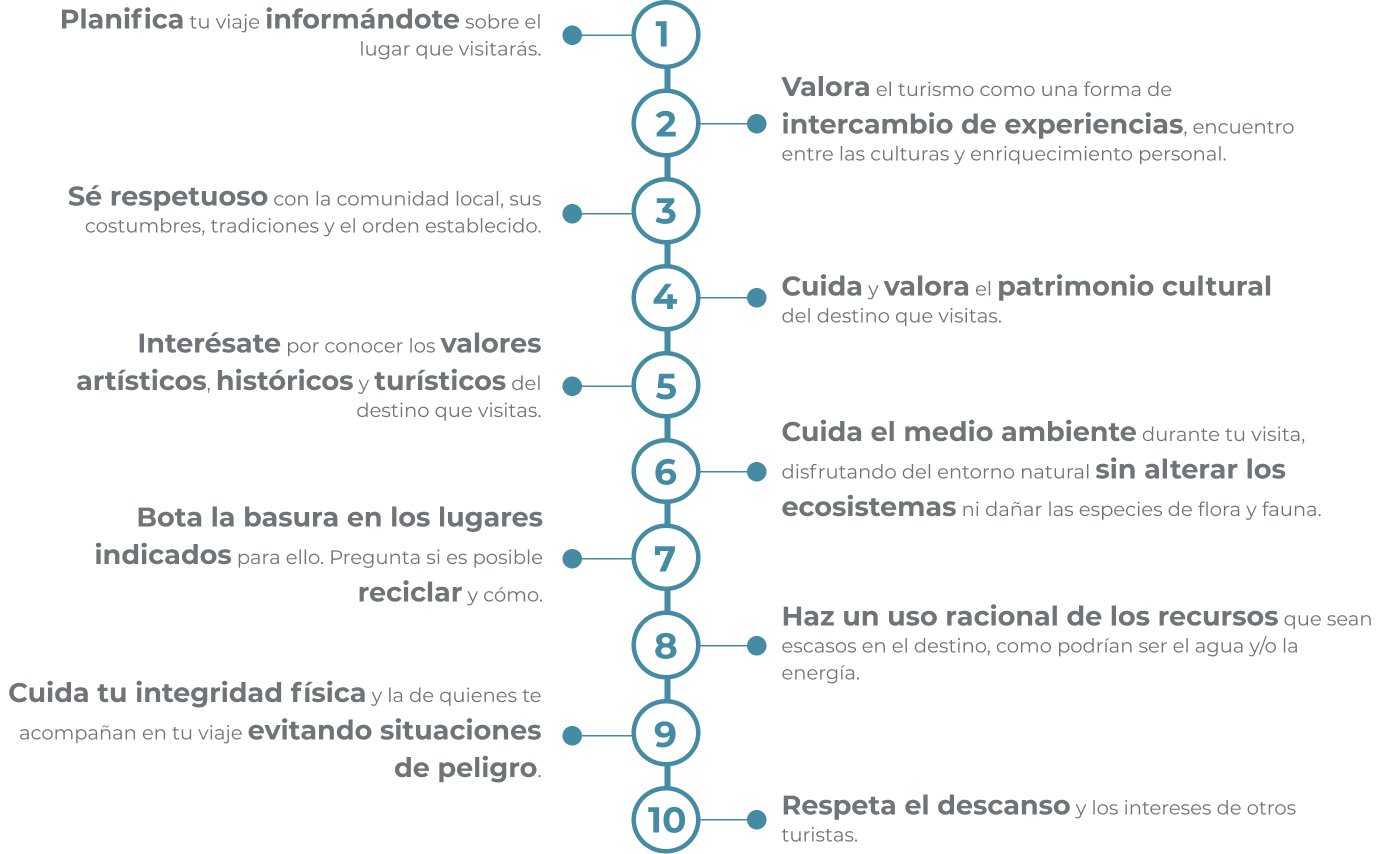
Check out the indispensable recommendations for your next trip to our country. here
Tourist confidence
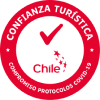
Choose the services that have joined our protocols against COVID
Social networks


- Get a Passport
- Renew a Passport
- Get a Passport Fast
- Courier Services
- Passport Information
Chile Travel Requirements
Home » Passports » How to Obtain a U.S. Passport
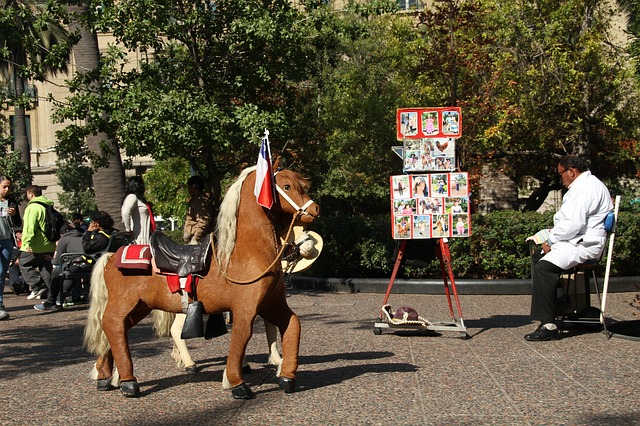
Get the Latest Updates
How to visit Chile on a budget

Sep 17, 2023 • 7 min read

There are lots of ways to protect your pesos on a trip to Chile – we've got all the tips you need to visit on a budget © Nicolas Fuentes / 500px / Getty Images
Travelers arriving in Chile from neighboring countries often have the same first reaction: shock. It’s not the height of the Andes, the size of the glaciers or the barrenness of the desert – though those also surprise – but rather the cost of living.
Chile is South America’s second-wealthiest nation by GDP per capita ( just behind Uruguay ), which is why your daily expenses will be notably higher. While alcoholic drinks tend to be relatively cheap (including the wonderful wines), meals, groceries, transportation and hotel prices aren’t all that different from many destinations in Europe or North America, particularly as you head south into the remote wilds of Patagonia . There are, however, some easy ways to save if know how.
We've rounded up some tricks and tips to help keep more of those colorful Chilean pesos in your wallet, as well as a handy guide to daily costs you can expect on a trip to Chile.
Use your Tourist Card
All visitors entering Chile on tourist visas will receive a Tourist Card. Hold onto it! Not only will you need to return this paper document upon departure but it’s also your ticket to avoiding the 19% room tax at hotels, which domestic tourists must pay. Most hotels don’t automatically deduct the tax, so be sure to show your passport and Tourist Card at check-in and pay with a foreign credit card.
Fly on budget airlines
Chilean multinational LATAM is Latin America’s largest (and best) airline, but to travel domestically (or even from South American neighbors), it’s often cheaper to fly on low-cost alternatives. These include JetSmart and Sky Airline , both of which have a wide network of domestic and international destinations. Be aware, however, that the base fares only include a small backpack (even carry-on luggage is extra!).

Make wine your evening treat
Wine in Chile can be as cheap as Coca-Cola – though you might want to take the opportunity to splurge on a higher-quality bottle for much less than back home. Supermarkets (especially Jumbo but also Lider ) tend to have the widest and cheapest selection. Sharing a bottle in the evening with your travel companions can be a great way to save. Just make sure the bottle doesn’t include the word dulce unless you prefer your wine extra sweet.
Shop at the ferias
Markets selling seasonal fruits and vegetables directly from the farmers may be quaint and expensive in other parts of the world, but in Chile, they are lifebloods for local families and one of the best ways for self-catering travelers to eat well on a budget.
Not only are the prices typically half of what you’ll find in the supermarket, the ferias (as markets are known in Chile) typically offer stands with local cheese, eggs, seafood and preserves, giving visitors a peek into Chilean home cooking. Note that, unlike elsewhere in Latin America, bargaining is frowned upon here.
Dine out on set lunches
For many Chileans, lunch is the biggest meal of the day. Make it your main meal by taking advantage of the many set lunches offered at restaurants and cafes across the country. For one fixed price, you can often get a three-course meal – including a soup or salad, a main and a dessert – for between 6000 and 8000 CLP. Set lunches are also a great way to try traditional homestyle Chilean food, which can be difficult to find in restaurants.
Ask for tourist discounts at malls
If you need to buy some outdoor gear, ski clothes or travel essentials, you’ll likely find yourself at one of Chile’s giant shopping malls. Many, including Santiago’s Costanera Center , offer discounts of up to 20% for tourists who can show a foreign passport. Typically, you’ll need to first register at the information desk, where you’ll learn how to take advantage of the discounts.

Pack a tent
Chile has a strong outdoor culture with campgrounds spread throughout its Andean hills and Pacific coastline. Camping may be the cheapest way to explore the country – particularly for adventure travelers basing their trips around national parks. Keep in mind, however, that it can get quite cold at night, no matter the place or time of year – pack accordingly. Campgrounds are also generally far from bus stations and airports, so you may need your own wheels.
Be aware of Transbank machines
Transbank is the largest maker of credit card machines in Chile, but it’s also the only one that forces those with international credit cards to accept an additional fee to use them (beyond what your bank might charge), which starts at 300 CLP and grows depending on the size of the transaction. The Transbank machines at large chain stores don’t implement this fee, but anywhere else, it’s best to use a debit card if you spot Transbank to avoid paying extra.
Savor the free breakfasts at hotels
Nearly every hotel in Chile offers breakfast included in the room rate, which may make it a cheaper option than an apartment rental if you have a heavy late breakfast (and are able to skip or take a light lunch). The breakfasts are usually quite generous and will likely include a buffet in larger hotels.
Take overnight buses
Plan to travel long distances in Chile? Overnight buses are actually quite comfortable, often including wi-fi, seatback entertainment screens and attendants who deliver a basic breakfast (really a snack). If money allows, it’s worth booking a semi-cama or salón-cama seat for extra space and a deeper recline. Because one large checked bag is included in the price – and you won’t have to pay for transport to and from airports – buses typically work out to be the cheapest mode of transport. Turbus and Pullman Bus have the widest networks.
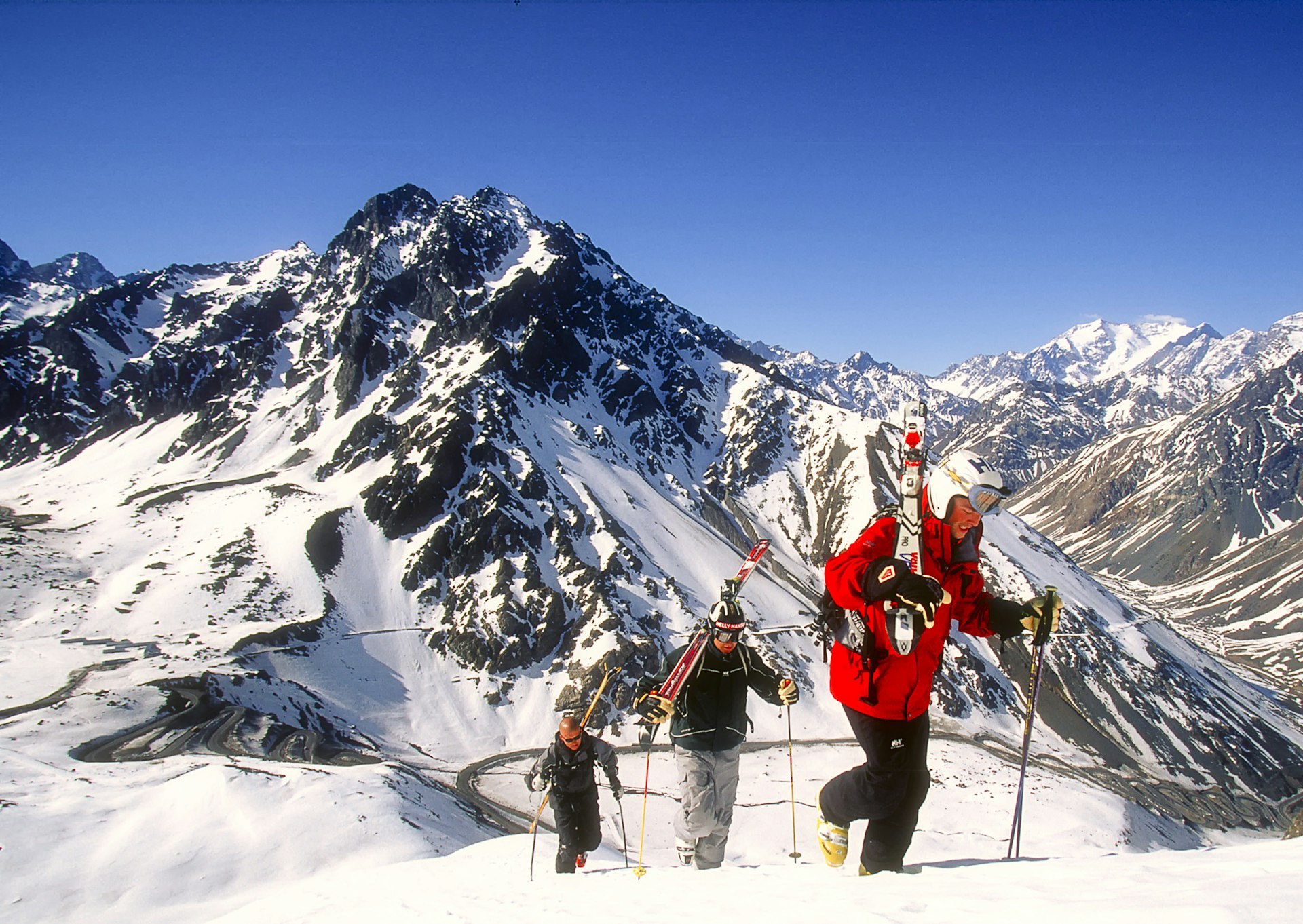
Plan your ski trip for August
It may seem counterintuitive, but August is both the best month to ski in the Chilean Andes and off-season at many resorts . That’s because, even though you have peak snow conditions, it’s sandwiched between the July winter holidays for school kids and the Independence Day holidays of September.
Skip the expensive wine tours
Wineries in Chile love to sell visitors on elaborate and expensive tours, when all many of us really want to do is try the wines. While some places do have a tasting option, it’s still typically cheaper to just head straight to the onsite restaurant, cafe or bar and order by the glass. You’ll get to sip a lot more wine for a fraction of the cost.
Ride the Santiago metro
Metros can be intimidating for first-time users, but Santiago’s system is actually pretty straightforward and easy to use. For less than US$1, you can ride as far as you want across town on any one of the six interconnecting lines, making it the cheapest, fastest and easiest way to get around. For multiple rides, be sure to purchase the rechargeable Tarjeta bip! card.
BYO groceries to Rapa Nui (Easter Island)
Food prices on Rapa Nui are notoriously expensive, so you may want to bring your own supplies from the mainland. Flight tickets include at least one checked bag, so you can load it up with some wine and provisions to save on island dining costs.
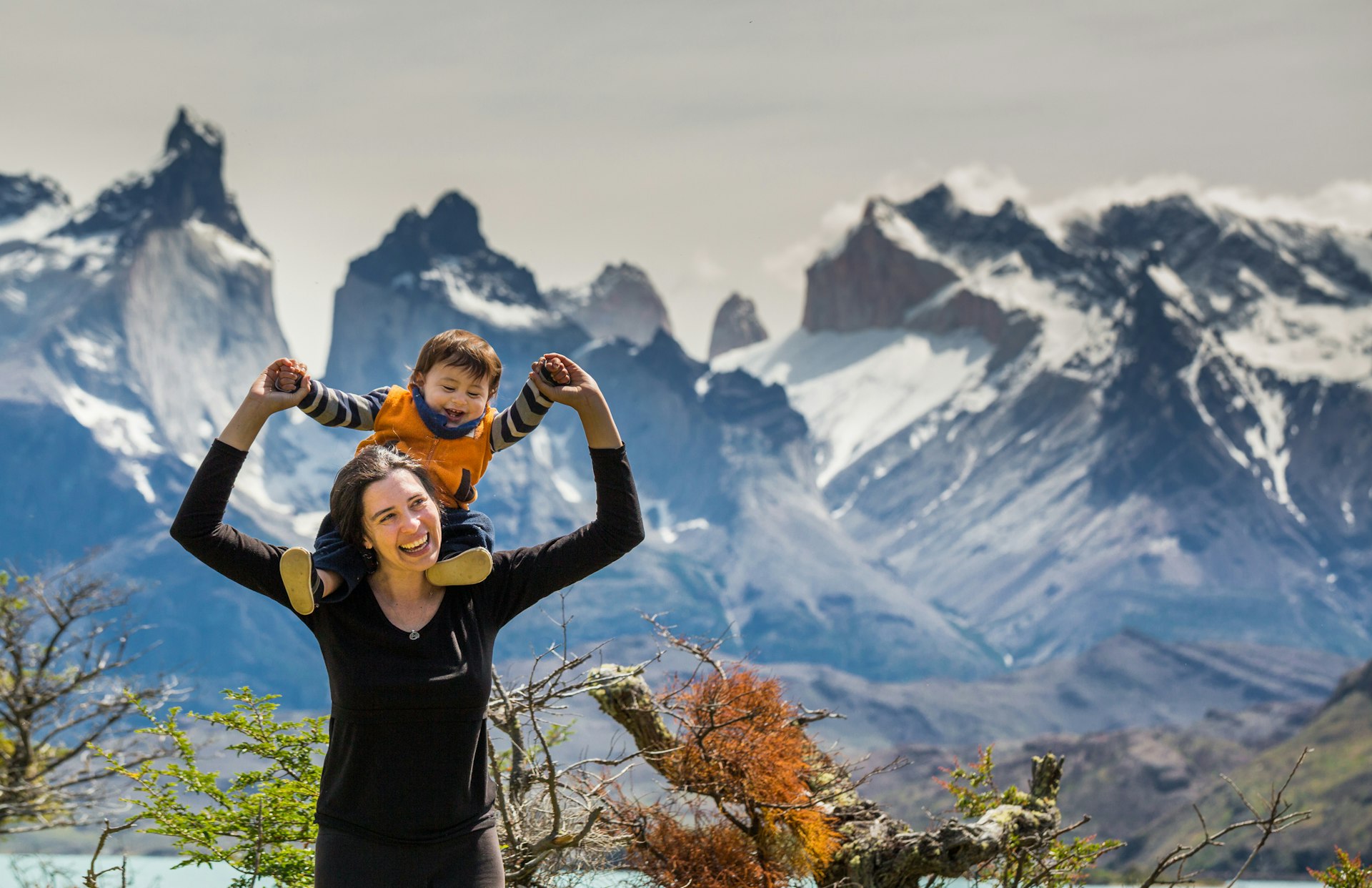
Visit Patagonia in December, March or April
Patagonia is absolutely packed in January and February with domestic tourists. So, if your dreams of wild fjords and glistening glaciers involve peace and solitude, avoid these months at all costs. Instead, book in the shoulder seasons when the weather is just as good but the rates at hotels have fallen.
Take a tip-based tour
If you want to explore cities like Santiago or Valparaíso with a guide but are wary of spending the extra money, show up instead for a tip-based tour. Companies like Tours4Tips have set daily departures, typically from a historic downtown plaza. While technically free, do remember these tours are only possible because of the gratuity guides expect at the end.
Daily Costs
- Hostel room for two: 25,000 CLP
- Basic room for two: 50,000 CLP
- Self-catering apartment (including Airbnb): 50,000 CLP
- Public transport ticket in Santiago: 700 CLP
- Coffee: 2,500 CLP
- Glass of Chilean wine: 4,000 CLP
- Sandwich: 6,000 CLP
- Empanada: 2,000 CLP
- Average daily cost per budget traveler: 27,000 CLP to 50,000 CLP
Explore related stories
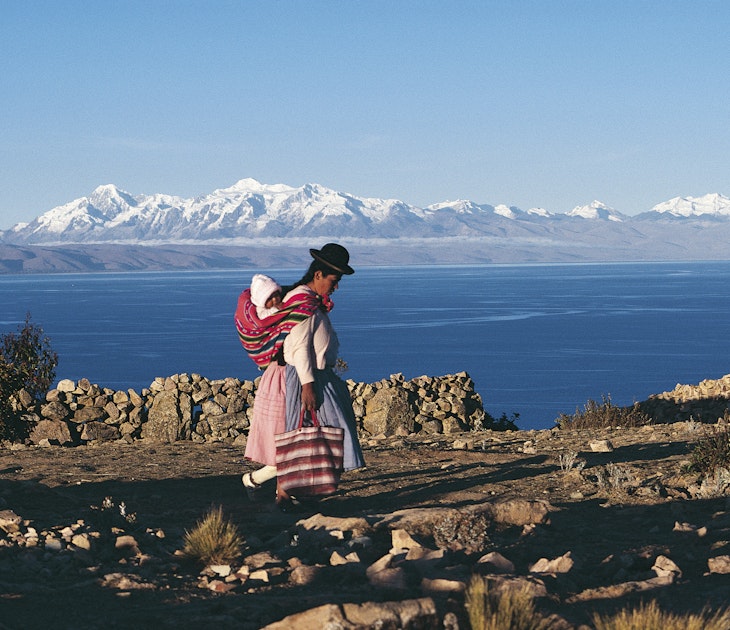
Budget Travel
Nov 6, 2023 • 8 min read
Bolivia is one of the top bargain destinations in the Americas, and you don't need a big budget to enjoy its wonders. Here's how to see Bolivia for less.

Jan 29, 2020 • 9 min read

Oct 28, 2019 • 19 min read

Dec 27, 2023 • 8 min read

Dec 8, 2023 • 6 min read

Dec 1, 2023 • 6 min read

Nov 18, 2023 • 7 min read

Sep 26, 2023 • 7 min read

Sep 23, 2023 • 7 min read

Visa Traveler
Exploring the world one country at a time
Chile tourist visa: Requirements and application process
Updated: July 2, 2021
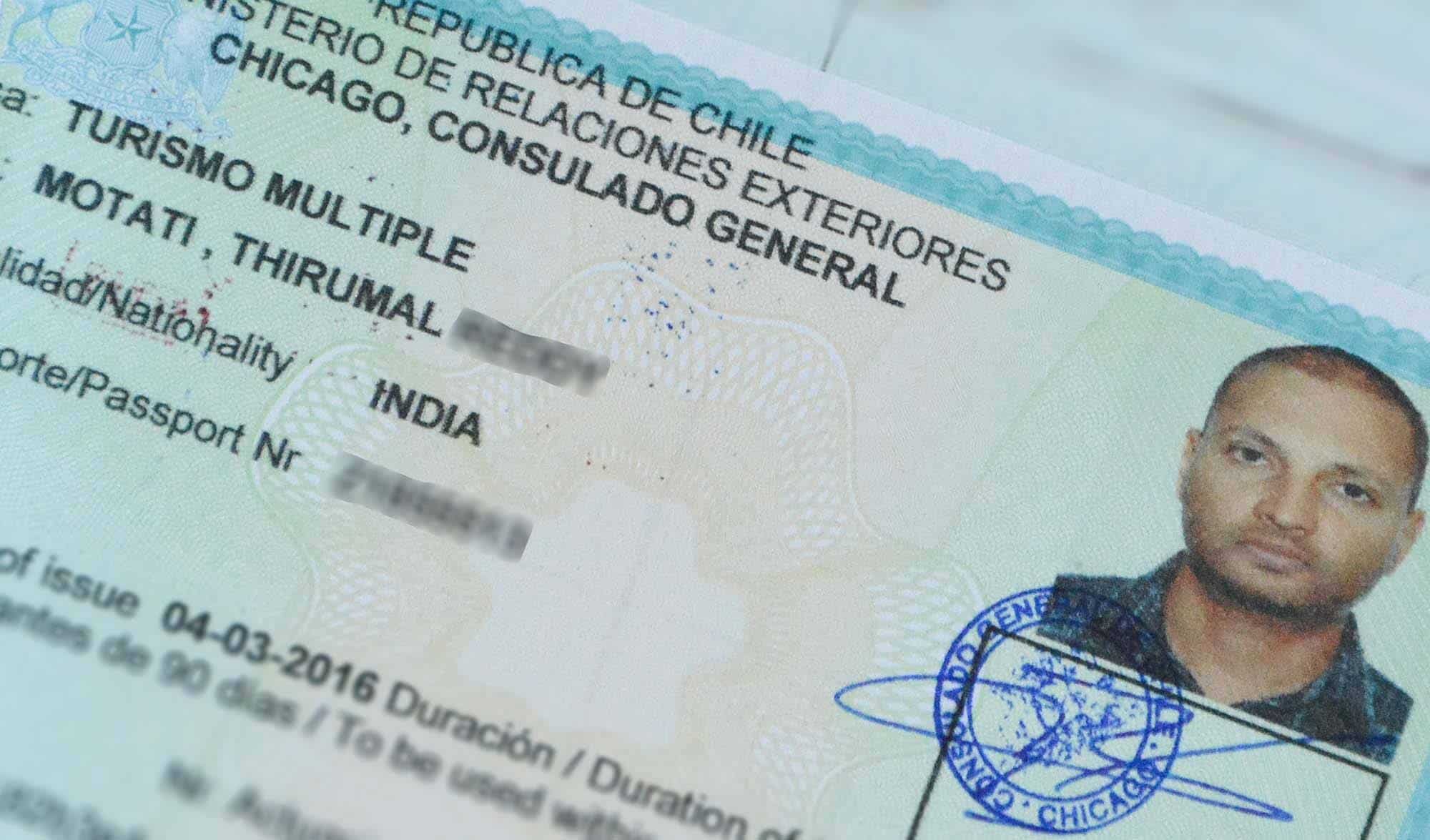
Chile tourist visa requirements are fairly easy to understand. The application process is online. But, you must appear in person to pick up the approved visa.
Chile issues only short-term visas for up to 90 days. The Visa fee can vary greatly depending on your country of passport. Refer to your nearest consulate website for exact and up-to-date information.
CHILE VISA REQUIREMENTS BY NATIONALITY
Visa exempt passport holders, 90-day entry.
- Antigua and Barbuda
- Bosnia and Herzegovina
- Czech Republic
- El Salvador
- Liechtenstein
- Netherlands
- New Zealand
- Russian Federation
- Saint Kitts And Nevis
- Saint Lucia
- Saint Vincent And Grenadines
- South Africa
- South Korea
- Switzerland
- Trinidad And Tobago
- United Kingdom
- United States Of America
- Vatican City
60-day entry
30-day entry, visa required passport holders, 90-day single entry.
- North Korea
- Cote D’ivoire
- Marshall Islands
- Dominican Republic
60-day SINGLE entry
- United Arab Emirates
- Philippines
- Papua New Guinea
30-day SINGLE entry
- Afghanistan
- Burkina Faso
- Central African Republic
- Guinea Bissau
- Equatorial Guinea
- Solomon Islands
- Sao Tome And Principe
- Saudi Arabia
- Sierra Leone
- Stateless Refugees Seeking Asylum
- Turkmenistan
21-day SINGLE entry
90-day multiple entry.
- Cote d’Ivoire
- Congo, Dem. Rep. Of
- Congo, Rep. Of
60-day MULTIPLE entry
30-day multiple entry, no multiple entry visa is issued for the passport holders of below countries.
- Comoro Islands
Visa EXEMPT for passport holders with legal residency in countries of Pacific Alliance – Colombia, Mexico, and Peru
Visa exempt for passport holders with a valid visa from the usa or canada, chile tourist visa application process.
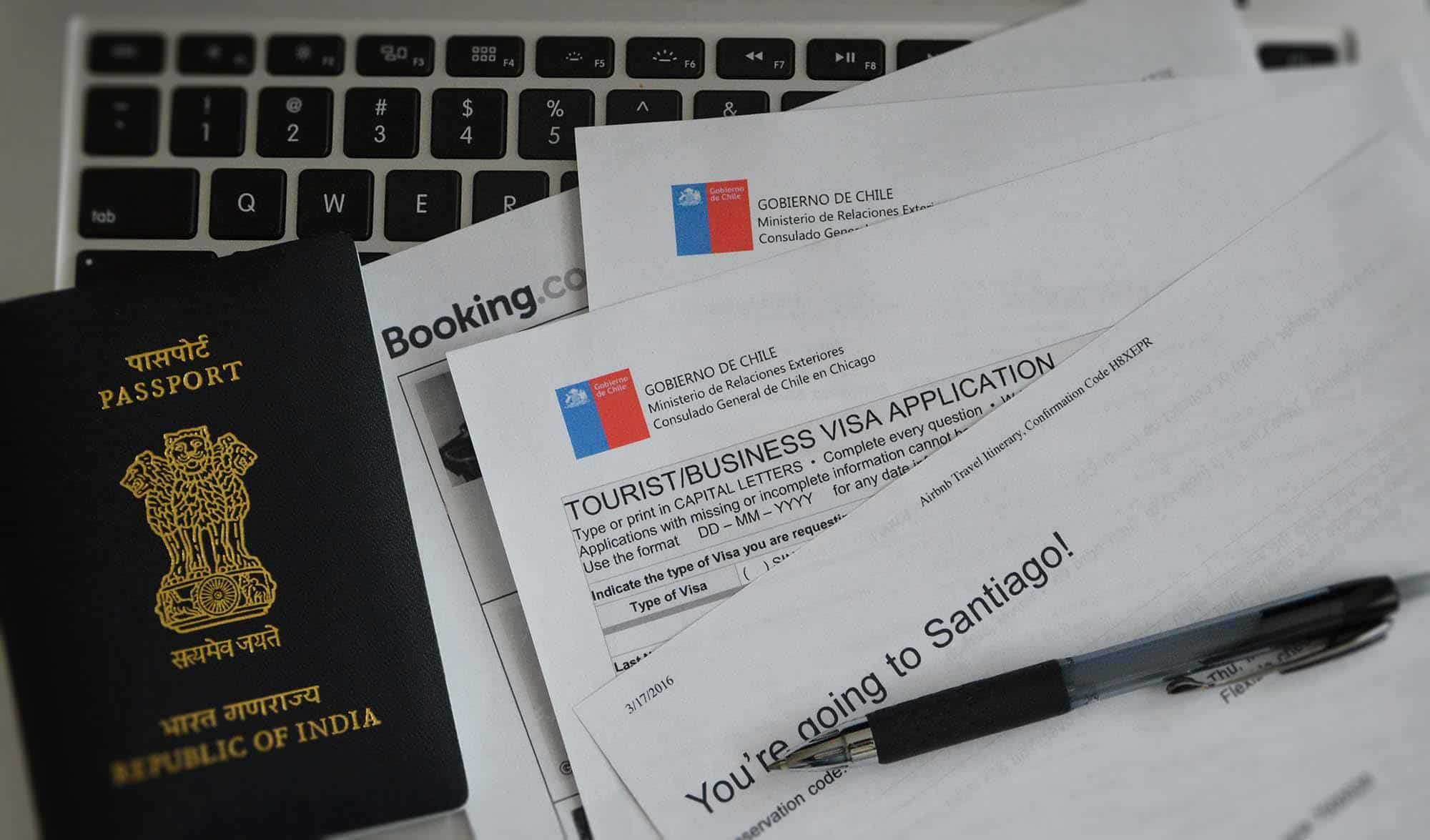
Check if you need a visitor/tourist visa to travel to Chile in the “Visa Requirements” section above. Alternatively, you can check your visa eligibility and requirements at your nearest consulate of Chile website .
Chile tourist visa application is a two-step process.
- Submit the application online
- Pickup approved visa in person
Documents required
Following documentation is required
- First and last page of your passport
- Copy of the visa/residence permit if applying in a third country (Example: if you hold an India passport and applying in the US, you have to provide a copy of your US visa)
- Signed employment letter
- Proof of economic solvency (bank statement)
- Roundtrip flight tickets
- Hotel reservation confirmations
- Digital photograph
Supporting documents: Scan documents 1 though 7. Combine and create one single PDF file.
Digital photograph: File must be in JPG format and no larger than 100KB.
Online application
The first step in the application process is to fill and submit an online application at SAC (Sistema de Atención Consular) of the Ministry of Foreign Affairs of Chile website .
- Fill the online application
- Upload the supporting documents PDF
- Upload the digital photo JPG and submit
The Visa fee is based on the country of your passport. In the online application, after selecting your nationality, the fee for your country will be displayed. The Visa fee varies from $5USD to $150USD for both single and multiple entry depending on your country of passport.
NOTE Chile charges a visa fee only if the visa is approved
You have to pay the visa fee only if the visa is approved. You must pay this fee on the day of picking up your approved visa. Chilean consulate usually accepts credit/debit card payments. Call/email your nearest consulate ahead and check what modes of payment are accepted.
NOTE Apply for a multiple entry visa only if your itinerary involves multiple trips to Chile. The reason being, the visa will be issued only for the number of days you have requested. Also, the multiple entry visa fee is much higher than a single entry.
My itinerary was for 20 days. I have applied for a multiple entry visa. I was given only a 20-day multiple entry visa. I was expecting to travel back to Chile at some point in the future.
Priority visa service
There is NO expedited or priority visa service. Make sure to apply for your visa at least 30 days prior to your scheduled travel date.
Visa pickup
After you submit your online application, you can check the status of your application on the SAC website by logging in with the same username and password that you have created during the application submission.
After the visa is approved, you will receive an email with an appointment date. The appointment date is set by the consulate. You are allowed to change the appointment date one time.
On the date of appointment, you should appear in person at the consulate. You must carry your original passport. You must also carry all supporting documents in original.
The visa officer will verify your documents and fix the visa stamp in your passport. You will have to make the visa fee payment. You will then have to give your fingerprints on 3 copies of the approved application. They will retain one copy and you will be given the other two copies.
You will have to submit these two copies at your first port of entry in Chile. Make sure to carry these two copies with you on the day of your travel.
Customer service
There is no dedicated customer service for visa status inquiries. If you need any assistance or have questions, you can email/call your nearest consulate.
Application withdrawal
There is no formal procedure for visa application withdrawal. If you do not intend to continue with the application, you can just abandon your pending application at any stage.
ENTRY AND EXIT PROCEDURE AT THE AIRPORT
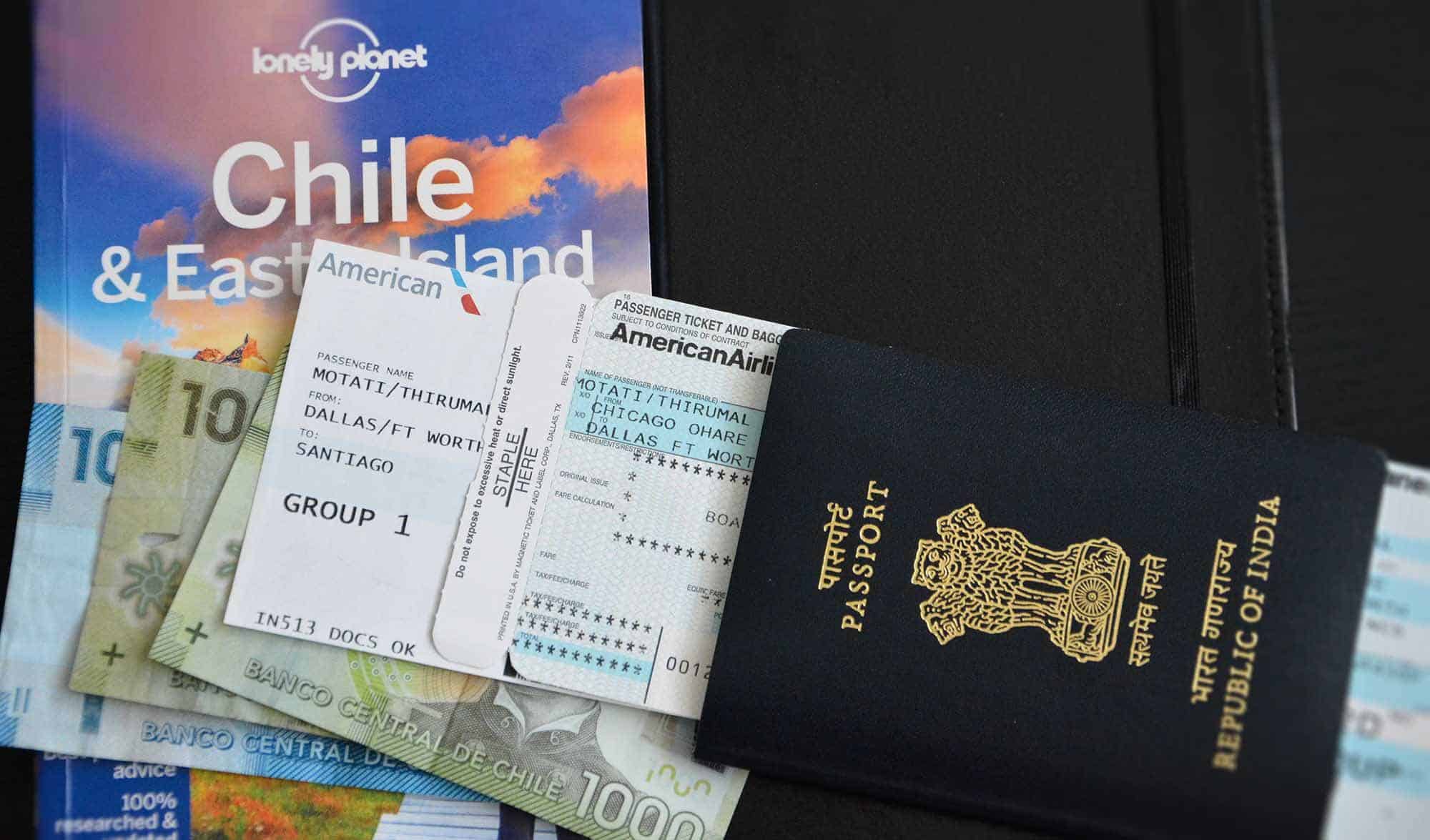
Entering Chile by air
At the first port of entry in Chile, the officer will stamp your passport but will not write/mark the number of days you are allowed to stay in the country. You will be given a small receipt that contains the number of days you are allowed to stay. Make sure to check the receipt right away for accuracy.
You must submit the two copies of the approved, fingerprinted and signed visa application that you received at the consulate to the officer at the port of entry.
As always, carry a copy of your return ticket and hotel booking just in case. If you are traveling on a one-way ticket, don’t forget to get proof of onward ticket .

Australia and Mexico passport holders Passport holders of Australia and Mexico have to pay a reciprocity fee. A reciprocity fee must be paid on arrival, before proceeding to immigration/customs. Look for payment counters near or next to immigration/customs counters.
Leaving Chile by air
Nothing needs to be done on exit. Just make sure to stop by the gate to check with the staff if they need to verify your documents.
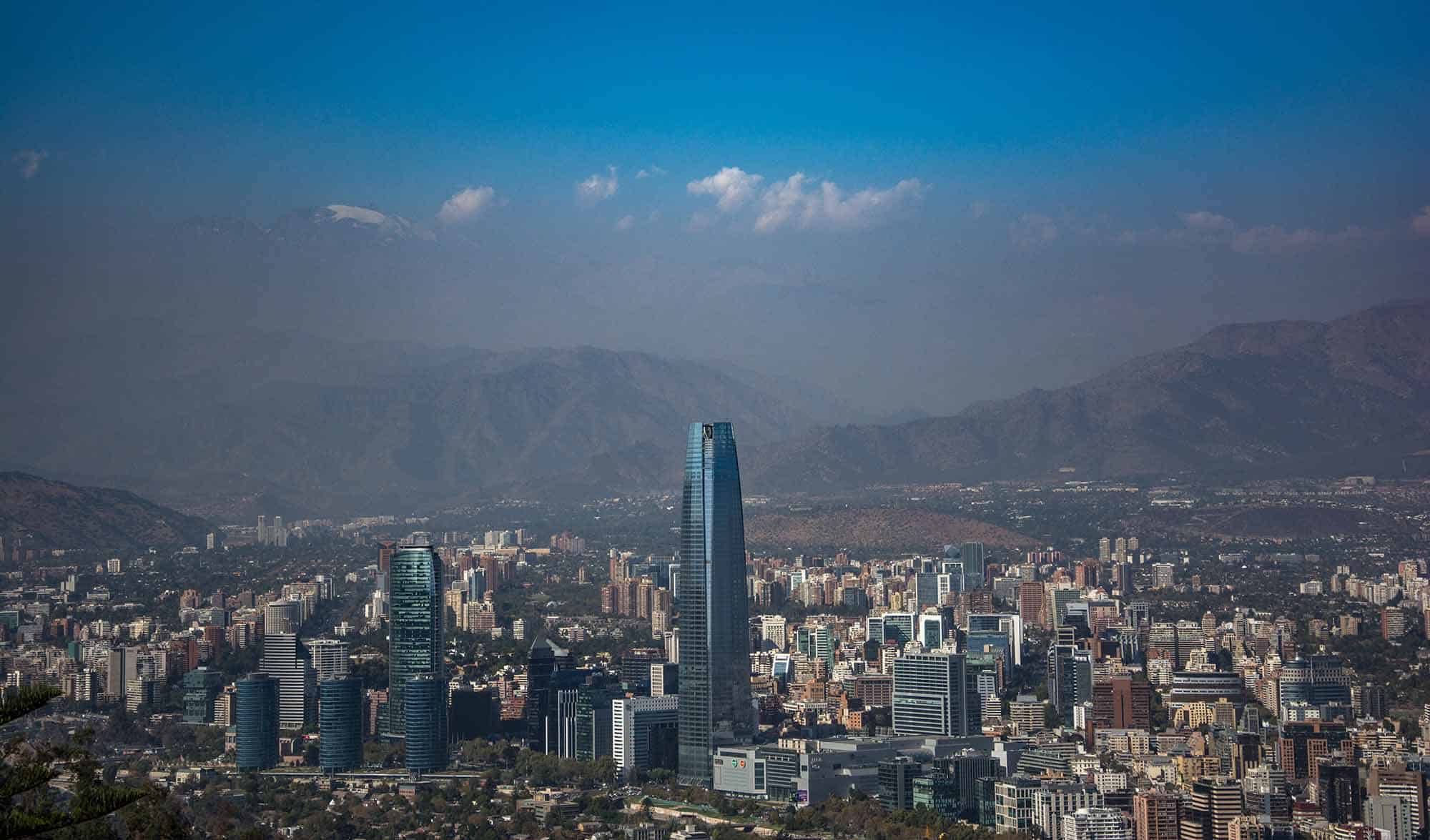
Chile tourist visa requirements are fairly simple and clear. Application submission is online and processing is much quicker. Chile is one of the most beautiful countries in the world. If you haven’t been to Chile yet, add it to your list and keep it on the top.
WRITTEN BY THIRUMAL MOTATI

Thirumal Motati is an expert in tourist visa matters. He has been traveling the world on tourist visas for more than a decade. With his expertise, he has obtained several tourist visas, including the most strenuous ones such as the US, UK, Canada, and Schengen, some of which were granted multiple times. He has also set foot inside US consulates on numerous occasions. Mr. Motati has uncovered the secrets to successful visa applications. His guidance has enabled countless individuals to obtain their visas and fulfill their travel dreams. His statements have been mentioned in publications like Yahoo, BBC, The Hindu, and Travel Zoo.
PLAN YOUR TRAVEL WITH VISA TRAVELER
I highly recommend using these websites to plan your trip. I use these websites myself to apply for my visas, book my flights and hotels and purchase my travel insurance.
01. Apply for your visa
Get a verifiable flight itinerary for your visa application from DummyTicket247 . DummyTicket247 is a flight search engine to search and book flight itineraries for visas instantly. These flight itineraries are guaranteed to be valid for 2 weeks and work for all visa applications.
02. Book your fight
Find the cheapest flight tickets using Skyscanner . Skyscanner includes all budget airlines and you are guaranteed to find the cheapest flight to your destination.
03. Book your hotel
Book your hotel from Booking.com . Booking.com has pretty much every hotel, hostel and guesthouse from every destination.
04. Get your onward ticket
If traveling on a one-way ticket, use BestOnwardTicket to get proof of onward ticket for just $12, valid for 48 hours.
05. Purchase your insurance
Purchase travel medical insurance for your trip from SafetyWing . Insurance from SafetyWing covers COVID-19 and also comes with a visa letter which you can use for your visas.
Need more? Check out my travel resources page for the best websites to plan your trip.
LEGAL DISCLAIMER We are not affiliated with immigration, embassies or governments of any country. The content in this article is for educational and general informational purposes only, and shall not be understood or construed as, visa, immigration or legal advice. Your use of information provided in this article is solely at your own risk and you expressly agree not to rely upon any information contained in this article as a substitute for professional visa or immigration advice. Under no circumstance shall be held liable or responsible for any errors or omissions in this article or for any damage you may suffer in respect to any actions taken or not taken based on any or all of the information in this article. Please refer to our full disclaimer for further information.
AFFILIATE DISCLOSURE This post may contain affiliate links, which means we may receive a commission, at no extra cost to you, if you make a purchase through a link. Please refer to our full disclosure for further information.
MORE VISA GUIDES

UNITED KINGDOM

VIEW ALL VISA GUIDES
- Cookie Policy
- Copyright Notice
- Privacy Policy
- Terms of Use
- Flight Itinerary
- Hotel Reservation
- Travel Insurance
- Onward Ticket
- Testimonials
Search this site

How to Enter Chile
Do i need a passport or visa to enter, special travel circumstances in chile.
Chile lies in an active seismic zone and is prone to major earthquakes, landslides, tsunamis, and volcanic eruptions. Several of the strongest earthquakes in history have occurred in Chile. Prepare yourself for a natural disaster by consulting the websites of the U.S. Federal Emergency Management Agency (FEMA) and Chile's Oficina Nacional de Emergencia (ONEMI). Minefields are found in Chile's northern border region with Peru and Bolivia and around the southern border with Argentina in Patagonia. Minefields are generally marked, but markers may have shifted or may not be visible. Follow clearly identified roads and trails when traveling in minefield areas. Border crossings should only be made at authorized locations. Consult with park or other local officials concerning minefields and other hazards. Chile is a popular destination for outdoor and adventure sports. Despite the best efforts of local authorities, assisting persons lost or injured in isolated and wilderness areas can be problematic. Before you go, learn about local hazards and weather conditions. You can obtain information in Spanish about parks and wilderness areas from the Chilean Forestry Service, mountain climbing from the Federacion de Andinismo de Chile, and weather forecasts from the Chilean Meteorological Service. Forest fires can be a problem in many areas of the country, including areas frequented by tourists. Historically many fires occur during the dry summer months of December, January, and February, sometimes burning hundreds of acres. Check the Chilean National Travel Board (Spanish only) or the Chilean Federal Emergency Agency websites for alerts. Inform park rangers, police, or other local authorities of your itinerary, and report missing or injured persons to the police immediately. Chile’s mountains and ski resorts are recreational destinations for hundreds of skiers and snowboarders each year. The main ski centers in Chile have good safety standards with well-groomed runs, ski and snowboard lessons with certified instructors, and clear signals for the closure and opening of runs. Skiing and snowboarding, however, are inherently dangerous sports and injury or death is always a possibility. Skiers and snowboarders should respect the rules of each ski resort and be aware that skiing or boarding out of bounds is extremely dangerous.
You are responsible for ensuring that you meet and comply with foreign entry requirements, and health requirements and that you possess the appropriate travel documents. Information provided is subject to change without notice. One should confirm content prior to traveling from other reliable sources. Information published on this website may contain errors. You travel at your own risk and no warranties or guarantees are provided by us.

- Internet Citation
- Terms of Use
- Renew Membership
- Manage Membership
- Teacher Resources
- Get Your Widget
- Product Pricing
- Other Products
- United States Edition
- Sample Country
Buying a Sim Card in Chile in 2024

Are you traveling to Chile soon and wondering what is the best way to stay connected on your trip? This is a dedicated guide helping you to choose the best sim card for traveling in Chile in 2024.
Find out where to buy a sim card for Chile, a comparison of the Chile prepaid sim cards for tourists, up to date prices as per April 2024, the best e-sim cards for Chile, my recommendation, the best 4G/5G network in Chile, a vlog about my experiences, information about international sim cards for Chile and everything else you need to know.
Staying connected is one of the most important things of planning my next trip. In the past I always used to buy a prepaid sim card on arrival but nowadays I mostly order an e-sim card on the internet.
Since I am also trying to visit every country in the world I get to a lot of different countries constantly and therefore on Traveltomtom you can find already more than 200 sim card guides from all over the world: Argentina , Buenos Aires , Brazil , Peru , Lima , Bogota , Colombia , Paraguay , Mexico , USA , New York , Madrid , Spain , London , Amsterdam , Dubai and many more.
So next time you are planning your adventure abroad come check out Traveltomtom for the latest prepaid and e-sim card advice for your next holiday destination. Bookmark me and let me help you save money!
Why buying a sim card for Chile
Let’s keep it real, we just want to stay connected when traveling as it makes our life much easier. Think about ordering a taxi through an app, looking for the nearest ATM’s, finding cool restaurants nearby, keeping in touch and what about emergencies, bank transfers, etc.
Don’t rely on WiFi, it is not reliable and although most places offer free WiFi also keep in mind that surfing the internet through public WiFi is on an UNSECURED network. The use of a VPN is recommend.
So to not get stuck with high roaming charges Traveltomtom recommends buying a local prepaid sim card in Chile for traveling around the country. It is the cheapest way to get data on your phone abroad. A little more expensive but also more convenient are e-sim cards or international sim cards for Chile. More about that later!
My recommendation
Traveltomtom recommends a Movistar sim card for Chile. They have the best 4G/5G mobile internet coverage in Chile and great prepaid sim cards for tourists.
That said, we have to include e-sim cards in our comparison as they are so easy to order online and not expensive at all. For $18 USD you already get 15 GB data + 500 minutes.
Traveltomtom recommends ordering an e-sim card for Chile via either SimOptions or Airalo .
you may also like...

Another way of staying connected that is worth looking into are international sim cards. These sim cards work in multiple countries and are great if you are visiting more countries in South America. Have a look at my comparison of the best travel sim cards with data in 2024 and pick the one that suits your trip the most.
Best e-sim cards for Chile
The easiest way to stay connected when traveling to Chile in 2024 is an e-sim card. You arrange everything online in just a couple clicks. No more visiting a phone store and swapping physical prepaid sim cards.
You order an e-sim card for Chile on the internet, you receive a QR code, scan it, follow the simple steps and within less than 2 minutes you have a Chile e-sim card installed on your phone.
Upon arrival in Chile it automatically connects you to an available network and you enjoy data on your phone pretty much when the plane lands.
Make sure your phone is e-sim compatible before ordering an e-sim card for Chile.

Airalo is a reliable e-sim provider that sells e-sim cards from pretty much every country in the world and Traveltomtom has used them uncountable times without ever facing a problem.
Check out the Airalo e-sim cards for Chile in 2024:
- 15 GB data + 500 minutes + 500 text for 10 days = $18 USD
- 20 GB data + 500 minutes + 500 text for 30 days = $23 USD
Click here for more info or to order an e-sim card for Chile via Airalo .
The above Altoque e-sim cards from Airalo are only valid in Chile and they operate on the Movistar 4G/LTE network.

SimOptions is a reliable e-sim provider and Traveltomtom has used SimOptions in more than 50 countries around the world and never faced an issue. Here are the SimOptions e-sim card plans for Chile for 2024:
- 3 GB data for 30 days = $24.90 USD
- 5 GB data for 30 days = $34.90 USD
- 6 GB data for 15 days = $39.90 USD
- 10 GB data for 14 days = $39.90 USD
Click here for more info or to order an e-sim card for Chile via SimOptions .
There is a third e-sim provider called Nomad and they also have Chile e-sim cards. Nomad has often great e-sim card deals, but their reliability and performance has to improve significantly before it will be one of Traveltomtom's first recommendations. Personally I had some issue activating my e-sim a couple times.
Where to buy a sim card for Chile
Santiago de chile airport.
I would have loved redirecting you to a dedicated article for buying a prepaid sim card for Chile at Santiago de Chile Airport on arrival. To my big surprise there is no shop to buy a prepaid sim card for tourists at Santiago International Airport (SCL). I asked around everywhere, but NOPE!
Phone stores city center
Therefore Traveltomtom recommends you to go to one of the big shopping malls in the city center of Santiago: Mall Costanera Center, Parque Arauco and Vivo el Centro are the best places to find phone stores. You can buy a prepaid sim card for tourists in any of the mobile internet provider shops.
Another option is to buy a sim card for Chile on the internet. It is the easiest and most convenient way to get a sim card for traveling to Chile. Ordering an e-sim card gets you connected in just a couple clicks. Traveltomtom recommends ordering an e-sim card for Chile via either SimOptions or Airalo .
If your phone is not e-sim compatible then check out physical prepaid sim cards from SimOptions .
Mobile internet operators in Chile
There are 4 mobile internet providers in Chile and all of them sell prepaid sim cards for tourists: Movistar, Claro, Wom and EnTel.
Registration process
The registration process in Chile for tourist sim cards is very easy as you do NOT need anything. No passport registration needed for a prepaid sim card. However, if you stay in Chile longer than 1 month your phone will be blocked automatically as of new laws in Chile. You will need to pay a tax to unlock your phone after 1 month, but any tourists coming for less than 1 month no need to worry about anything. Just walk into a phone store and buy your prepaid sim card for Chile.
Prices prepaid sim cards in Chile in 2024
The below information and prices are updated as per April 2024. Prices are in Chilean Peso and $1 USD = 970 CLP and 1,000 CLP = $1,03 USD.
As per April 2024 there are only physical prepaid sim cards available, no e-sim cards for tourists.
In an Entel store you can only buy a prepaid sim card for 2,000 CLP ($2 USD) and it will give you 20 minutes calling time and 1 GB data for 15 days.
If you then want to add a data packages on it you will need to go to a kiosk to top up your balance and then convert it into data packages. There is NO service for prepaid sim cards at Entel stores.

A Wom prepaid sim card also costs 2,000 CLP ($2 USD) and gives you 1 GB data and 50 minutes calling time for 15 days. Same as Entel, adding data packages can only be done manually by buying credit from a kiosk.

So first you go to any random kiosk and then you buy WOM credit. After you have the credit into your account you can convert it into data plans.
These are for example the Wom data plans that you can activate on your number/account after you bought credit at a kiosk.
Why so complicated Chile? Why not selling these packages straight at the desk in your stores?
For Claro counts the same, no service at their Claro stores for prepaid sim cards for tourists. In the Claro stores they can only do the registration for you. A Claro prepaid sim card costs 4,000 CLP ($4 USD) and gives you 1 GB data and 50 minutes for 15 days.
With a Claro prepaid sim card some social media apps are unlimited (Facebook, WhatsApp, Instagram).
Last but not least a Movistar prepaid sim card costs 5,000 CLP ($5 USD) and it gives you 40 GB data + 200 calling minutes for 30 days.
Compared to all the other mobile internet operators that is a WINNER!
The registration and activation will be done in the store and it takes less than 5 minutes. You can pay by either cash or card. Unfortunately there are still only physical prepaid sim cards available. Movistar Chile does not provide e-sim cards for tourists.
Best 4G/5G network in Chile in 2024
May be even more essential for determining the best prepaid sim card for traveling in Chile is the mobile network coverage and therefore we compare the 4G/5G network coverage in Chile per provider below.
Is there 5G in Chile?
Yes, there is a very extensive 5G network in Chile available and prepaid sim card users are able to connect to the 5G network. Just make sure your phone is set to 5G and it connects automatically.
Claro 4G/5G network coverage in Chile

Wom 4G/5G network coverage in Chile

Entel 4G/5G network coverage in Chile

Movistar 4G/5G network coverage in Chile

Although the above mobile data network coverage maps are updated for 2024 they are not 100% accurate. However, they are a great reference to compare the 4G/5G networks of the mobile internet providers in Chile in 2024.
In many other Latin American countries Claro is the biggest mobile internet provider but here in Chile they have the smallest 4G/5G network. The WOM network coverage is also a little weaker than Entel and Movistar who have the best mobile internet network in Chile in 2024.
Best prepaid Chile sim card in 2024

Looking at all the above provided information it is a pretty easy conclusion that Movistar is the best prepaid sim card in Chile in 2024. They are the only mobile internet provider that actively sell sim cards plus data plans in their stores. So if you are a tourist and looking to buy a prepaid sim card in Chile then head to a Movistar store.
Buying a local prepaid sim card for tourists sound pretty complicated, right? Check out my vlog below to find out more about what it is like buying a prepaid sim card in Chile.
I always advice people to make sure to be connected and have data on your phone before walking out of the sim card shop. The Movistar service selling prepaid sim cards in their stores is impeccable. Especially compared to Entel, Wom and Claro which all redirected me to a kiosk after registering the sim card. In stores of Entel, Wom and Claro they can't add a data plan for you.
Movistar is not only giving you the best service in their stores, Movistar also has the best 4G/5G network coverage in Chile in 2024.
A prepaid sim card for tourists for just $5 USD with 40 GB data and 200 calling minutes for 30 days is an amazing offer and therefore Traveltomtom's first recommendation when you are looking for the best sim card for traveling in Chile in 2024.
E-sim cards for Chile are actually great deals, but they are more expensive than a Movistar prepaid sim card.
However, a Movistar prepaid sim card can only be bought in Chile on arrival and an e-sim card you can already buy on the internet before your trip to Chile. The best value e-sim card for Chile is an e-sim from Airalo with 20 GB data + 500 minutes for $23 USD . As soon as the plane lands in Chile you are online.
Order a prepaid sim card for Chile online

If your phone is not e-sim compatible but you would like to order a sim card for traveling to Chile online before your trip then check out the following.
Arrive prepared in Chile with an international prepaid sim card. You order them online and a physical prepaid sim card will be delivered to your home address. You put this sim card in your phone and it automatically connects to an available network upon arrival in Chile, basically when the plane lands you are instantly online.
SimOptions is the only sim card provider that sells physical prepaid sim cards for Chile:
- 10 GB data for 30 days = $24.90 USD
- 10 GB data for 14 days = $49.90 USD
Click here for more info or to order a physical prepaid sim card for Chile via SimOptions .
But if your phone is e-sim compatible then this is a last reminder that you can arrange everything in just a couple clicks on the internet by ordering an e-sim card for Chile. Traveltomtom recommends ordering an e-sim card for Chile via either SimOptions or Airalo .
Curious what it looks like trying to visit every country in the world ? Go check out my Instagram account @traveltomtom and follow along. As of April 2024 I have visited more than 155 countries, so still a long way to go.
I hope all the above information about buying a sim card for Chile were helpful. If you have any questions then please leave me a comment below.
Enjoy your trip to Chile!
- santiago de chile
You are using an outdated browser. Please upgrade your browser or activate Google Chrome Frame to improve your experience.
- Follow Contactchile on instagram
- Follow Contactchile on facebook
Will I need a visa?
You only need a visa, if you have a paid job in Chile. If you attend a language course or you do an (unpaid) internship in Chile, the bureaucratic and financial efforts to apply for a visa are not worth it. If you travel to Chile as tourist, you will receive a tourist card, which allows you to stay for 90 days (can be extended). You could get a student visa, but you will not have any special advantages, except that you won't have to leave the country every 3 months (see below). Exchange students shall apply for a student visa beforehand.
Which documents will I need upon entry?
Citizens of Australia, New Zealand, Great Britain, Canada, the USA, South Africa, as well as most EU countries do not need a visa, just their passport. Upon entry, they will receive a Tarjeta de Turismo (Tourist Card) which is valid for 90 days and has to be presented when leaving the country. Find a safe place for this inconspicuous piece of paper! If you do loose it, get a replacement in plenty of time before your departure ( Policía Internacional in Santiago, Eleuterio Ramírez 852, or at a police station in one of the regions.) Those trying to leave without the card will most likely miss their flight or be kept waiting at the border for a long time.
Citizens of most African, Asian and formerly Soviet States will need a tourist visa that can be applied for at any Chilean Consulate. Citizens of Australia and Mexico have to pay an entry fee when traveling through Santiago airport (not at any other point) that corresponds to the amount Chileans are charged when traveling to the respective country: Australians USD 61.00, Mexicans USD 23.00.
How can I extend my stay in Chile?
The Tourist Card is easiest extended by leaving and re-entering the country (can be done on the same day). Many foreigners use this loophole to extend their stay in Chile by this procedure. However, it is not officially acknowledged by the law and there have been cases in which the border officials became suspicious the third or fourth time. They started asking uncomfortable questions and renewed the Tourist Card only for 30 days.
An official extension through a police station (without leaving the country) is only meant to be done once for another 90 days, and it has to be applied for one month before the card expires from the Extranjería in Santiago or any Regional capital. The price is USD 100.00; Santiago address: San Antonio 580 piso 2, metro stop Plaza de Armas.
What kind of visa will I need?
If you officially want to stay longer than three months in Chile or if you are looking for a paid job, there are various visas . You can obtain more information at the Chilean consulates in your home country or at the Extranjería of each regional capital of Chile.
The most important types of visa are:
- Visa de Estudiante : Student visa, without working permit, it is limited to the duration of your studies
- Visa Sujeto a Contrato : Contract visa, this visa is issued upon presentation of a contract with a Chilean employer
- Visa Temporaria : : Temporary visa (normally 1 year) for "profesionales", i.e. for people with a diploma/title. It is not dependent on one employer, but you have to have your diploma/ title officially acknowledged in Chile, and you need a job offer. Click here for more information about this visa.
- Permanencia Definitiva : Permanent visa for foreigners, who have lived in Chile for 2 years with a temporary visa and who can prove that they earn their own living.
We are pleased to give you advice on the different types of visa and help you with the Chilean bureaucracy. More information under Relocation .
Where can I apply for a visa?
- At a Chilean consulate in your home country before your departure, application procedure: 2-6 weeks. See the list of consulates in your country.
- If you are already in Chile and you want to apply for a visa for a longer stay: Intendencia de Santiago, Departamento de Extranjería , San Antonio 580 piso 2, Santiago Centro, Tel. 600-626-4222, open Mon-Fri 8.30 - 14 h, be prepared for long lines! Application procedure: 3-6 months.
How do I get from the airport to Santiago city?
At the airport counters, you will find authorized taxis and transfers companies. You can pay for a private or shared trip. Avoid those taxi drivers that approach you to offer their services. They are not authorized and is not the safest way to reach your accommodation in Santiago.
What kind of clothes will I need in Santiago?
Of course, this depends first of all on the season (see Climate ). If you are a tourist, informal and comfortable clothes will be just fine. If you are here to work or study, things are different. The appearance is very important to the Chileans. They don't consider long hair and earrings for men appropriate, neither very short skirts for women or if they don't shave their legs and armpits. You should also use deodorant. At work you have to dress formally, men usually need to wear a jacket with tie. Jeans, T-shirts or sandals are out of question. Women should avoid to wear revealing clothes, a bra is a must.
Is Chile safe?
More information in our complete Safety section .
How can I pay in Chile?
The common and almost exclusive means of payment is the Chilean Peso. You can withdraw money at cash points of the Redbanc ATM's with your ATM or EC/Maestro Card in any big city - maximum 200.000 Pesos per day . This costs around 7 USD / 5 EUR per withdrawal with good exchange rates. You can pay with the usual credit cards in most restaurants, shops, supermarkets etc. If you take out money with your credit card, the bank charges are higher. Further information under "Useful Information/ Money" .
What are the living costs in Chile?
More information under Cost of living .
Work & Travel
Spanish Course
High School
Tel. +56 2 2264 1719
Tel. +56 9 7764 4148
WhatsApp +56 9 7764 4148
We are member of


Chile SIM Cards: Everything You Need To Know
by Melissa Giroux | Last updated Apr 24, 2024 | SIM Cards , South America , Travel Tips
Visiting Chile soon? Make sure to know what to expect when it comes to purchasing a Chile SIM card .
In this guide, we’ll explain where to buy a SIM card in Chile in person and online. We’ll also discuss prepaid SIM cards and eSIMs if your mobile supports them.
Before you read this guide, you may wonder if you actually need a SIM card in Chile. If you don’t mind not having Internet, you’ll likely find free Wifi in restaurants, shopping malls, and hotels.
That said, if you need data to get around, call a cab, or translate Spanish – you may want to get a SIM card for your travels in Chile.
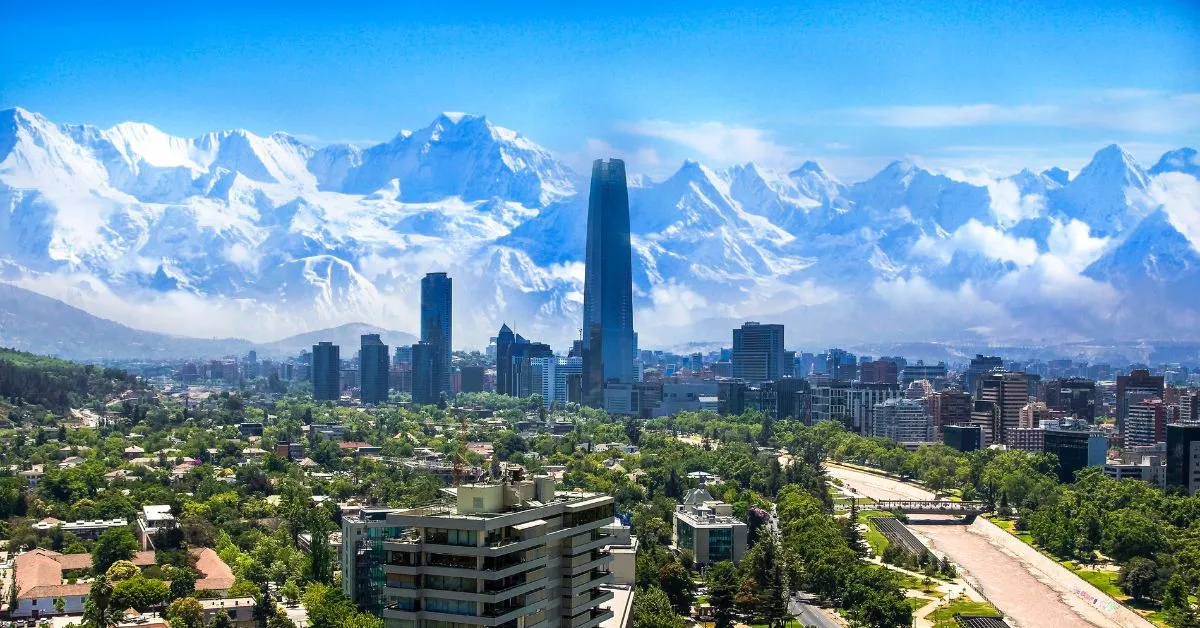
Best SIM Cards In Chile
If you’re traveling in Chile, we recommend using a SIM card from Claro, Moviestar, Entel, or Airalo. (I’ll get back to Airalo later on, so keep reading to learn more!)
That said, if you’re planning on visiting other countries during your trip to South America, you might want to make sure to pick an option that offers coverage in other South American countries.
How To Buy A SIM Card In Chile
You can either buy a Chile prepaid SIM card in person in some international airports, mobile provider stores, convenience stores, or online.
Usually, you can expect higher costs and low data offers at the airport, so we don’t recommend buying a SIM card at the airport. That said, you won’t necessarily find SIM card shops in every airport, so it’s essential to keep this in mind. And, when you see a shop, you might also have limited options.
For this reason, I’d recommend buying a SIM card directly from the mobile provider store. Note that you may need your passport to buy one.
Although, this means you won’t get data right upon your arrival. So, if you prefer to be connected at all times, you could use an eSIM or purchase a South American prepaid SIM card online.
Now, let’s take a look at the data plans offered by Claro, Movistar, and Entel.
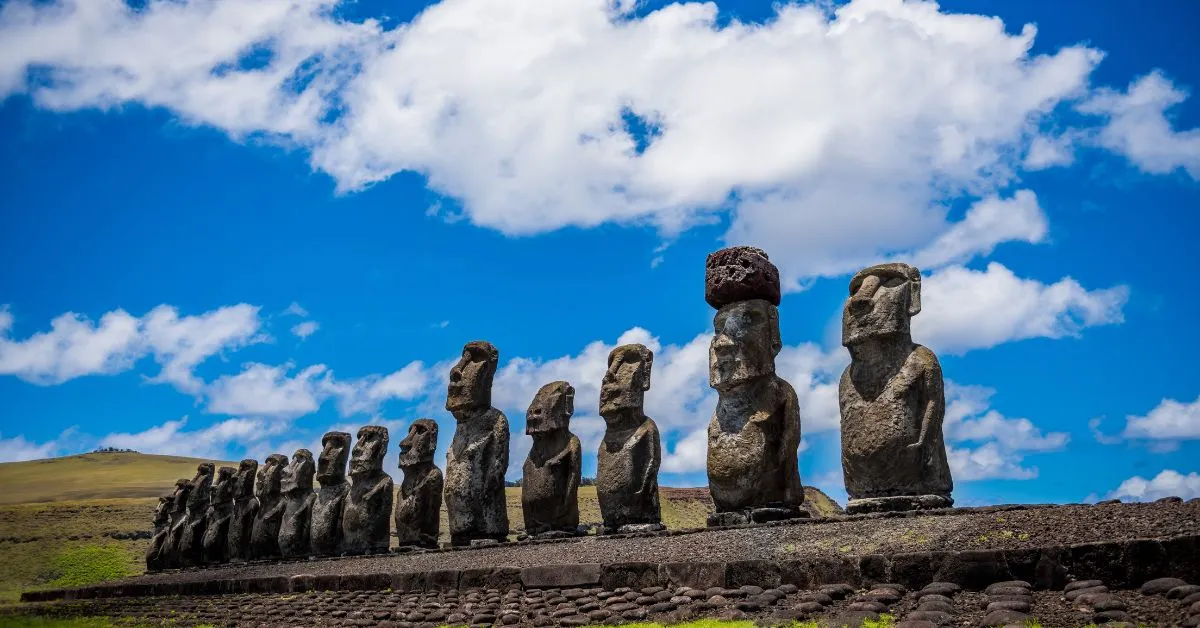
Claro SIM Cards
Claro offers three different types of tourist plans:
- 100 MB, valid for 1 day for CLP 200 ($0.21)
- 500 MB, valid for 1 day for CLP 500 ($0.52)
- 1.5 GB, valid for 3 days for CLP 1.500 ($1.55)
Movistar SIM Cards
Movistar has two different prepaid plans available:
- 40 GB, valid for 20 days for CLP 3,990 ($4.11)
- 70 GB, valid for 30 days for CLP 6,990 ($7.20)
As you can see, it offers more data than Claro, which can be helpful.
Entel SIM Cards
Entel offers a variety of SIM-only plans for tourists:
- 600 MB, valid for 2 days for CLP 500 ($0.52)
- Unlimited data, valid for 1 day for CLP 890 ($0.92)
- 1.5 GB + unlimited social media, valid for 3 days for CLP 1,000 ($1.03)
- Unlimited data, valid for 3 days for CLP 2,490 ($2.56)
- 4 GB + unlimited social media, valid for 7 days for CLP 2,500 ($2.58)
- Unlimited data, valid for 7 days for CLP 5,290 ($5.45)
Overall, we think Movistar is the best option if you plan to buy your SIM card in person. That said, any would do if you can’t find their store!
How To Buy A Chile Prepaid SIM Card Online
If you wish to have your SIM card ready for your arrival, you could purchase it online or on websites like Amazon.
You’ll find different plans on Amazon. For example, the OneSimCard works in more than 200+ countries and gives you data for $0.01 per MB. Chile is included.
But there are many other options worth considering, so have a look and make sure the countries you plan on visiting are listed.
Browse your options on Amazon
Finally, the last option is to buy an eSIM card for Chile or, if you’re traveling to multiple countries, an eSIM plan for South America.
How To Buy An eSIM Card For Chile
eSIM is a new concept that allows you to have a virtual SIM card inside your phone. If your mobile phone supports eSIM cards – it’s definitely one of the best options to get data in Chile.
Curious? Learn more about eSIMs for travelers on eSIM Roamers .
I started using eSIM as soon as my mobile phone supported it. And I first tried it when visiting my family in Canada. To buy eSIMs, I usually use Airalo . Keep reading to learn more about the best eSIMs for Chile.
Airalo Chile
If you want to buy an eSIM for Chile, you could purchase one on Airalo . This website offers many eSIM cards worldwide and special plans for South America and Chile.
I’ve been using Airalo for several years, and it works fine.
Here are the options available :
- 20 GB, valid for 30 days for $23 (includes calls and SMS)
- 15 GB, valid for 10 days for $18 (includes calls and SMS)

Here’s an overview of the options available for South America :
- 1 GB, valid for 7 days for $15
- 2 GB, valid for 15 days for $28
- 3 GB, valid for 30 days for $39
- 5 GB, valid for 30 days for $60
The options mentioned above are part of Latamlink and offer coverage in 19 countries, including Chile.
Alternatively, if you’re traveling in other countries that are not mentioned on the list, you can try Discover Global, which offers coverage in 124 countries, including Chile.
Here’s an overview of the options available on Discover Global :
- 1 GB, valid for 7 days for $9
- 2 GB, valid for 15 days for $17
- 3 GB, valid for 30 days for $24
- 5 GB, valid for 60 days for $35
- 10 GB, valid for 180 days for $59
- 20 GB, valid for 365 days for $69
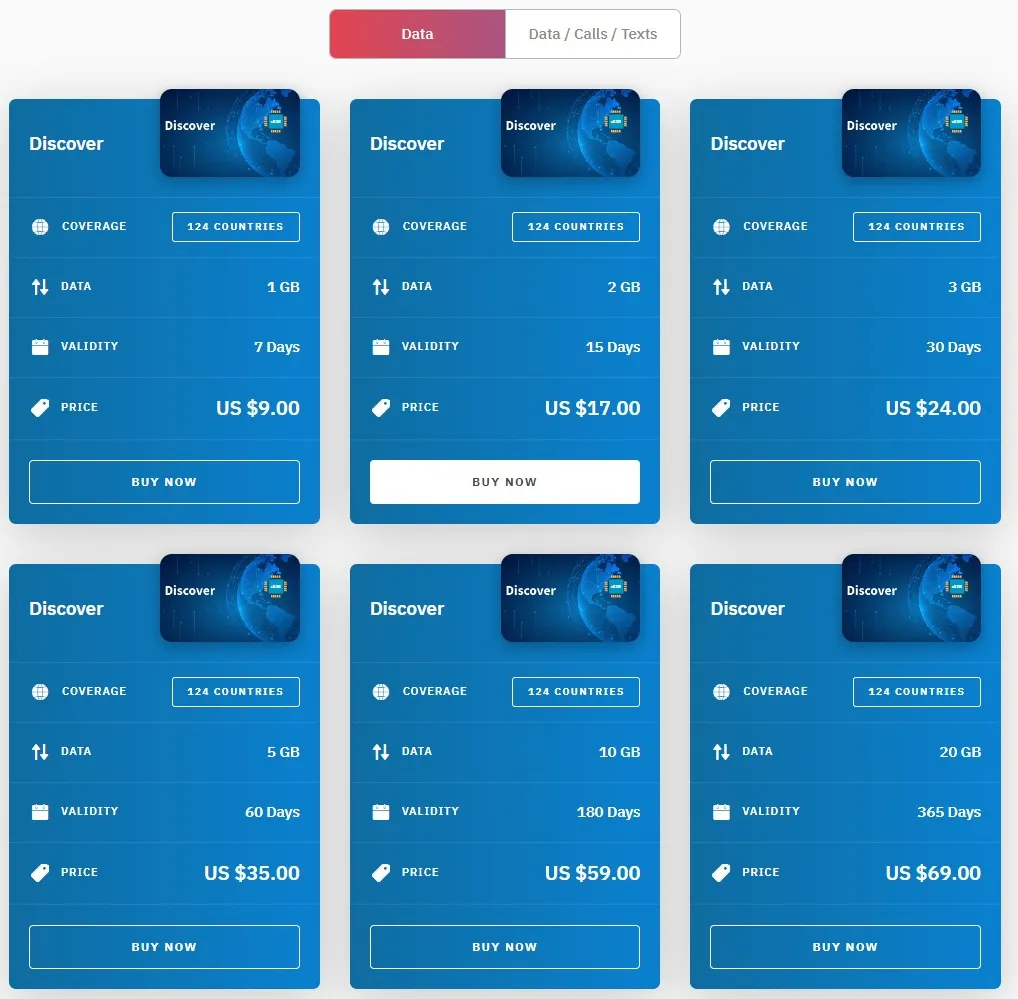
Now, one important thing to note about Airalo is that you’ll need to keep an eye out for the provider in each country.
Suppose you ever have trouble connecting to the Internet during your trip. In that case, it might be because you’re connecting automatically to networks and need to select a network manually instead.
When you purchase the eSIM, you’ll get access to the list of networks supported in each country.
Go to Airalo
Holafly Chile
Alternatively, you could look at your options on Holafly . You can read our Holafly review to learn more about this eSIM store.
Here’s an overview of the plan for Chile:
- Unlimited data, valid for 5 days for $19
- Unlimited data, valid for 7 days for $27
- Unlimited data, valid for 10 days for $34
- Unlimited data, valid for 15 days for $47
- Unlimited data, valid for 20 days for $54

Go to Holafly

Nomad Chile
Finally, Nomad is also a great eSIM provider. Here’s an overview of the plans available for Chile:
- 1GB, valid for 7 days for $20
- 3GB, valid for 30 days for $48
- 5GB, valid for 30 days for $54
Nomad also has Global , an eSIM plan for 111 countries worldwide. This plan offers coverage in Chile. Here’s an overview:
- 3GB, valid for 30 days for $38
Go to Nomad
Final Thoughts On SIM Cards In Chile
As you can see, getting a prepaid SIM card in Chile or even an eSIM for your travels in Chile is pretty straightforward. You’ll even be able to stay connected wherever you go in South America without changing your SIM card, especially if you purchase a South American or global plan.
I believe the eSIM card is the most convenient way to get data in Chile if you wish to have data upon your arrival. This way, you won’t need to go to a store to buy a SIM card. Obviously, you need to make sure your mobile phone supports eSIM first.
Traveling to South America soon? Read one of the following blog posts:
- Best places to live in Chile
- SIM cards in Brazil
- SIM cards in Colombia

MY TOP RECOMMENDATIONS
BOOK HOTEL ON BOOKING.COM
BOOK HOSTEL ON HOSTELWORLD
GET YOUR TRAVEL INSURANCE
LEARN HOW TO START A TRAVEL BLOG
LEARN HOW TO VOLUNTEER ABROAD


Search Smartraveller

Latest update
Exercise a high degree of caution in Chile due to the risk of civil unrest and the threat of violent crime.
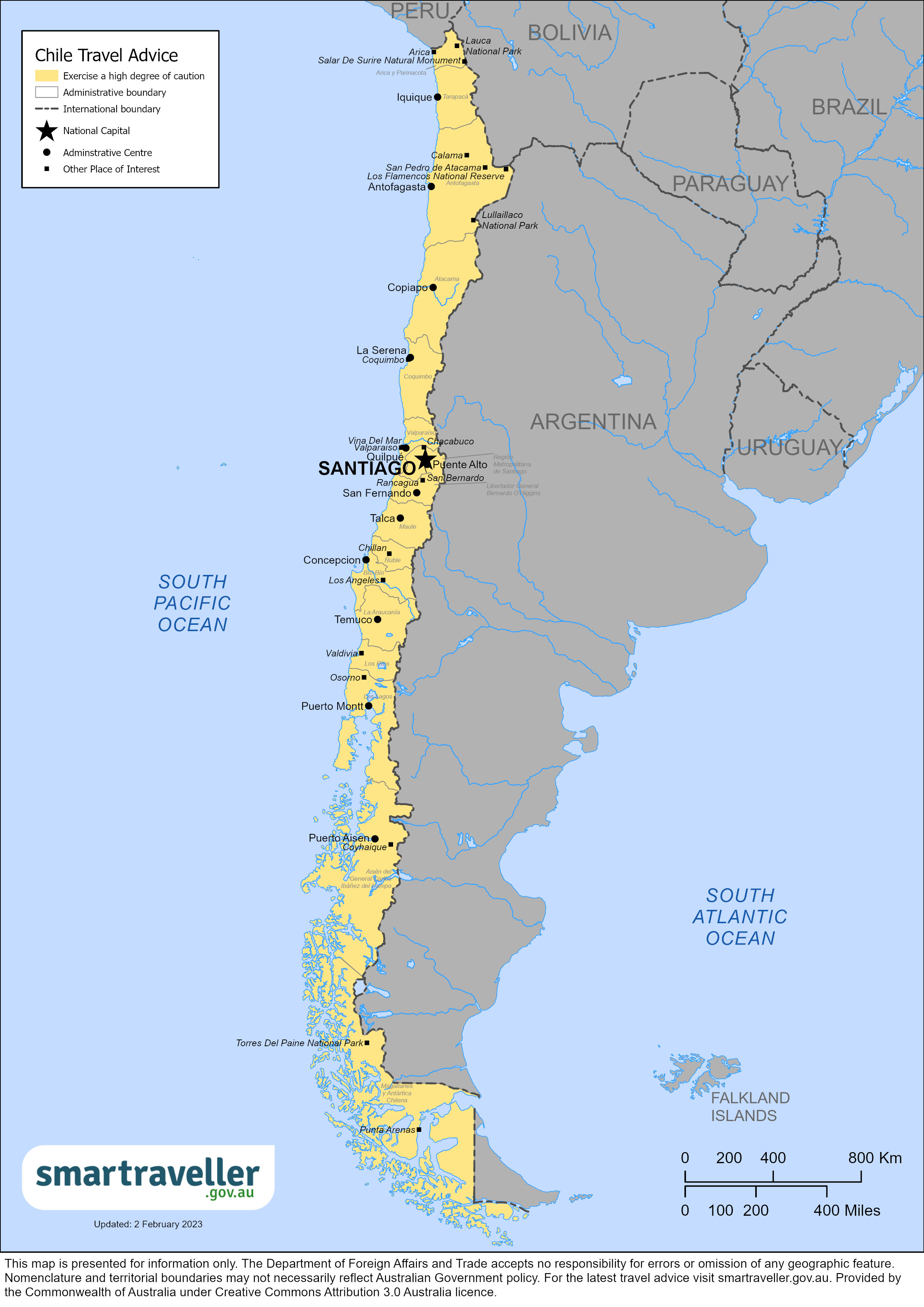
Chile (PDF 550.41 KB)
Americas (PDF 3.25 MB)
Local emergency contacts
For all emergencies, including fire and rescue services.
Police- Call 133
Medical - Call 131
Fire and Rescue - Call 132
Advice levels
Exercise a high degree of caution in Chile.
- Politically motivated demonstrations occur regularly, particularly in Plaza Baquedano (Plaza Italia), Lastarria and Bellavista in central Santiago and the centre of Valparaiso. Outbreaks of violence may occur at any time and have also occurred in the Santiago suburbs of Las Condes, Providencia and Vitacura, where the Australian and other embassies are located.
- There are political tensions and violent incidents in the Araucanía region. Exercise caution if travelling in or near that region.
- Local law prohibits political activity by foreign nationals. Participation in protests or demonstrations may result in detention or deportation. Avoid protests and large public gatherings. These can become violent. Authorities use tear gas and water cannons.
- Mugging, armed robbery, pickpocketing and bag snatching are common. Don't walk alone, especially at night. Robberies can occur on inter-city buses while passengers are sleeping. Keep valuables with you and check everything before you leave the bus.
- Domestic terrorist acts sometimes occur, undertaken primarily by anarchist groups in Santiago. They may use explosives. Be alert and report anything suspicious.
- Natural disasters such as fires, earthquakes, volcanic eruptions, flooding and tsunamis can occur. Monitor local media and follow the advice of local authorities.
Full travel advice: Safety
- Altitude sickness is a risk to anyone travelling above 2,500 metres. Get advice from your doctor. Make sure your travel insurance covers medical evacuation from high altitude.
- Easter Island has had outbreaks of Zika virus and dengue. If you're pregnant, ask your doctor about the risk of Zika virus before you travel. Make sure your accommodation is insect-proof. Use insect repellent.
- Common infectious diseases include hepatitis, typhoid, influenza and rabies. Drink only boiled or bottled water. Avoid raw or undercooked food. If you're bitten or scratched by an animal, get medical help straight away.
- Levels of air pollution are highest in Santiago from April to October. Dust levels can be high between December and March. If you have breathing problems, take care when there's an air contamination alert.
- Private hospital facilities are good in Santiago and other major cities. Treatment is expensive. You may need to pay cash before treatment.
Full travel advice: Health
- Don't use or carry illegal drugs. Drug offences carry severe penalties, including long prison sentences.
- If you're also a citizen of Chile, and entered the country using a Chilean passport, the Chilean Government may not recognise your Australian citizenship. This could affect your access to consular help and entry or exit requirements. Before travelling, check your citizenship status and any entry or exit requirements with an Embassy or Consulate of Chile .
Full travel advice: Local laws
- Australian citizens must obtain a visa before travelling.
- If your travel includes a transit in Chile, contact your nearest Embassy or Consulate of Chile to confirm if you need a visa for Chile.
- Entry and exit conditions can change at short notice. You should contact the nearest embassy or consulate of Chile for the latest details.
Full travel advice: Travel
Local contacts
- The Consular Services Charter tells you what the Australian Government can and can't do to help when you're overseas.
- Contact the Australian Embassy in Santiago for consular assistance.
- To stay up to date with local information, follow the Embassy’s social media accounts.
Full travel advice: Local contacts
Full advice
Civil unrest and political tension, demonstrations and protests.
Large-scale demonstrations and protests might occur in Santiago and other cities. They may take place with little or no notice and may turn violent.
Local authorities have used tear gas and water cannons. Pay close attention to your personal security at all times and monitor the media about possible new safety or security risks. Follow the instructions of local authorities.
Demonstrations and protests can result in public transport disruptions. Public transport may be limited. Contact your airline or tour operator to determine if the situation will disrupt your travel plans.
In the Araucanía region, people claiming to represent the Mapuche community are fighting over land and indigenous rights, with a significant increase in violent incidents (the Mapuche are Chile's largest indigenous group). A state of emergency has been declared in the ‘Macro Zona Sur' (provinces of Biobío, Arauco, Cautín and Malleco) until further notice. The military has been deployed to assist regional police during this period. You should be cautious when travelling within the ‘Macro Zona Sur’.
In recent years, attacks have targeted multinational forestry corporations and private Chilean landowners.
To protect yourself during periods of unrest:
- avoid all demonstrations, protests and large public gatherings
- be alert around days of national significance
- monitor local media and other sources for news, especially before visiting central Santiago or other major city centres
- follow the advice of local authorities
- exercise caution when travelling in the Araucanía region
More information:
- Demonstrations and civil unrest
Petty crime
Muggings and robberies are common in urban areas.
Hotspots for thieves include:
- Viña del Mar
Foreigners are targeted for their personal belongings, and people walking alone at night are more vulnerable.
Muggings, including with weapons, occur in Santiago around:
- Cerro Santa Lucia,
- Cerro San Cristobal Park
- Plaza de Armas
- Mercado Central
- malls/shopping centres
Pickpocketing and bag snatching is common. Be aware in crowded areas, such as:
- public transport, including the metro system
- outdoor cafes
- resort areas
- hotel lobbies
- bars and restaurants
Keep your belongings close in the tourist areas of Santiago including:
- Barrio Lastarria
- Costanera Centre Mall
There have also been a number of armed holdups of stores.
Violent crime
Robberies, assaults and threats with weapons happen mainly at night. Take particular care:
- in Bellavista and Barrio Lastarria in Santiago
Carjackings can occur as residents leave their vehicles to open or close gates.
Tourists have been robbed on inter-city buses, particularly:
- from Calama to San Pedro de Atacama
- at the Calama and Santiago bus stations
Criminal groups often use distraction to rob tourists. Common scams are where:
- an elderly person 'accidentally' drops some coins and when a tourist stops to help, a thief steals the tourist's bag
- thieves squirt a substance onto a tourist and steal their bag while helping them clean up ('bird poo' scam)
- tourists are marked at the airport and followed to their hotels, where luggage theft or threats of assault and robberies can happen
Food and drink spiking occurs.
To reduce your risk of violent crime:
- avoid going out alone, especially at night
- book taxis by phone, particularly if travelling alone or at night
- keep your belongings close, especially in crowded places
- don't leave valuables in your checked luggage
- don't leave food or drinks unattended
Cyber security
You may be at risk of cyber-based threats during overseas travel to any country. Digital identity theft is a growing concern. Your devices and personal data can be compromised, especially if you’re connecting to Wi-Fi, using or connecting to shared or public computers, or to Bluetooth.
Social media can also be risky in destinations where there are social or political tensions, or laws that may seem unreasonable by Australian standards. Travellers have been arrested for things they have said on social media. Don't comment on local or political events on your social media.
Cyber security when travelling overseas
Anarchist groups stage occasional acts of terrorism, mostly in Santiago. They may use small explosive devices or bombs.
In October 2022, an explosive device was placed outside an office building in Santiago's business district.
In January 2019, an explosion at a bus stop in Santiago injured five people.
To protect yourself from terrorism:
- be aware of your surroundings
- take care on public transport
- report suspicious behaviour or packages to local authorities
Terrorism is a threat worldwide.
Climate and natural disasters
Chile can experience natural disasters and severe weather , such as:
- forest fires
- earthquakes and tsunamis
- volcanic eruptions
To protect yourself during a natural disaster :
- secure your passport in a safe, waterproof location
- monitor local media and other sources, such as the Global Disaster Alert and Coordination System
- keep in contact with friends and family
- National Emergency Service - SENAPRED (Spanish)
- SENAPRED's alerts (Spanish)
- SENAPRED’s map with threats
- SENAPRED’s twitter
Large forest fires often occur in Chile, particularly in summer.
If there's a fire close to your location, obey the evacuation orders of local authorities and monitor the situation.
Earthquakes and volcanoes
Chile is in an active earthquake zone. Earthquakes and volcanic activity may occur.
The Chilean Government uses a 3-tier system to classify volcanoes. The alerts are:
- Green – stable with no immediate risk of eruption
- Yellow – undergoing changes in activity levels
- Red – imminent risk of eruption
If there's an earthquake or volcanic eruption, contact your travel provider about disruptions.
- If t here's been an earthquake or tsunami
- Chile Atiende (in Spanish)
Chile is at risk of tsunamis.
Be alert to warnings, as a tsunami can arrive very soon after a nearby tremor or earthquake.
Move immediately to high ground if advised by local authorities, or if you:
- feel a strong earthquake that makes it hard to stand up
- feel a weak, rolling earthquake that lasts a minute or more
- see a sudden rise or fall in sea level
- hear loud and unusual noises from the sea
Don't wait for official warnings such as alarms or sirens. Once on high ground, monitor local media.
- Pacific Tsunami Warning Center
Heavy rainfall and flash flooding can occur with little warning and may affect services and transport, including land border crossings into neighbouring countries.
In June 2023, heavy rainfall resulted in widespread flooding in the centre of Chile. Two people died and almost 10,000 people were isolated.
- Follow the orders of local authorities and monitor the situation.
Travel insurance
Get comprehensive travel insurance before you leave.
Your policy needs to cover all overseas medical costs, including medical evacuation. The Australian Government won't pay for these costs.
If you can't afford travel insurance, you can't afford to travel. This applies to everyone, no matter how healthy and fit you are.
If you're not insured, you may have to pay many thousands of dollars up-front for medical care.
- what activities and care your policy covers
- that your insurance covers you for the whole time you’ll be away
Physical and mental health
Consider your physical and mental health before you travel, especially if you have an existing medical condition.
See your doctor or travel clinic to:
- have a basic health check-up
- ask if your travel plans may affect your health
- plan any vaccinations you need
Do this at least 8 weeks before you leave.
If you have immediate concerns for your welfare or the welfare of another Australian, call the 24-hour Consular Emergency Centre on +61 2 6261 3305 or contact your nearest Australian Embassy, High Commission or Consulate to discuss counselling hotlines and services available in your location.
- General health advice
- Healthy holiday tips (Healthdirect Australia)
Medications
Not all medication available over the counter or by prescription in Australia is available in other countries. Some may even be considered illegal or a controlled substance, even if prescribed by an Australian doctor.
If you plan to bring medication, check if it's legal in Chile. Take enough legal medication for your trip.
Carry a copy of your prescription or a letter from your doctor stating:
- what the medication is
- your required dosage
- that it's for personal use
Health risks
Altitude sickness.
You’re at risk of altitude sickness if you travel above 2500m.
Altitude sickness can be life-threatening and can affect anyone, even if you're fit and healthy.
You're at greater risk of altitude sickness if you:
- ascend quickly or make rapid ascents at higher altitudes
- have had altitude sickness before
- exercise or drink alcohol before you get used to the altitude
- have lung problems that affect breathing
If you'll be travelling above 2,500m:
- see your doctor for specific advice
- check your insurance covers emergency evacuation from altitude and related medical costs
Insect-borne diseases
Outbreaks of Zika virus and dengue have occurred on Easter Island.
If you're pregnant, the Australian Department of Health recommends that you:
- discuss any travel plans with your doctor
- consider deferring non-essential travel to Zika virus affected areas
To protect yourself from disease:
- make sure your accommodation is insect-proof
- use insect repellent
- wear long, loose, light-coloured clothing
Get medical advice if you have a fever, muscle pain, rash or severe headache.
Other health risks
Outbreaks of waterborne, foodborne and other infectious diseases occur sometimes. These include:
To protect yourself from illness:
- drink boiled water or bottled water with sealed lids
- avoid ice cubes
- avoid raw and undercooked food, such as salads
- avoid contact with dogs and other mammals
If you're bitten or scratched by an animal, get medical help straight away.
Get medical advice if you have a fever or diarrhoea.
- Infectious diseases
Air pollution
High levels of smog and air pollution occur in Santiago from April to October.
High levels of dust often occur from December to March.
The Chilean Government regularly issues pre-emergency alerts for air contamination.
If you have breathing problems, take extra care when there's a pre-emergency alert for air contamination.
Medical care
Medical facilities.
Medical facilities at private hospitals in Santiago and other major cities are good but very limited elsewhere.
Treatment at private clinics and hospitals is expensive.
Most large hospitals accept credit cards.
You may need to pay cash before doctors and hospitals will treat you, even in an emergency.
Fundación Honra offers an English-speaking service to victims of domestic violence and can be contacted on + 56 2 2835 6044.
You're subject to all local laws and penalties, including those that may appear harsh by Australian standards. Research local laws before travelling.
If you're arrested or jailed, the Australian Government will do what it can to help you under our Consular Services Charter. But we can't get you out of trouble or out of jail.
Penalties for drug offences are severe and include long prison sentences in local jails.
- Carrying or using drugs
Australian laws
Some Australian criminal laws still apply when you’re overseas. If you break these laws, you may face prosecution in Australia.
- Staying within the law and respecting customs
Dual citizenship
Chile doesn't recognise dual nationality.
If you're a dual national, this limits the consular services the Australian Government can provide if you're arrested or detained.
If you're of Chilean origin, you may be deemed a Chilean national under Chilean law. This may apply even if you've taken steps to renounce Chilean citizenship.
If you're considered a Chilean national under Chilean law, you may need to enter and exit Chile using a Chilean passport or ‘cédula de identidad’.
Different rules may apply to a child aged under 18 years who was born overseas to Chilean parents.
Confirm your citizenship status and entry and exit requirements with an embassy or consulate of Chile before you travel.
- Dual nationals
Visas and border measures
Every country or territory decides who can enter or leave through its borders. For specific information about the evidence you'll need to enter a foreign destination, check with the nearest embassy, consulate or immigration department of the destination you're entering.
To enter Chile, Australian citizens must obtain a visa before arrival: SAC Sistema Atención Consular - Ciudadanos .
You can't stay on Easter Island (Isla de Pascua/Rapa Nui) for more than 30 consecutive days.
Entry and exit conditions can change at short notice. Contact the Embassy or Consulate of Chile for details about visas, currency, customs and quarantine rules.
Important information about the visa
You must obtain your visa before you arrive in Chile. The application process can be lengthy, so allow yourself enough time before your planned travel.
If you arrive in Chile without a valid visa, you won't be able to pass the immigration point, and you'll be sent back to your last port of departure. You won't be able to obtain a visa at the airport or border entry point.
If you applied for a single-entry visa, and you enter Chile to then travel to another country, you won't be able to use that visa to enter Chile again.
When travelling to Chile, you'll get a tourist card (paper) on arrival. You must keep the card and present it to immigration officials when departing Chile. You can request a new copy online if your tourist card is lost or stolen. For specific information, visit the closest International Police (PDI) Office .
Entry into Chile
Besides having the e-visa described above, there are other requirements/technicalities at the airport:
- When going through Immigration, you'll be given a slip of paper certifying your entry. You must keep this paper carefully, as it will be requested at departure. If you lose it, you'll have to request a new one from Immigration, and your departure from Chile may be delayed for an uncertain period.
When entering Chile, all travellers must complete the Customs (Aduanas) and Agro-sanitary (SAG) declarations and checks by following this link: https://djsimple.sag.gob.cl
If you're a dual-national (Australian-Chilean) or a resident of Chile, you may be required to enter using your Chilean ID documents (Chilean passport, or Chilean 'cédula de identidad').
Transit through Chile
If your travel includes transiting through Chile, you should contact the nearest Embassy or Consulate of Chile to confirm if you'll need a visa.
If you transit in Chile without a visa and miss your connecting flight, you won’t be able to pass the immigration point. You'll be required to remain airside and not leave the airport until a new onward flight has been arranged. Australians have previously been required to remain airside for several days due to missed flight connections.
Departure from Chile
You may encounter serious difficulties if you try to leave Chile without the slip of paper given by Immigration upon entry. It will be requested when you go through their booths at departure.
If you are a dual-national (Australian-Chilean), you may be required to depart using your valid Chilean passport or Chilean 'cédula de identidad'. Chile's Migration Police (PDI) has denied the departure of dual nationals with expired Chilean passports. If you don't have a Chilean travel document upon entry, you can apply for one through Registro Civil while in Chile to facilitate your departure.
Read the requirements and restrictions of the destination you're travelling to.
- Ministry of Foreign Affairs (Spanish)
Other Formalities
Travel with children.
If you're travelling with children aged younger than 18, you may need to show the original, and provide a copy, of the child's birth certificate, particularly if the parent and child don't share a family name.
The article ' E-visa para Australia' outlines the requirements for minors under 18 years of age to enter Chile:
- minors must enter the country accompanied by their mother, father, guardian or person in charge of their personal care. Otherwise, they must have written authorisation from one of the minor's parents, from a Court or the competent Authority.
- the authorisation must be legalised by a Chilean Consular authority in the country of origin or include the corresponding apostilled certificate.
- they can also present a document recognised as valid by the Chilean border control authorities in virtue of the international agreements signed by Chile, which are currently in force.
A child aged under 18 years who isn't accompanied by one or both parents must carry 3 copies of the following:
- the legalised written authorisation certifying the agreement of any absent parents
- a copy of any court order conferring custody of the child, including sole custody (if relevant)
- Note: Read ' Notarial services' if you intend to apostille the authorisation with DFAT, as we can only apostille notarised documents serviced by an Australian Notary Public.
You also need a Spanish translation of the documents notarised no more than 3 months before travelling at either:
- the Ministry of Foreign Affairs in Santiago by a Chilean consular officer, or
- a Chilean Embassy or Consulate
You can use the same document for entry and exit.
A child aged under 18 years born overseas to Chilean parents can enter Chile on an Australian passport and remain for up to 90 days as a tourist (see 'Visas').
For stays longer than 90 days, the child must obtain a Chilean passport.
See Local law
As outlined in the requirements for temporary admission for Australian passport holders , your Australian passport must be valid for at least 6 months from the date of arrival in Chile.
Some agencies and airlines apply the rule inconsistently. You may receive conflicting advice from different sources.
The Australian Government does not set these rules. Check your passport’s expiry date before you travel. If you’re not sure it’ll be valid for long enough, consider getting a new passport .
Lost or stolen passport
Your passport is a valuable document. It's attractive to people who may try to use your identity to commit crimes.
Some people may try to trick you into giving them your passport. Always keep it in a safe place.
If your passport is lost or stolen, tell the Australian Government as soon as possible:
- In Australia, contact the Australian Passport Information Service .
- If you're overseas, contact the nearest Australian embassy or consulate .
Proof of identity
Always carry a clear copy of your Australian passport as proof of ID.
Keep your passport in a safe location when not being used.
You'll need to show your Australian passport when:
- booking a hotel or hostel
- travelling by air in Chile
Passport with ‘X’ gender identifier
Although Australian passports comply with international standards for sex and gender, we can’t guarantee that a passport showing 'X' in the sex field will be accepted for entry or transit by another country. Contact the nearest embassy, high commission or consulate of your destination before you arrive at the border to confirm if authorities will accept passports with 'X' gender markers.
- LGBTI travellers
The local currency is the Chilean Peso (CLP).
Amounts higher than $US10,000 must be declared on arrival and departure. This covers all forms of currency, not only cash.
US dollars can be readily exchanged throughout Chile.
Check your change as vendors, including taxi drivers, sometimes swap denominations to short-change travellers.
ATMs are widely available. Contact your bank to find out whether your cards will work in Chile. Credit cards are widely accepted.
Local travel
Local restrictions
Border areas
If you're planning scientific, technical or mountaineering activities in areas classified as 'frontier areas', you need approval from the Chilean Government 90 days before travelling.
Unexploded mines
Anti-tank mines and landmines are a danger in national reserves and parks near northern borders, including:
- Lauca and Llullaillaco National Parks
- Salar de Surire National Monument
- Los Flamencos National Reserve
Be aware of unexploded weapons outside of military zones in the desert areas bordering Chile and Peru.
Take note of clearly marked landmine fields in the Magallanes region of southern Chile:
- between Punta Arenas and the Torres del Paine National Park
- in Tierra del Fuego
To avoid unexploded mines :
- seek advice from local authorities for these areas
- obey all warning signs
- stay on clearly identified roads
Driving permit
To drive in Chile, you need either:
- a valid Australian driver's licence, or
- an International Driving Permit (IDP)
You need to get your IDP before leaving Australia.
Road travel
Driving in Chile can be dangerous.
Hazards for drivers include:
- aggressive local driving practices
- poorly maintained secondary and rural roads
- poor street lighting
- no guardrails on mountain roads
It's illegal to drive with any blood alcohol content in Chile. Penalties can include jail.
If you intend to drive in Chile:
- check local traffic laws and practices
- use chains on mountain roads during winter
- Driving or riding
Motorcycles
Your travel insurance policy may not cover you when riding a motorbike, quad bike or similar vehicle.
Always wear a helmet. Make sure your passenger does too.
Prepaid official taxis are available at the airport.
To protect yourself from crime and overcharging:
- avoid hailing taxis on the street, particularly if travelling alone or at night
- ask your hotel to make a telephone booking for you
- make sure that the driver uses the meter.
Rideshare apps are also available.
Public transport
Chile has a well-developed metro and bus network.
Santiago and Valparaiso are served by commuter rail. Opportunities for long-distance travel by rail are limited.
Tourists on inter-city buses, particularly from Calama to San Pedro de Atacama, have been robbed while sleeping.
If you take public transport:
- don't store valuables in overhead lockers
- keep your valuables with you at all times
- check your belongings before you get off
- Transport and getting around safely
Some international cruise liners visit Chile.
- Going on a cruise
DFAT doesn’t provide information on the safety of individual commercial airlines or flight paths.
Check Chile's air safety profile with the Aviation Safety Network.
Emergencies
Depending on what you need, you should contact your:
- family and friends
- travel agent
- insurance provider
Fire and rescue services
Medical emergencies.
Call 131 or go to the hospital.
Call 133 or contact the nearest police station.
Always get a police report when you report a crime.
Your travel insurer should have a 24-hour emergency number.
Chile has 2 main police agencies.
For police reports in English:
Carabineros de Chile (Primera Comisaria)
Santo Domingo 714
Santiago Centro
If you lose your passport and need a police report for insurance, ask for a 'Proof of Loss of Documents' (Spanish: 'Constancia de Perdida de Documentos') from:
Policia de Investigaciones (PDI)
Eleuterio Ramirez 830
Consular contacts
Read the Consular Services Charter for what the Australian Government can and can’t do to help you overseas.
For consular help, contact the Australian Embassy in Santiago de Chile.
Australian Embassy, Santiago de Chile
Isidora Goyenechea 3621 13th Floor, Las Condes Santiago de Chile Phone: (+56 2) 2550 3500 Fax: (+56 2) 2550 3560 Email: [email protected] Website: chile.embassy.gov.au Facebook: Embajada de Australia en Chile y Ecuador Twitter: @AusEmbCL
Instagram: AusEmbCL
Check the Embass y website for details about opening hours and any temporary closures.
24-hour Consular Emergency Centre
In a consular emergency, if you can't contact an embassy, call the 24-hour Consular Emergency Centre on:
- +61 2 6261 3305 from overseas
- 1300 555 135 in Australia

Travelling to Chile?
Sign up to get the latest travel advice updates..
Be the first to know official government advice when travelling.
- CHILE – 7 days
- eSIM Supported List
- How to Set up
- About esimchile.net
No products in the cart.
Chile SIM Cards: Detailed Guides
Using Chile SIM cards is the best option if you’re getting ready to travel to Chile and want to keep in touch. Purchasing a SIM Card in Chile may make traveling much easier since it provides affordable data, calls, and texts without charging you outrageous roaming costs from your home service provider. We will cover every important element in this guide on how to get a prepaid SIM card in Chile.
Table of Contents
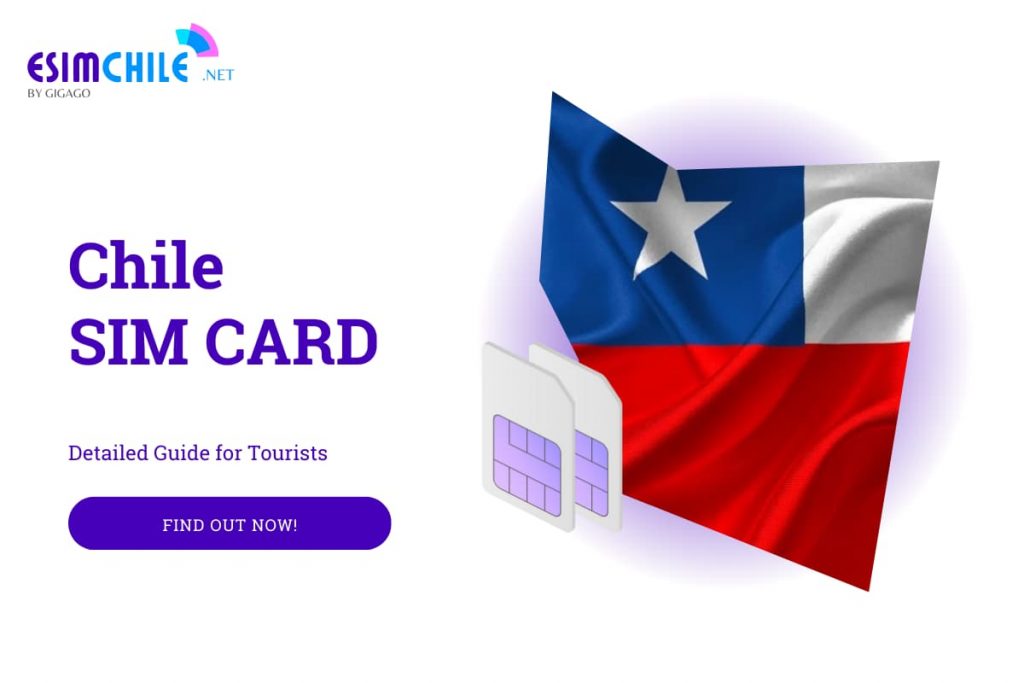
1. Should I Buy a New Chile SIM Card for My Trip?
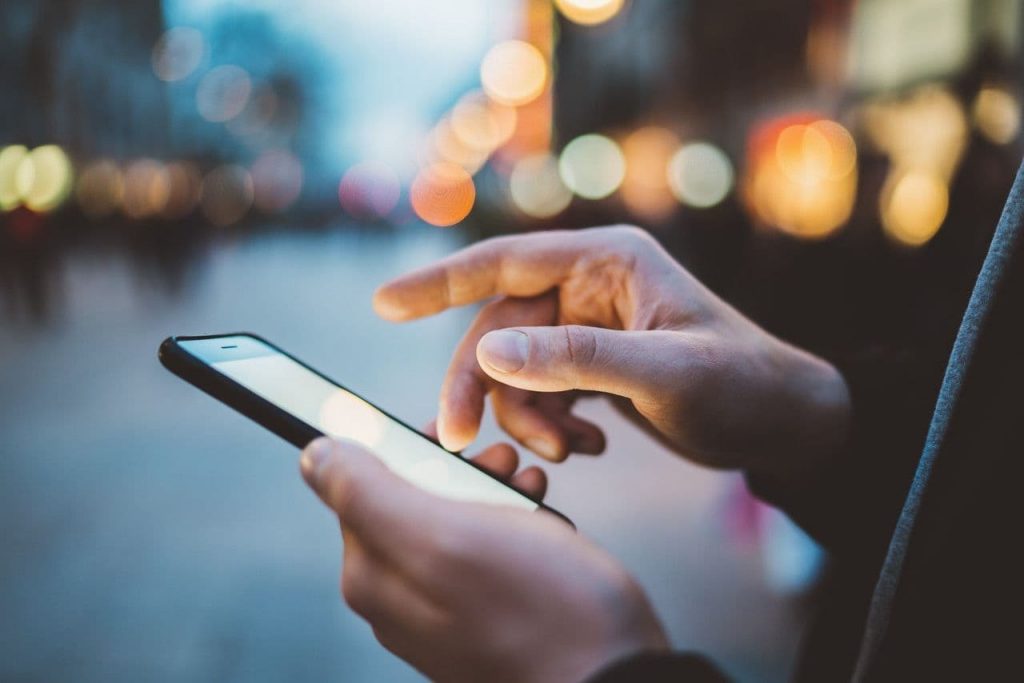
Chile offers several convenient options for visitors to get connected:
Though each of them has its own pros, the most promising option for tourists traveling in Chile will be staying connected locally through a local SIM card or eSIM. Free Wifi wastes a lot of hours on waiting for networks to appear so it is suitable for savers. Portable Wi-Fi devices or roaming plans is very expensive when travelling longer distances. Having a prepaid Chile SIM or tourist eSIM eliminates those concerns – you have control of the data and there are no overage charges, while coverage is solid regardless where in the country that takes place.
2. Chile SIM Card Types – Which One is the Best for Tourists?

When getting a Chile SIM card as a traveler, you have two main options:
For most tourists visiting Chile, e-SIM cards are also a viable option if you meet the device requirements and prefer the convenience.
3. How Much Data is Enough for a Prepaid Tourist SIM Card for Chile?
Choosing the right data allowance for your Chile SIM card depends on your expected usage during your trip:
If you need basic internet access like emails, simple navigation and light social media usage, a 6GB data SIM card should be enough for a 5-7 days visit . This would allow approximately 1GB of data per day.
Some example light usage:
- Emails & messages
- Basic maps & transportation
- Occasional social media
3.2. Heavy Usage
For more intensive usage like extensive mapping, streaming video & music, gaming, working remotely etc you should opt for an 8-15GB SIM card for a 5-7 day trip . This would provide 2-3GB per day on average.
Some example heavy usage cases:
- Using phone as WiFi hotspot
- Streaming videos/music
- Working remotely
The average data usage can vary greatly depending on your specific usage. But as a general rule for Chile tourist SIM cards, 6GB will cover most travelers’ basic usage for 5-7 days while 8-15GB is recommended for heavy data users visiting for under 1 week.
4. How Much Does a Chile SIM Card Cost?
Here is an overview of current prepaid SIM card rates from major providers in Chile:
Entel has various plans for tourists from 1.5 GB to Unlimited Data. It is basic plans which tourists need for their trips. If you want more plans you can take Movistar into consideration.
Of these providers, Movistar has the most widespread network coverage, extending even to remote rural areas. However, Movistar’s service plans are typically more expensive compared to the other carriers. Moreover you can consider Claro’ plan:
An other mobile operator is WOM. Here is some plans of WOM:
Taking into account pricing, data quotas and coverage area, Entel prepaid SIM cards appear to provide the best overall value for most tourists in Chile. Because providers can offer connectivity at affordable rates.
5. Chile eSIM – Alternative to Physical SIM Cards
Instead of using a plastic SIM card that inserts into your phone, an embedded SIM or eSIM is a digital SIM integrated into your phone or device. eSIM technology allows dual SIM capability through a standard SIM slot plus an integrated eSIM.
eSIM has a lot of benefits for users:
- Diverse options for data and validity
- Buy and install in advance, use immediately after landing
- Fast support, no need to contact the network operator
- Multi-SIM capability, allow you to digitally switch between plans or have multiple plans active.
- Security, be not removed or swapped, reduces risk of SIM swap fraud.
In general, eSIM technology offers travelers better connectivity alternatives more flexibility security and facilitation through electronic control. You can take esimchile.net into consideration. esimchile.net provides various plans from 1GB to 5GB.
The process is straightforward – customers purchase the eSIM online, then the activation QR code is emailed and can be instantly scanned to download. This eliminates the need to switch physical SIM cards, ensuring smooth connectivity in Chile without hassle.
Note: Make sure your phone model supports eSIM before ordering one.
6. Where to Buy a Chile SIM Card?
When you want to buy a Chile SIM Card, there are some options:
6.1. Buy a physical SIM Card
- Buy at Airport
Major airports like Arturo Merino Benitez International Airport have SIM card desks or shops operated by Chile telcos like Movistar , Claro , WOM and Entel . Prices are generally reasonable but selection can be limited.
- Local Provider Stores
In cities and towns across Chile, visit a local Movistar, Claro,WOM or Entel store. They offer the most options for data packages and SIM types. Staff may be less proficient in English though.
- Mall Kiosks
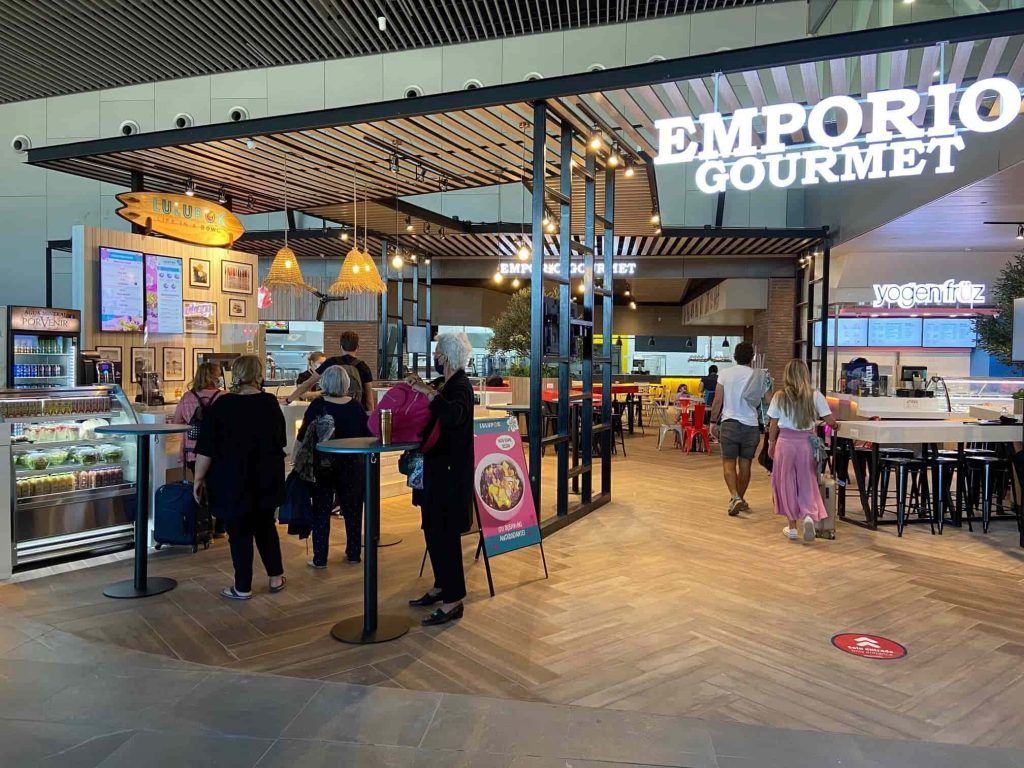
Many malls in Chile have independent kiosks selling SIM cards from various carriers. Usually offer competitive pricing and data plans. Staff likely speak basic English.
- Online Orders
You can order physical SIM card from resellers like Movistar , Claro , WOM and Entel have more local plans which is very affordable for you to buy.
6.2. Buy eSIM online
To activate an eSIM directly from your phone, follow these steps:
- Ensure that your phone is compatible with eSIM technology.
- Explore eSIM offers from providers such as albaniaesim.com and alosim.
- Choose a suitable data package.
- Create an account and provide your passport details.
- Activate your eSIM directly on your phone.
- Keep in mind that while buying online is convenient, the selection may be limited.
Additionally, it’s important to carefully compare rates as eSIM data packages are often more expensive than local SIM cards.
Say farewell to roaming fees with a Chile eSIM . For just $18.9, enjoy reliable data coverage throughout the country.
7. How to Use Chile SIM
Here is a quick guide to installing and using your Chile SIM card:
- Unlock Phone – Your device must be network unlocked to use another SIM. Contact your home carrier to unlock if needed.
- Insert SIM – Turn phone off, locate your SIM tray and gently insert the Chile SIM.
- Setup SIM – Turn phone on and follow prompts to setup your plan and data package. Enter any PIN codes as required.
- Top Up – When SIM data or minutes run low, you can top-up at local stores. Ask your provider for top up instructions.
- Contact Support – Most Chile SIM providers have English customer support if you face any issues. Check with store staff or call support numbers on pamphlets with your SIM.
Be sure to properly set up install Chile eSIM to use mobile data, SMS and calls based on your particular service package. Confirm billing details and top up methods to avoid service disruptions during your trip. Enjoy seamless connectivity across beautiful Chile!
8. Best Mobile Operators for Chile SIM Cards
In Chile the major mobile networks are Movistar, Entel and Claro, with WOM a popular budget option.
Here is a table comparing the major mobile operators in Chile:
Best Mobile Operators for Chile SIM Cards
In summary, Entel provides the most robust coverage nationwide, while Claro annd Movistar may be better for heavy data users. You can buy Entel Sim Card of esimchile.net .
9. Tips for Saving Data for Chile SIM Card
To reduce excessive data usage that can drain your prepaid SIM card allowance, follow these tips:
Leverage WiFi
Whenever free public WiFi is available, connect instead of using SIM data. Many hotels, cafes, transport hubs and tourist sites offer complimentary WiFi.
Download Maps Offline
If you are navigating a lot, pre-download Google/Apple Maps of the areas you will be visiting via WiFi before going mobile.
Limit Streaming
Streaming video and music eats huge amounts of data. Download content when on WiFi or reduce streaming usage over SIM data.
Disable Auto App Updates
Stop apps continuously updating and draining data in the background by disabling auto updates in settings. Update manually only when on WiFi.
Turn Off Data Roaming
Default roaming data is very expensive. Be sure data roaming is off, and manually enable brief usage only if absolutely necessary.
Follow these simple practices to save significant data usage on your Chile prepaid SIM, preventing the need for expensive top-ups during your trip!
Can I use eSIM for Chile?
Yes, eSIM data packages are available for Chile but still limited. Physical SIM cards still offer far better value currently and have wider compatibility.
Where is the cheapest place to buy a Chile SIM?
Local provider stores across Chile generally have very similar pricing. WOM locations offer some of the cheapest prepaid data rates. Airport desks can be good options for convenience too.
How long does activation take?
Activation is immediate in-store when purchasing SIM. Just follow prompts to setup data, calls etc when inserting SIM into phone. Total process takes about 10-15 minutes.
Can I top up my SIM in Chile?
Yes, you can top-up prepaid credit at thousands of locations across Chile like supermarkets, pharmacies and metro stations. Ask your provider for specific top up instructions.
How long is my SIM active without use?
Most Chile SIM cards remain active for 30-90 days after activation. To extend longer, you need to top up even without using data/minutes. Check with provider for validity timeframes.
11. Conclusion
A local Chile prepaid SIM card is extremely useful for convenient calling, maps, transportation and internet access during your travels.eSIM still provides the best value and availability.
Major carriers such as Movistar and Claro provide excellent value with their data and call packages. Choose a network known for extensive 4G coverage where you’ll be traveling. Use your data allocation wisely.
An Chile SIM card allows you to readily share your adventures, access maps for navigation assistance, and keep in contact with those at home. Have a wonderful trip and remain connected throughout your travels!
Get Started
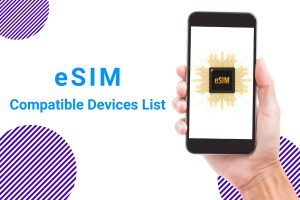
Useful Guide
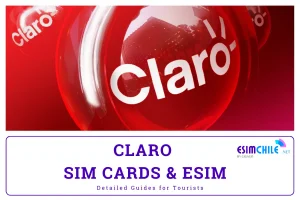
Username or email address *
Password *
Remember me Log in
Visas costs in Chile: how much does your visa cost?
How to pay for your visa? Where to find the cost of a visa to Chile, depending on the type of visa you apply for?
- Expat Guide
- Immigration / Chile Visas
- Chile Visas costs
08/08/2019, updated 15/06/2023
How to pay for your visa?
The Chile immigration service (Servicio de Migraciones) has implemented a new online platform for visa applications.
When you apply for a visa, you pay immediately after finishing to file your application. It can be done online, using the payment systems available in Chile. If you are not yet in Chile, you will be able to pay:
- by credit card using the WebPay system, which allows international credit card (make sure your bank has not restricted international payments).
- using PayPal: you can use your PayPal account, or pay by credit card on PayPal.
Please note that when filing a visa for you and your family:
- children below 18 years old don't pay visa fees.
- if you relocate with your partner, you must first fill out your own application and pay it. Then, there will be a checkbox saying "do you want a grouped application?", which means with your family. If you tick that, you will be asked to fill out your partner and children applications.
Cost of visas
- Temporary residency visa
As far as the cost of a visa is concerned, the immigration service distinguishes three types of visas:
- Student visa
Each type of visa may have a different cost. You can check this page from the immigration service website to check the price of the visa.
Below are the current visas fees in US dollars as of June 2023. The immigration service last updated the visa fees in 2020 and has not modified them since then.
Cost of the work permit as a tourist
For those wishing to work on a tourist visa, the cost of the tourist work permit is 1.5 times the price of the visa subject to a work contract.
Cost of the permanent residency
The cost of permanent residency is 105.713 Chilean pesos. However, you do not have to pay if your partner (marriage or civil union) is Chilean or if you are less than 18 years old when you apply.
The immigration service may deny your permanent residency and grant you a new temporary visa instead. In that case, they will ask you to pay (or refund you) the difference between the cost of permanent residence and the cost of your temporary visa (based on your citizenship).
Cost of the Chilean citizenship
The cost of the Chilean citizenship application is 29,436 Chilean pesos. However, the price is reduced to 5,887 Chilean pesos for foreigners with a Chilean partner or a Chilean son/daugher.
Get help to relocate to Chile!
Banking, Health, Visas… Receive Free Daily tips to prepare your move

Chile Tourist Visa
- Table of contents
Traveling to Chile
Who needs a chile visa, chile tourist visa validity, application form, personal photos, accommodation or invitation, financial proof, criminal record, chile visa application steps, chile tourist visa fees, where to apply, chile tourist visa processing time, approved visa applications, chile visa extension, chile tourist visa faq.
Chile is a popular South American destination that attracts millions of visitors each year for its vibrant cities, fascinating history and culture, over 6,000 kilometers of Pacific Ocean coast line, and majestic mountain ranges.
Foreign nationals from the following countries must apply for a Chile visa, before traveling to Chile: Afghanistan, Algeria, Angola, Armenia, Australia, Azerbaijan, Bahrain, Bangladesh, Belarus, Benin, Bhutan, Botswana, Brunei, Burkina Faso, Burundi, Cambodia, Cameroon, Cape Verde, Central African Republic, Chad, China, Comoros, Congo, Congo (Dem. Rep.), Cote d'Ivoire (Ivory Coast), Cuba, Djibouti, Dominica, Dominican Republic, Egypt, Equatorial Guinea, Eritrea, Eswatini, Ethiopia, Gabon, Gambia, Ghana, Guinea, Guinea-Bissau, Haiti, India, Iran, Iraq, Jordan, Kazakhstan, Kenya, Kiribati, Kosovo, Kuwait, Kyrgyzstan, Laos, Lebanon, Lesotho, Liberia, Libya, Madagascar, Malawi, Maldives, Mali, Marshall Islands, Mauritania, Micronesia, Morocco, Mozambique, Myanmar, Namibia, Nauru, Nepal, Niger, Nigeria, North Korea, Oman, Pakistan, Palau, Palestinian Territories, Papua New Guinea, Philippines, Qatar, Rwanda, Samoa, Sao Tome and Principe, Saudi Arabia, Senegal, Seychelles, Sierra Leone, Solomon Islands, Somalia, South Sudan, Sri Lanka, Sudan, Suriname, Syria, Tajikistan, Tanzania, Timor-Leste, Togo, Tunisia, Turkmenistan, Tuvalu, Uganda, Uzbekistan, Venezuela, Yemen, Zambia, and Zimbabwe.
The Chile Transitory Stay Visa, for tourism purposes, is issued as single or multiple entry and valid for 90 days from the date of entry into Chile, allowing up to a maximum 90-day stay, or in some cases less than 90 days, depending on your nationality and purpose for travel to Chile.
Chile Tourist Visa Requirements
Foreign travelers should meet the following when applying for a Chile tourist visa:
The following are required when applying for a Chile visa:
Fill out a Chile visa application form online .
Copy of passport information page.
One recent, full frontal color photo on white background, 5cm x 5cm.
Valid hotel reservations or a notarized invitation from a Chilean host, complete with host’s contact information
Bank statements for the past 3 months.
Residence visas if applicant resides in a foreign country.
A valid certificate proving clean criminal record.
Please note that applicants may be asked to provide additional information, such as academic letters, work invitations, birth certificates, parental consent letters, or other type of documentation. Required documents should be uploaded in PDF format, while the personal photo should be in JPG format.
Please follow these steps when applying for a Chile tourist visa:
o Log in to the Chile Consular Attention System (SAC) . o Fill out a Chile application form online. o Upload all required documents in the stated format.
If approved, an email will be sent with payment instructions that must be made within 30 days.
o Pay fee securely online within 30 days. o Receive proof of payment by email.
o Applicant will be contacted to visit their nearest Chilean representation office in person. o Applicant should present all original documentation at the interview.
o Approved visas will be sent to the email you provided, OR collected from the Chile embassy, consulate, or representation office where your visa application was processed. o Check all information is correct and matches your passport.
The Chile tourist visa fee depends on the applicant’s nationality and the Chilean embassy or representation office processing the visa application. After the applicant submits their visa application, they will receive an email either approving or denying their visa request. If approved, the email will contain payment instructions, which must be made within 30 days.
Foreign nationals applying for a Chile tourist visa should do so online at the Chile Consular Attention System (SAC) and nearest Chile embassy, consulate, or foreign mission abroad.
Chile tourist visa processing times vary, depending on the applicant’s nationality and the Chile embassy or consulate where the application is being processed.
Approved Chile tourist visas will be sent to the email you provided or collected from the Chile embassy, consulate, or foreign office where the visa application was processed.
You can extend a valid Chile tourist visa only once for up to a maximum of 90 days, by applying to the Chile National Migration Service. Travelers who overstay their Chile visa validity dates will be fined. Requirements include: proof of visa extension payment, reasons and supporting documents for visa extension, and financial proof during applicant’s stay in Chile.
The Chile tourist visa is valid for 90 days from the date of entry into Chile and allows for a maximum 90-day stay, extendable for another 90 days. Depending on your nationality, your Chile tourist visa could be issued for less than 90 days.
The Chile tourist visa fee depends on the applicant’s nationality and the Chilean embassy or representation office processing the visa application. Once the application has been submitted, applicant will receive an email either approving or denying their visa request. If approved, the email will contain payment instructions, which must be made within 30 days.
No, foreign nationals who hold a Chile tourist visa are not permitted to work in Chile or perform any remunerated activities. Foreign nationals wishing to work in Chile should apply for a residency in Chile.
Check if you need a visa for your next destination
Latest news and articles.

Greece unveils visa-on-arrival program for Turkish tourists to 10 islands

Ireland imposes visa requirements on citizens of Dominica, Vanuatu, and Honduras

The essential traveler's guide to understanding various types of visas

Chile Visa: Visa Requirements And Application
Last Updated : 06 May 2024
Last Updated : 06 May 2024 at
Are you looking for diverse landscapes, vibrant street art, or some unforgettable memories? Then Chile is your answer.
This post is about all things Chile! I'll discuss the costs, processing time, required documents, application process, and more.
Let's get started:

Get Your Tourist Visa To Chile Without Hassle!
Before scrolling through many websites to find out how to get your Chile Tourist Visa, I suggest you apply through Atlys.
Applying for your visa can't be easier. All you need to do is provide some personal and travel information. Then the rest you can leave up to them. Welcome to the new generation of visa applications.
What Is The Chile Tourist Visa?
Before I start to explain the application process, you first need to know what a Chile Tourist Visa is. Simply put, a Chile Tourist Visa is a travel authorization document that allows you to enter the country for tourism purposes.
For example, suppose you are planning a tourism trip to Santiago in the beautiful state of Las Condes. In that case, you might need to apply for a Tourist Visa to Chile.
This visa allows short-term stays to enjoy tourist attractions. You can apply for a Tourist Visa to Chile if you are traveling for the following reasons:
Medical Treatment
Family or social visits
Religious purposes
Any other purpose for which you do not intend to settle in Chile, immigrate to Chile, or engage in a paid activity
What You Need To Know About The Chile Tourist Visa
Now that you have a brief overview of a Tourist Visa to Chile, we can get to the juicy stuff. This section will explain essential information such as who needs to apply for the visa, the fees, etc.
Later I will explain the required documents and how you can apply for the Tourist Visa to Chile. Feel free to click the links if you want to skip ahead.
Who Needs To Apply For A Chile Tourist Visa?
Do us citizens need a visa for chile, do us green card holders need a visa for chile, how long is the chile tourist visa valid, can you extend your tourist visa to chile, what is the chile tourist visa fee, what is the chile tourist visa processing time, can you work with a chile tourist visa.
Your nationality determines whether or not you require a Chile Visa.
Several foreign nationals, including citizens of EU Member States and the United States, can travel to Chile without a visa if their stay does not exceed 90 days . However, if your stay exceeds 90 days , you must apply for a visa.
Visa-exempt countries include Argentina, Bolivia, New Zealand, etc. Please use the document published by the Chilean Ministry of Foreign Affairs to determine if you need a Tourist Visa to Chile .
You can travel to Chile without a visa if you are a visa-exempt national. When you arrive, Chilean immigration officers will give you a Tourist Card ( Tarjeta de Turismo ) that specifies the number of days you can stay.
The Tourist Card is printed on A5 paper and must be kept safe because it must be presented to immigration officers when you leave the country.
No, you don't. If you're traveling for tourism or business purposes you don't need to apply for a visa before traveling to Chile. However, the tourist card you receive on arrival is only valid for 90 days. This means that if your stay exceeds 90 days you must apply for a visa before traveling.
This depends on your nationality. If you're from a country that's part of the visa waiver countries you don't need a visa for Chile. However, if your country is not part of the visa waiver country you must apply for a visa to enter Chile.
The Chile Tourist Visa is valid for a maximum of 90 days . Although the maximum is 90-days , it does not mean that your visa will be granted for 90 days. The Chilean local authorities will decide how long your Chile Tourist Visa will be valid.
Yes , you can. You can extend your Tourist Visa by applying for a Chile visa extension at the Department of Immigration of the Ministry of Interior Affairs.
If you want to apply for a Tourism Extension Visa , you must provide the following documents:
Photocopies of the relevant pages in your passport (personal information, issue/expiry date, and the pages containing your Chile visa stamp).
Original Passport.
Photocopy of your Tourism Card.
You must apply for an extension at least 30 days before your current visa expires.
Your Tourist Visa will be extended for 90 days if your application is approved. Also, the Chilean visa extension procedure costs around $100 .
There is no set fee structure for a Tourist Visa to Chile. The visa fee varies depending on your nationality and can range from $50 to $150 .
The exact amount you must pay will be displayed on the screen once you have completed the Chile visa online application.
However, unlike in other countries, there is no "non-refundable" visa processing fee in Chile. Therefore, if your visa application is approved, you will only have to pay the Chile visa fee. However, you must pay it when you submit your passport and original documents to the Chilean Consulate.
The Chile tourist visa application takes about 20 days to process . Following that, you should consider the date of your appointment with the Chilean consulate. Therefore, I suggest you apply for your Chile Tourist Visa at least 30 days before your trip.
No , you can't. The Tourist Visa does not permit you to work or engage in a paid activity.
However, the Chile Ministry of Interior may grant work authorization to certain foreign nationals in some cases. It refers to foreign nationals who need to work while in Chile, regardless of whether they are paid in Chile or abroad.
You would have to pay 150% of the fee for your nationality's Chile work visa (Visa Subject to Contract) for this type of work authorization.
Work authorization with a Chile Tourist Visa is granted on a case-by-case basis. For that reason, you must first contact the Chilean Embassy before applying.

What Are The Tourist Visa To Chile Required Documents?
Before starting your visa application, you must know all the entry requirements. The entry visa requirements consist of documents that must be submitted during your application process.
Before we get to the required documents, you should know that the documents must be submitted online during your online application. Therefore, you must upload all the documents on your computer before starting your online application.
Let's have a look at the required documents:
Scanned copies of relevant pages in your passport ( personal information, issue/expiry date, previous visas, etc. ).
Flight itinerary ( flight tickets or any form of travel )
Proof of accommodation ( hotel booking confirmation, AirBnB bookings, etc. ).
Proof of sufficient funds ( you must provide bank statements not older than 3 months )
Passport-sized picture
Invitation letter, if applicable ( must be issued by someone who is a Chilean National, Chilean Citizen, or has a Chilean passport )
Travel itinerary ( this can be a letter explaining what you will be doing during your visit to Chile, such as a travel advisory )
Travel insurance ( your travel insurance must cover you for the duration of your international travel )
Important note: Ensure to save your files the same as the following example: ( YourLastName BankStatements.pdf)
What Are The Required Documents For Children Traveling To Chile?
If the child is traveling accompanied by both parents , the following documents are required:
Passport or current National Identity Document, depending on the country of origin.
Original birth certificate or family notebook, plus three photocopies.
If the child is traveling accompanied only by one of their parents , the following documents are required:
Valid passport or national identity document, depending on the country of origin.
Original birth certificate or family book, plus three photocopies.
Original authorization of the parent who does not travel, signed in front of a notary, giving his consent for the departure of the minor or the authorization of the corresponding family court, plus three photocopies.
Original death certificate, in case one of the parents is deceased, plus three photocopies.
If the minor does not travel accompanied by his parents , the following documents are required:
Valid passport or national identity document, depending on the country of origin (see question above).
Original authorization of both parents, signed before a notary, giving their consent for the child's departure, plus three photocopies.
Original death certificate, in case one or both parents are deceased, plus three photocopies.
Original authorization of the corresponding family court, consenting to the child's trip, plus three photocopies.
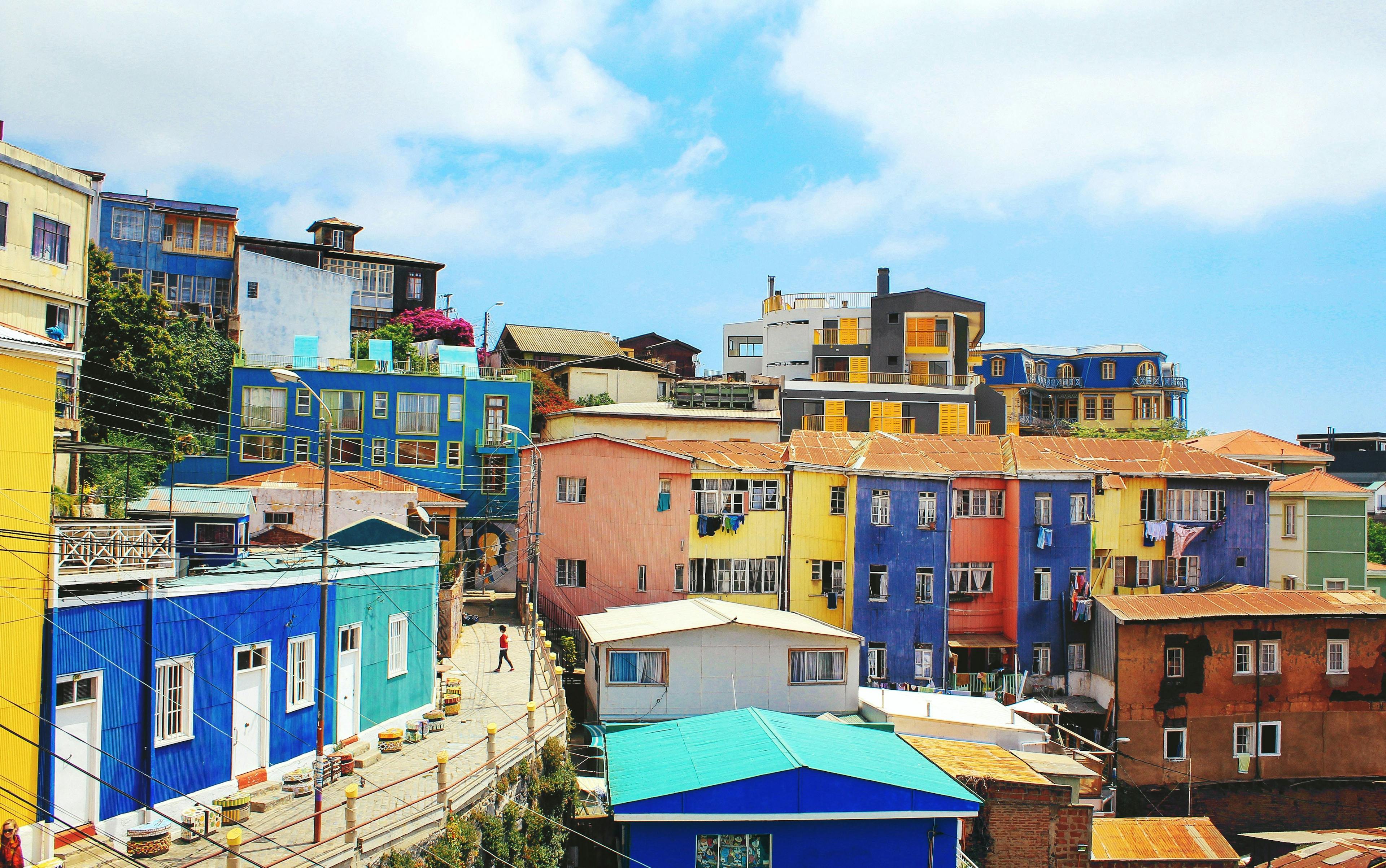
How To Apply For The Chile Tourist Visa?
As I briefly mentioned earlier, your application will be made online. However, please note that you will be using an online platform in a Spanish country. Therefore, I will use a step-by-step explanation of how to complete your Chile Tourist Visa application.
Follow these easy steps to complete your Chile Tourist Visa application:
Step 1: Gather All The Required Documents
Step 2: start your online application, step 3: wait for your application to be processed, step 4: schedule your visa appointment, step 5: attend your visa appointment.
As I mentioned, you must gather all the required documents before starting your online application. The reason, therefore, is that you must submit your documents online at the end of the online application.
Ensure that you have your documents on your computer before starting the application process.
Before starting with your online application, you must note that the website is not easy to navigate as all the information is in Spanish.
As such, I recommend having a translating extension on your browser or using google translate when completing the documents.
On the first 5 pages of the online application, you must complete your personal details and relevant trip information. The relevant information will include your travel dates, parents' details, etc.
Note that under country, the US is Estados Unidos Americanos

You will only be required to submit your required documents on page 6 of the online application process.
After completing the online application, you will receive an email with your validation code. The validation code can be used to recover your online application if you want to make changes.
For the final submission of your Chile Tourist Visa application, you must click finish at the bottom of the page. After clicking on finish, you will receive an email confirming your online application submission.
Because you have applied online, your Chile Tourist Visa application must first be processed before you have to make a visa appointment. As I mentioned earlier, your application may take a maximum of 20 days to process.
As soon as your Chile Tourist Visa has been processed, you will be notified by the Chile Consulate. You will then be asked to schedule a visa appointment to complete the last steps of your Chile Tourist Visa application process.
You are at the end of your Chile Tourist Visa application process. The last thing for you to do is to attend your visa appointment.
You must have your passport and the originals of all travel documents with you on the day of your appointment. A Chilean Embassy or Consulate staff member will review your documents and stamp your passport with the visa. Remember that you can be asked for additional information to process your application.
This is also where you must pay your visa fee . As mentioned earlier, the visa fee will be indicated on your online visa application. Alternatively, you can ask the staff member. Please note that you can pay with your credit card or debit card.
I'm going to be honest. I had such a hard time navigating through this website. The words kept changing back to Spanish every time I selected something, and then, out of nowhere, the website showed me an error message in the middle of my application. To save you this frustration, I recommend you use Atlys to apply for your visa.
Your Chile Tourist Visa Is Now Ready To Be Used
I hope you are ready to experience the diverse landscapes, vibrant street art, and fantastic street food of Chile. But, of course, the last thing for you to do is start planning your next trip. For further information on the Chile Tourist visa check out the FAQ section .
Quick travel advice: Always check out the local media for any civil unrest, scams, or natural disasters when traveling abroad. Also, keep your valuables safe when using public transport.

Frequently Asked Questions
Together with Uruguay, it is widely regarded as the safest country in South America. In addition, the "thin country" can be considered a safe destination due to its low crime rates and friendly behavior toward visitors (especially if you visit its spectacular national parks).
Visas in Under a Week
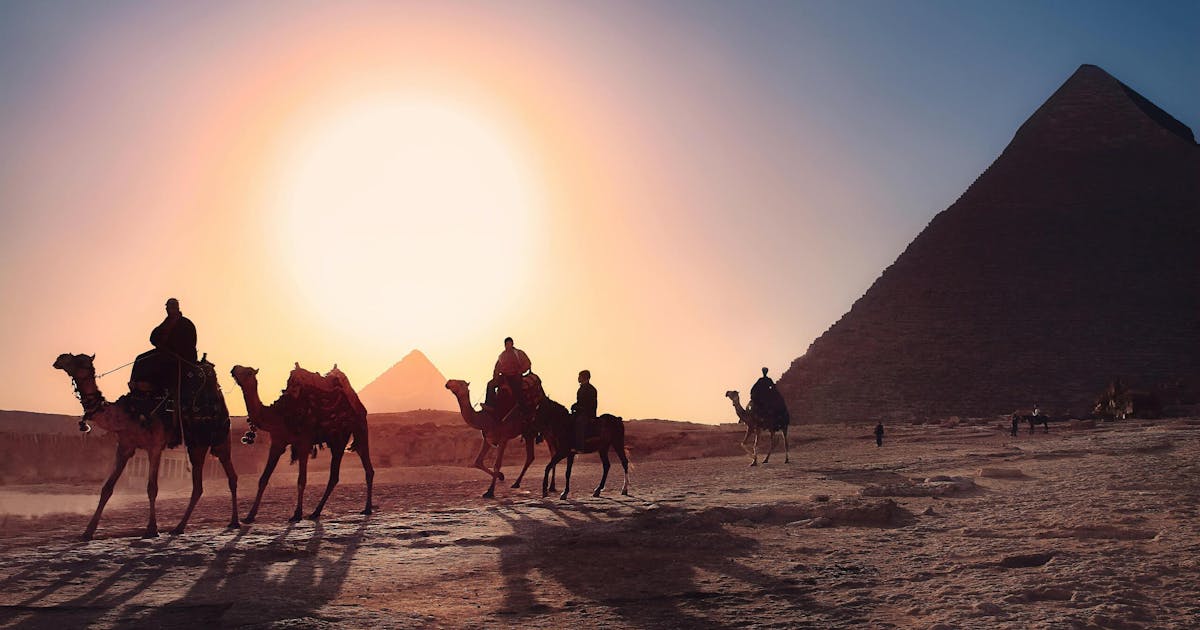
The complete guide for the Egypt visa from the US
Egypt visa for US citizens
In this blog, we'll cover everything US citizens must know about applying for an Egypt E Visa. We'll discuss the visa requirements, application process, processing times, and Egypt visa costs.
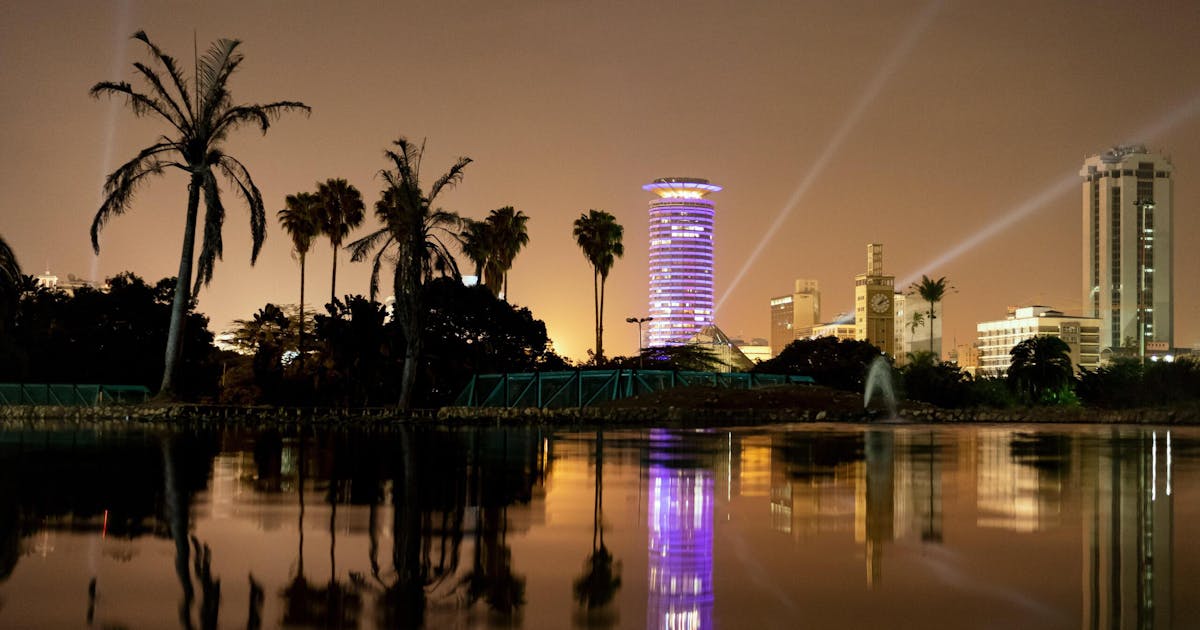
Kenya E-Visa Payment Issues And Solutions
Kenya E Visa Payment Issues
Tips for what to do when you experience issues with your Kenya e-Visa payment process.
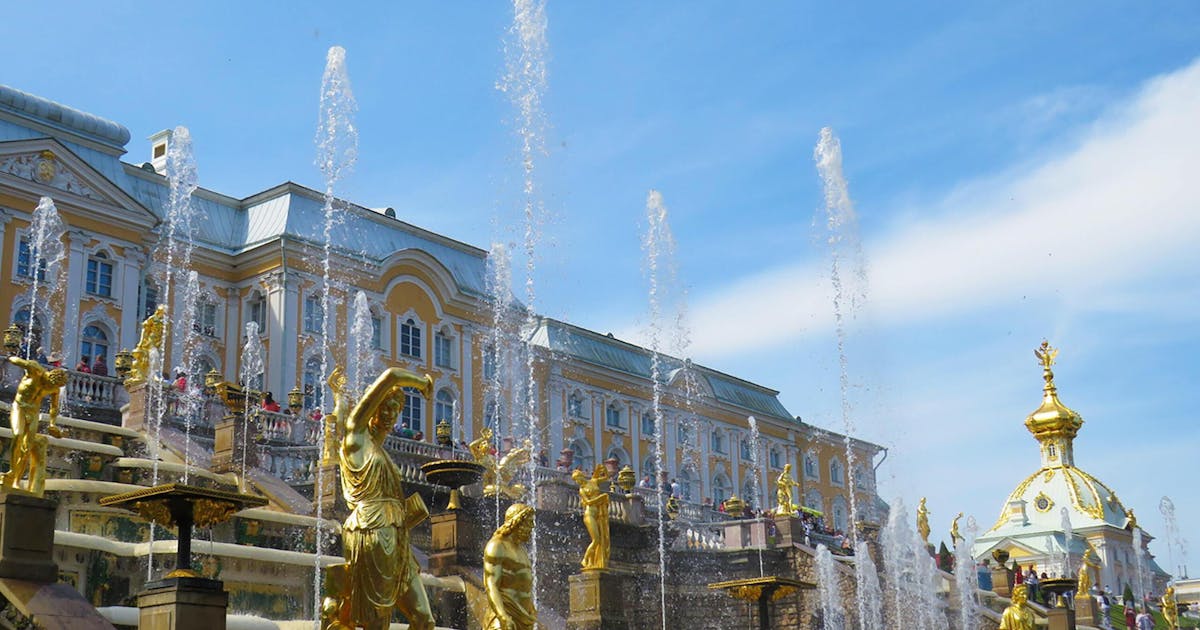
Get a Russian Visa for US Citizens Now - A Guide on How to Apply
Russian tourist visa
Optimise your travel experience! Get your Russian visa for US citizens easily with this helpful guide. The post includes the application process and requirements.

Apply for a Bahrain Visa from the US - Bahrain E-Visa Application Process
Bahrain visa for US citizens
Need a Bahrain visa? You're in luck! This post covers everything you need to know about the Bahrain e-visa including the application process and requirements.

Morocco e-visa: Requirements and Application 2024
Morocco e-visa
US citizens can travel visa-free to Morroco. Discover the Morocco e-visa for US Green card holders. How to apply, eligibility, requirements, and the e-visa fee.
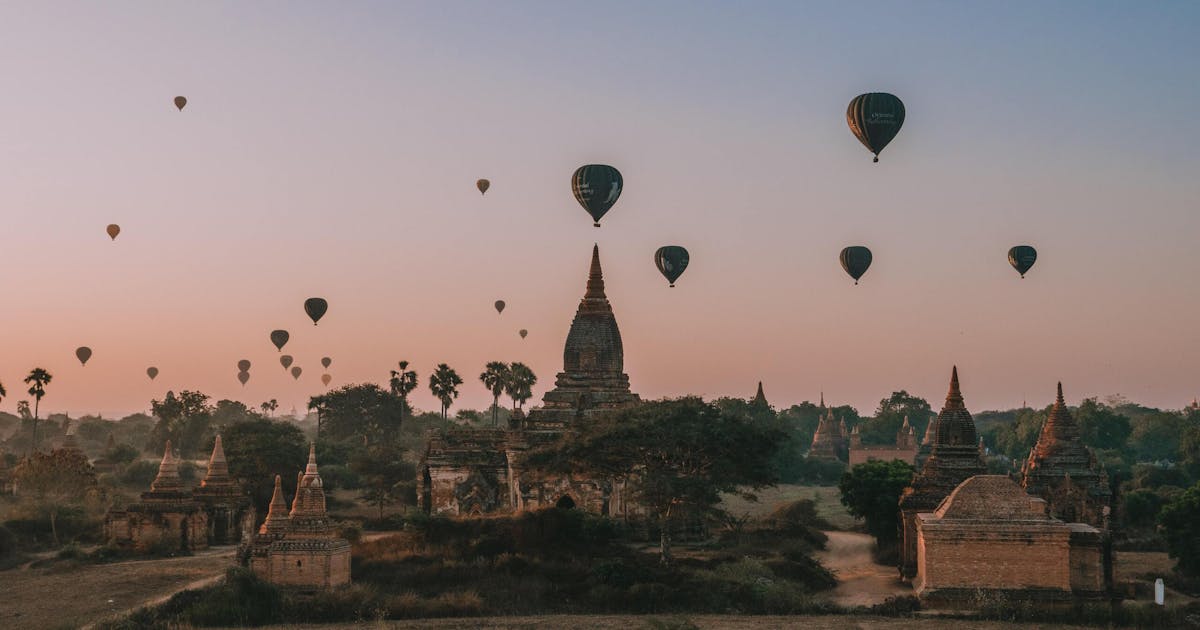
Myanmar e-visa— Application and requirements 2024
Myanmar visa for US citizens
US citizens must apply for a Myanmar Visa. You can apply for an e-visa that allows a stay of up to 28 days. Click to learn the most important visa requirements!
Instant Visas
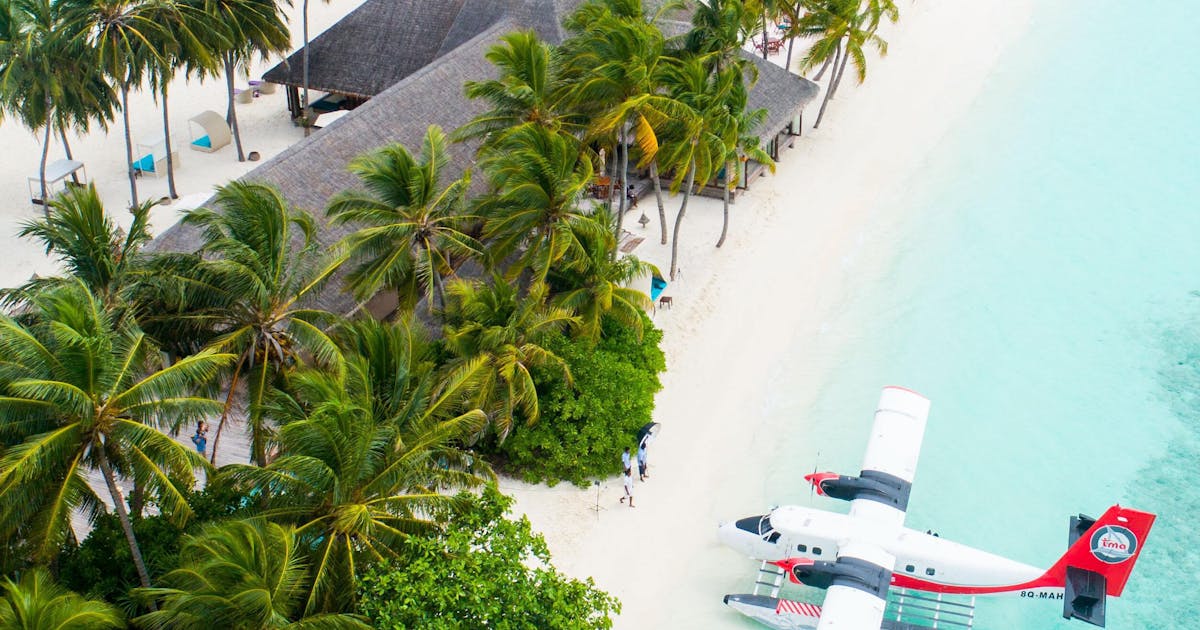
Maldives Tourist Visa: Entry and Visa Requirements to Maldives
Maldives Tourist Visa
In this post you'll learn everything you need to about the Maldives Tourist visa. Including the requirements, costs and other types of Maldives Visas you can apply for.

St Lucia Visa | US Citizens and US Green Card Holders
Travel To St Lucia
Discover the process of obtaining a St Lucia visa for US Green Card Holders. Learn entry requirements, application steps, fees, and visa validity.

Malawi visa for US Citizens
Malwai visa for US citizens
US citizens enjoy visa-free entry to Malawi. Learn about fees, visa-extension, US green-card holder requirement and more
Visa Guaranteed on
- Free E-Book
- Advertise with us
SantiagoChile.com The Ultimate Guide to Santiago – for Residents & Visitors

SantiagoChile.com January 27, 2015 Transportation 30,962 Views
There are plenty of words that can be used to describe Santiago, but there’s one that no one can argue with: it’s vast. This big, sprawling metropolis is full of different pockets of activity, and chances are, as a tourist, you’ll want to check out a lot of them. This requires quite a bit of moving around throughout the different zones of the city. Thankfully, Santiago is home to a relatively efficient and easy-to-use public transportation, consisting of metros and micros (buses). Once you’ve used each a few times, you’ll feel like a pro. But one thing you definitely need in order to master these modes of transit is a bip ! card.
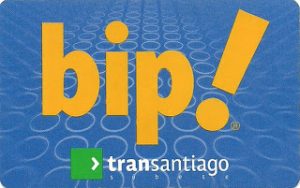
A bip! card is a little blue card that looks similar to any credit or library card. The card is named for the sound it makes—a short beep when you pass it over the scanners in the metro stations or on the buses. Users charge the cards with funds and then use them to easily enter the metro or micros . On the metro, one has the option of either using a bip ! card or buying a one-voyage pass. However, in order to run the bus, a bip! card is essential, as the vast majority of buses do not accept cash .
Bip! cards can be purchased at any metro station. The cards themselves cost $1,500. CLP and must be loaded with an initial credit of at least $1.000 CLP. After this, you’re ready to go—just scan the card on the yellow machines and it will subtract credit from your balance. The card can be used for more than one person —just scan it twice. There are several ways to add money to the card. Perhaps the most common is at the ticket counter in any metro station. However, many metro stations also have automated machines for adding credit with service in English and Spanish. The minimum recharge is $1.000 CLP , and the maximum balance allowed on any bip ! card is $25.500 CLP.
Micros always cost $640 CLP per trip, and the metro ranges from $ 610 CLP to $720 CLP depending on the time. If you ride the bus then transfer to the metro within 60 minutes, you will just be charged the difference in fare . Likewise, if you switch from the metro to the bus, you will not be charged anything additional. The bip ! card doesn’t save passengers any money—just a lot of time . By adding several thousand pesos at a time, you can skip the sometimes-agonizing lines at the metro ticket counters.
Keep an eye on your card, as there isn’t much you can do to reclaim your credit if your card is lost or stolen . The only real option here is the personalization of your card. For $2.550 CLP at any client services office, you can have your card personalized with your name and a code. This code can be used to deactivate a lost card or reactivate a found one, with a $300 CLP fee each time. If you lose a personalized card, you can also use this code to reclaim the remaining balance. Unfortunately, there’s not much than can be done with your bip ! card upon leaving Santiago. Transantiago doesn’t currently offer recycling of the cards, and unless you’ve personalized the card, you can’t reclaim your balance. As such, it is advisable to add money in smaller increments toward the end of your stay.
About SantiagoChile.com
Related Articles
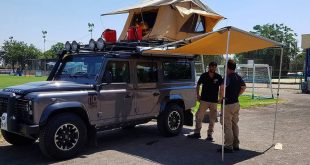
How to buy a car in Chile
May 30, 2017
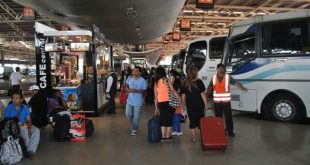
San Borja Bus Terminal
September 10, 2015
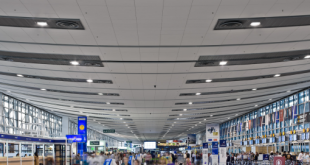
Santiago Airport Transport Information
October 22, 2014
SlowpokeTravel
No Hurry, Less Worry, And How To Get There
How To Use The Metro and Bus in Santiago
Santiago Chile has one of the largest and most efficient metro systems in the world, and it’s an easy an inexpensive way to explore the city. Even with our limited Spanish, Buck and I used the metro system extensively during a 6-week visit. Check out all the info below to discover how to use Santiago’s public transportation system successfully. We also made this video that shows you step-by-step how to buy and use a Santiago transit BIP Card and how to navigate the Santiago subway system.
How to Buy and Use a BIP Card
To use the Santiago public transportation system you will need to purchase a BIP card and then load it with money for fares. The system includes the metro, many buses and some trains. If you have visited the city before, be aware that you can no longer buy individual metro tickets, you will need to buy a BIP card.
You will have to use cash when buying a BIP card, unless you happen to have a Chilean credit card. Credit cards from foreign banks cannot be used for BIP purchases. You can purchase the BIP cards at a manned kiosk within any of the metro stations. For our January 2019 trip, each BIP card cost $1550 CLP.
The BIP fares differ slightly depending on when you ride. The following pic provides the fare categories. During our trip, the fares went up. Before your trip, you can always check the fares . If you place $1600 CLP on your card, that will cover two rides during peak hours.
Paying the price of a single BIP ride covers you for 2 metro or bus transfers, but the transfers must occur within 120 minutes of your initial BIP swipe.
Outside of the metro stations, there are also self-serve BIP machines at select locations around the city .
Besides using the self-serve machines within each metro station, you can check your BIP card balance and transactions on-line , without establishing an account. You just need your card number.
How to Use The BIP Card On The Metro
Your loaded BIP card will work on all the metro lines.
This is the metro map found in each of the metro stations and trains. As you can see from the map, the metro will take you to many parts of the city, but it does not go as far as the airport.
If you don’t have the metro map with you, Google Maps includes a clearly marked “M” for each of the metro stops. As you are exploring the city on foot, you can identify a metro station by the three red diamonds outside the entrance, as demonstrated by our lovely hand model in this pic.
How to Use The BIP Card On The Bus
Besides all the metro stops, your BIP card will work on the Transantiago bus system. At the time of our visit, Transantiago is a network of 8 different bus systems. On the BIP-friendly buses, there are yellow boxes in the front of the bus. Just place your card over it until you hear a BIP (beep) sound. Check here to familiarize yourself with the BIP-related bus system.
None of the Transantiago buses go to the airport. We used the separate Centropuerto bus line to get from the airport to the city’s bus and metro lines.
Are Pickpockets A Problem On The Santiago Metro?
Unfortunately while using Santiago’s metro system, just as in other large cities around the globe, you need to be aware of your belongings at all times, and make sure that they are secure. We dress pretty casual, maybe even frumpily, and wear no jewelry or bling, nevertheless, we can’t help but look like tourists, and being a tourist makes one a potentially desirable target for crinminals.
We know of at least 2 instances where pickpockets attempted to steal from us during our 6-week visit to Chile. In both occurrences, on a crowded metro train, the thief used a strategically-placed bag and coat to covertly reach for our belongings. In at least 1 instance, there were 3 or more pickpockets working together, so it is key that you be aware of your surroundings at all times, but especially on a very crowded metro.
That being said, the metro was our transport of choice, and is one of our favorite things about the city.
Traveling To Santiago?
We were fortunate enough to land a great house sit for most of the time we visited Santiago. House sitting is a super affordable and exciting way to travel, especially if you love animals, because house sitting almost always involves pet sitting. We absolutely love our house sitting experiences , and highly recommend you check it out as a possible tool in your travel toolkit.
You can find a variety of affordable lodging options online, especially if you are booking accommodations for an extended period of time. We often use AirBnB, Booking.com, or Tripadvisor when researching the cost of lodging options. You can check here for current apartment rental options in Santiago, Chile on Tripadvisor Rentals.
We appreciate you watching our videos!
Thanks for Checking out our stuff. We hope you found it useful, and we wish you health, happiness and great luck in your future travels!
We include affiliate links for products and services on our website. If you make a purchase after clicking on our links, we may earn a commission which helps us produce more videos and drink more coffee :^) We are a participant in the Amazon Services LLC Associates Program, an affiliate advertising program designed to provide a means for us to earn fees by linking to Amazon.com and affiliated sites.
Go ahead, share it!

IMAGES
VIDEO
COMMENTS
Entry and Exit Requirements. U.S. citizens entering Chile must have a valid passport. U.S. citizens traveling to Chile for recreation, tourism, business, or academic conferences do not need to obtain a visa prior to their arrival in Chile. A Tourist Card will be issued for a stay of up to 90 days. An extension of stay for another 90 days is ...
Citizens of the United States, Canada, the United Kingdom, Australia, and New Zealand need only a valid passport to enter Chile. Chile charges a reciprocity fee upon entry for Australians and Mexicans. Before entering Chile, you'll need to fill out a tourist card that allows visitors to stay for 90 days. Do not lose this card, as you will need ...
Upon arrival, you will receive a Tourist Card (Tarjeta de Turismo) valid for up to 90 days, which you can extend for another 90-day period by paying $100 US at the Chilean Immigration Office. You must return the Tourist Card upon departure. Failure to return it may delay your departure from Chile. If the Tourist Card is lost or stolen, ...
If you lose the tourist card, you can request a free copy at the website of the Policía de Investigaciones de Chile (PDI), at the nearest PDI office or at the Santiago airport (though you should allot at least 45 minutes extra at the airport to deal with this). Residents of visa-free countries can extend the tourist card for an additional 90 days by filling out a form online (in Spanish) and ...
Inicio. Travel to Chile Plan. Updated the day 17 January, 2024. Entry Requirements. Frequently asked questions. Check here the Travel to Chile Plan for all the information on the requirements and protocols to enter the country.
A Chile tourist visa allows you to stay in Chile for a short-term period for purposes such as: Tourism. Sport. Medical treatment. Business. Family/social visit. Religious. Any other purpose where you do not intend to set up residence or immigrate to Chile or undertake a paid activity. However, not everyone has to apply for a Chile visa for ...
Once you arrive in Chile, regardless of whether you are a visa-required national or not, you will receive a Tourist Card which states the number of days you are allowed to stay in the country. A tourist card is issued for up to 90 days but can be issued for less. If you overstay the permitted time, you will have to pay a fine.
The tourist card is valid for a stay of up to 90 days, a period which can be extended after application at the Chilean Immigration Office located at San Antonio 580, Santiago; telephone 56-2-2550-2469. All visitors are required to surrender the tourist card upon leaving Chile; failure to do so may cause delays.
Coffee: 2,500 CLP. Glass of Chilean wine: 4,000 CLP. Sandwich: 6,000 CLP. Empanada: 2,000 CLP. Average daily cost per budget traveler: 27,000 CLP to 50,000 CLP. A guide to daily costs in Chile, along with some tricks and tips to help keep more of those colorful Chilean pesos in your wallet.
You must carry your original passport. You must also carry all supporting documents in original. The visa officer will verify your documents and fix the visa stamp in your passport. You will have to make the visa fee payment. You will then have to give your fingerprints on 3 copies of the approved application.
U.S. citizens entering Chile must have a valid passport. U.S. citizens traveling to Chile for recreation, tourism, business, or academic conferences do not need to obtain a visa prior to their arrival in Chile. A Tourist Card will be issued for a stay of up to 90 days upon payment of a Chilean visa reciprocity fee, currently U.S. $160.
Here are the SimOptions e-sim card plans for Chile for 2024: 3 GB data for 30 days = $24.90 USD. 5 GB data for 30 days = $34.90 USD. 6 GB data for 15 days = $39.90 USD. 10 GB data for 14 days = $39.90 USD. Click here for more info or to order an e-sim card for Chile via SimOptions.
A tourist visa is the easiest method to enter Chile. This visa is free for citizens of many countries, and you have nothing to do before coming to Chile. You receive a 90-day visa while arriving at the airport or crossing a border. For some countries, though, you need to apply for a tourist visa in advance through the consulate of Chile in your ...
Step 2 - Attach electronic copies of all the required documents. Step 3 - Wait for the visa to be processed. Step 4 - Show up at the consulate/embassy. Step 5 - Pay the Chile visa fee. Payment of visa application fee is compulsory. Step 6 - Get your Chile visa.
What are the living costs in Chile? More information under Cost of living. Your ContactChile [email protected] +56 2 2264 1719 +56 9 7764 4148 ContactChile Intercultural Management Rafael Cañas 174, Providencia Santiago de Chile Mon - Fri 9 am to 5.00 pm. Questions about traveling to Chile, Visa, payment methods, Clothing, extension ...
Unlimited data, valid for 7 days for $27. Unlimited data, valid for 10 days for $34. Unlimited data, valid for 15 days for $47. Unlimited data, valid for 20 days for $57. Their Latin America eSIM works in 13 countries (including Chile), and they offer the following plan: 6 GB data, valid for 15 days for $44.
When travelling to Chile, you'll get a tourist card (paper) on arrival. You must keep the card and present it to immigration officials when departing Chile. You can request a new copy online if your tourist card is lost or stolen. For specific information, visit the closest International Police (PDI) Office. Entry into Chile
The average data usage can vary greatly depending on your specific usage. But as a general rule for Chile tourist SIM cards, 6GB will cover most travelers' basic usage for 5-7 days while 8-15GB is recommended for heavy data users visiting for under 1 week. 4. How Much Does a Chile SIM Card Cost?
Cost of the work permit as a tourist. For those wishing to work on a tourist visa, the cost of the tourist work permit is 1.5 times the price of the visa subject to a work contract. Cost of the permanent residency. The cost of permanent residency is 105.713 Chilean pesos.
How much does a Chile tourist visa cost? The Chile tourist visa fee depends on the applicant's nationality and the Chilean embassy or representation office processing the visa application. Once the application has been submitted, applicant will receive an email either approving or denying their visa request. If approved, the email will ...
Original Passport. Photocopy of your Tourism Card. You must apply for an extension at least 30 days before your current visa expires. Your Tourist Visa will be extended for 90 days if your application is approved. Also, the Chilean visa extension procedure costs around $100.
The minimum recharge is $1.000 CLP, and the maximum balance allowed on any bip! card is $25.500 CLP. Micros always cost $640 CLP per trip, and the metro ranges from $ 610 CLP to $720 CLP depending on the time. If you ride the bus then transfer to the metro within 60 minutes, you will just be charged the difference in fare .
For our January 2019 trip, each BIP card cost $1550 CLP. The BIP fares differ slightly depending on when you ride. The following pic provides the fare categories. During our trip, the fares went up. Before your trip, you can always check the fares. If you place $1600 CLP on your card, that will cover two rides during peak hours.